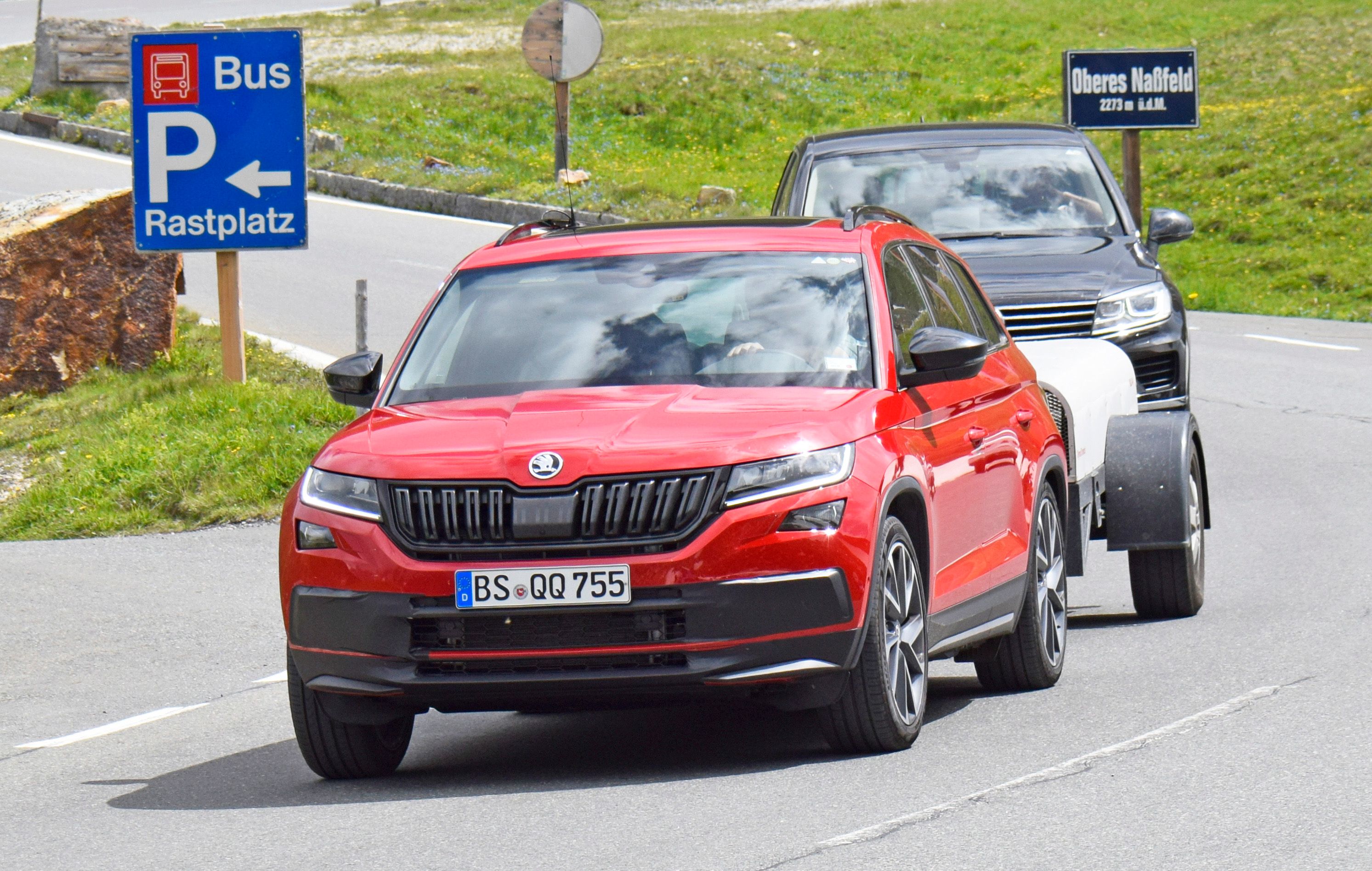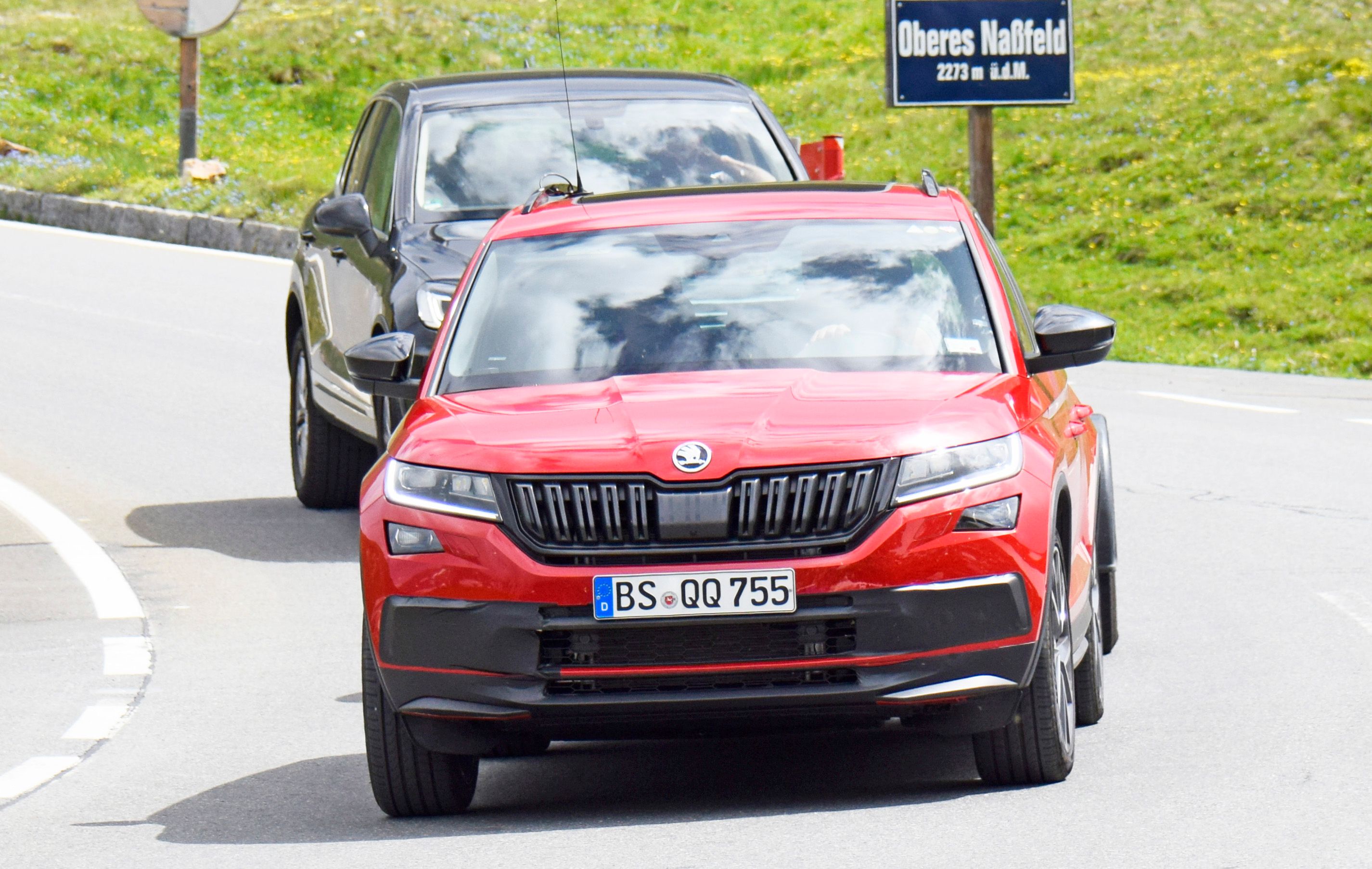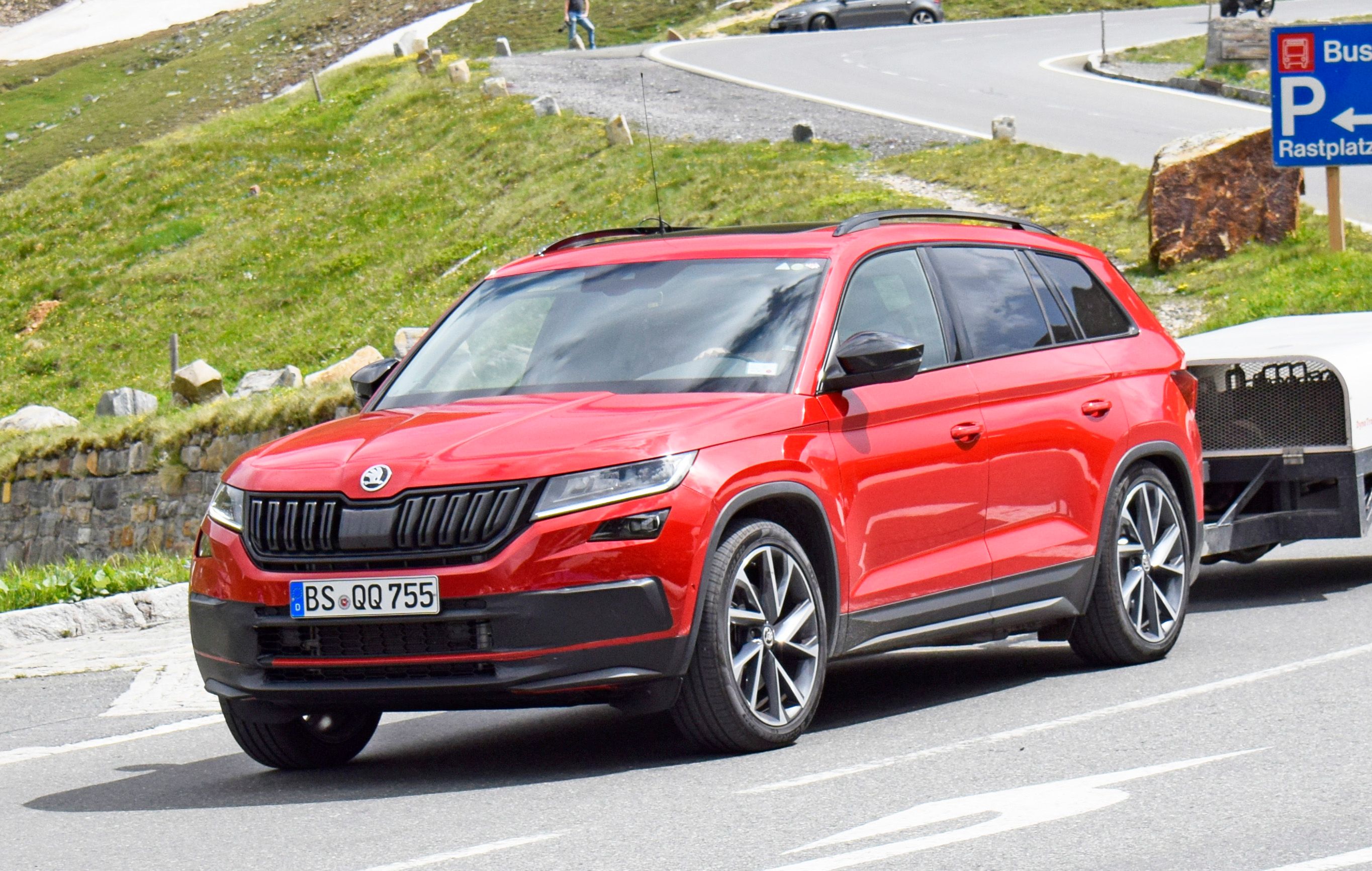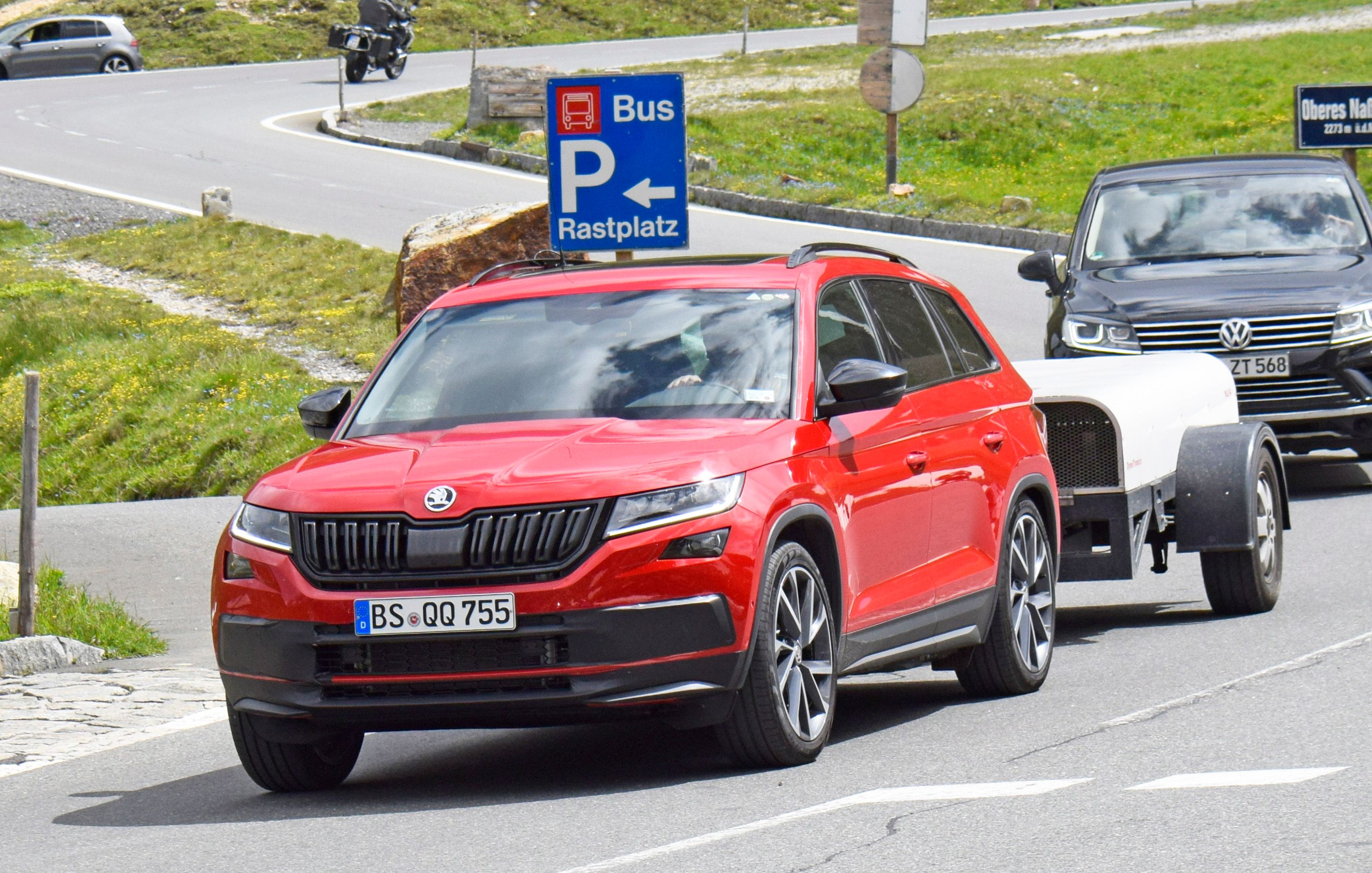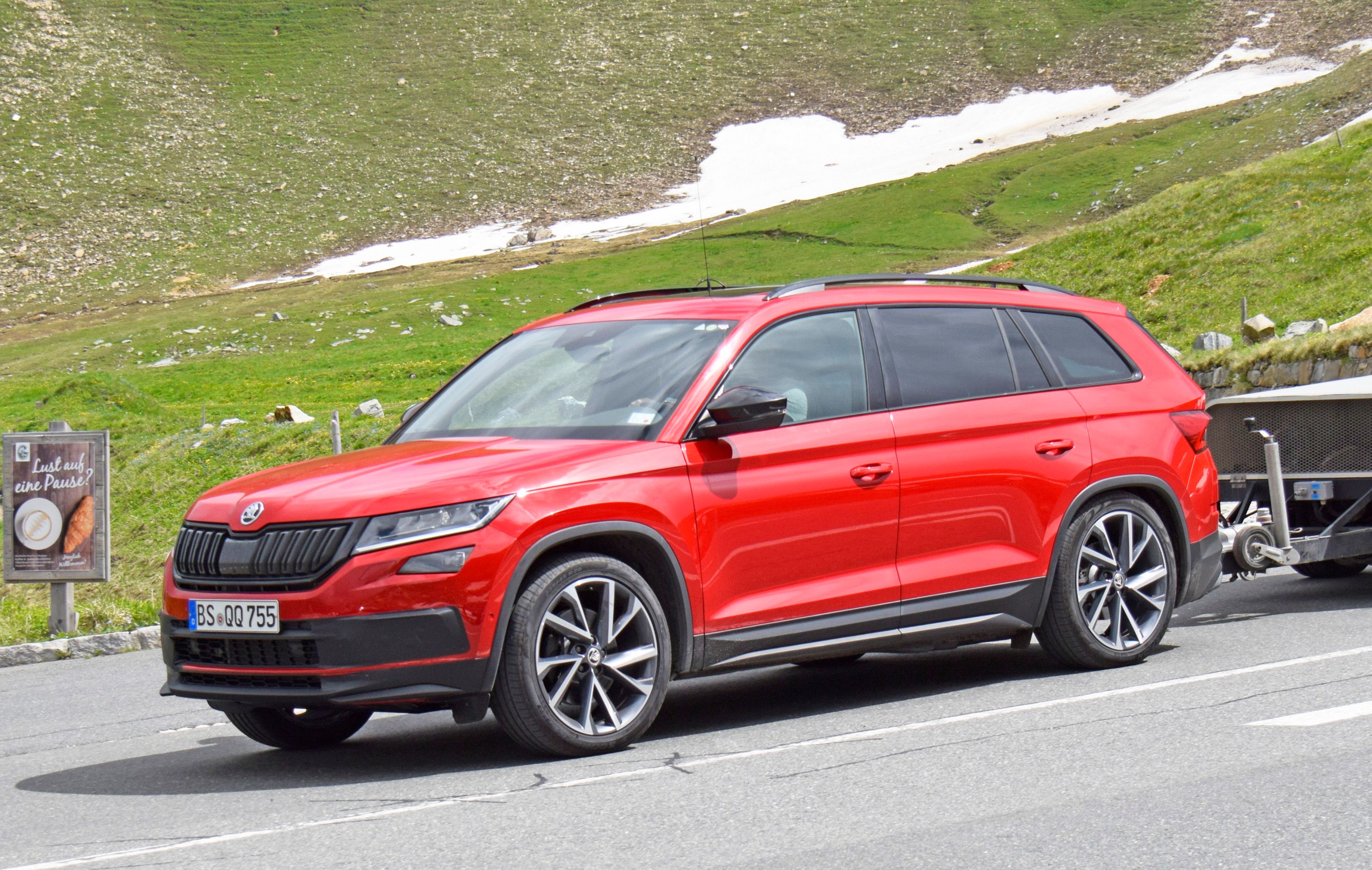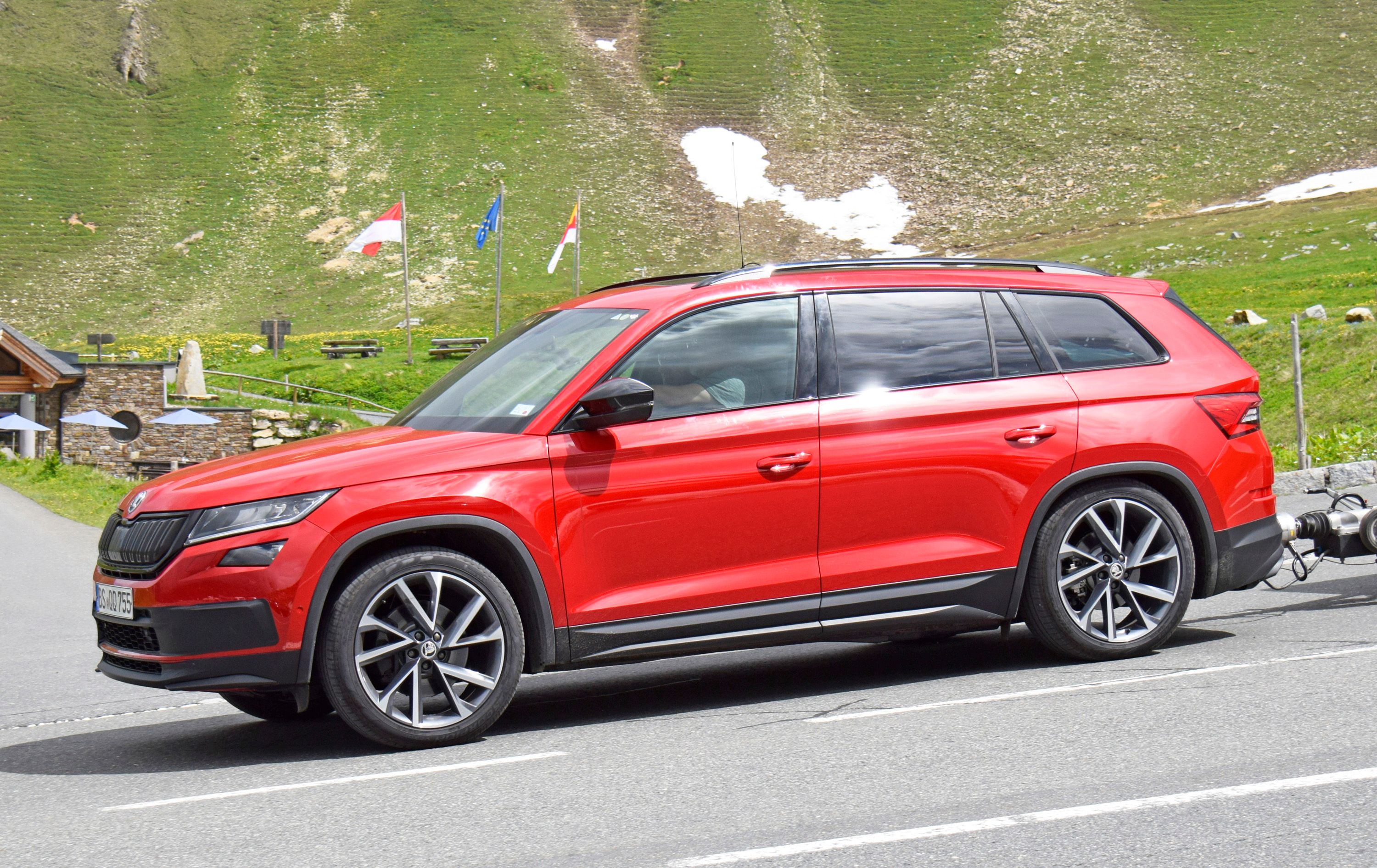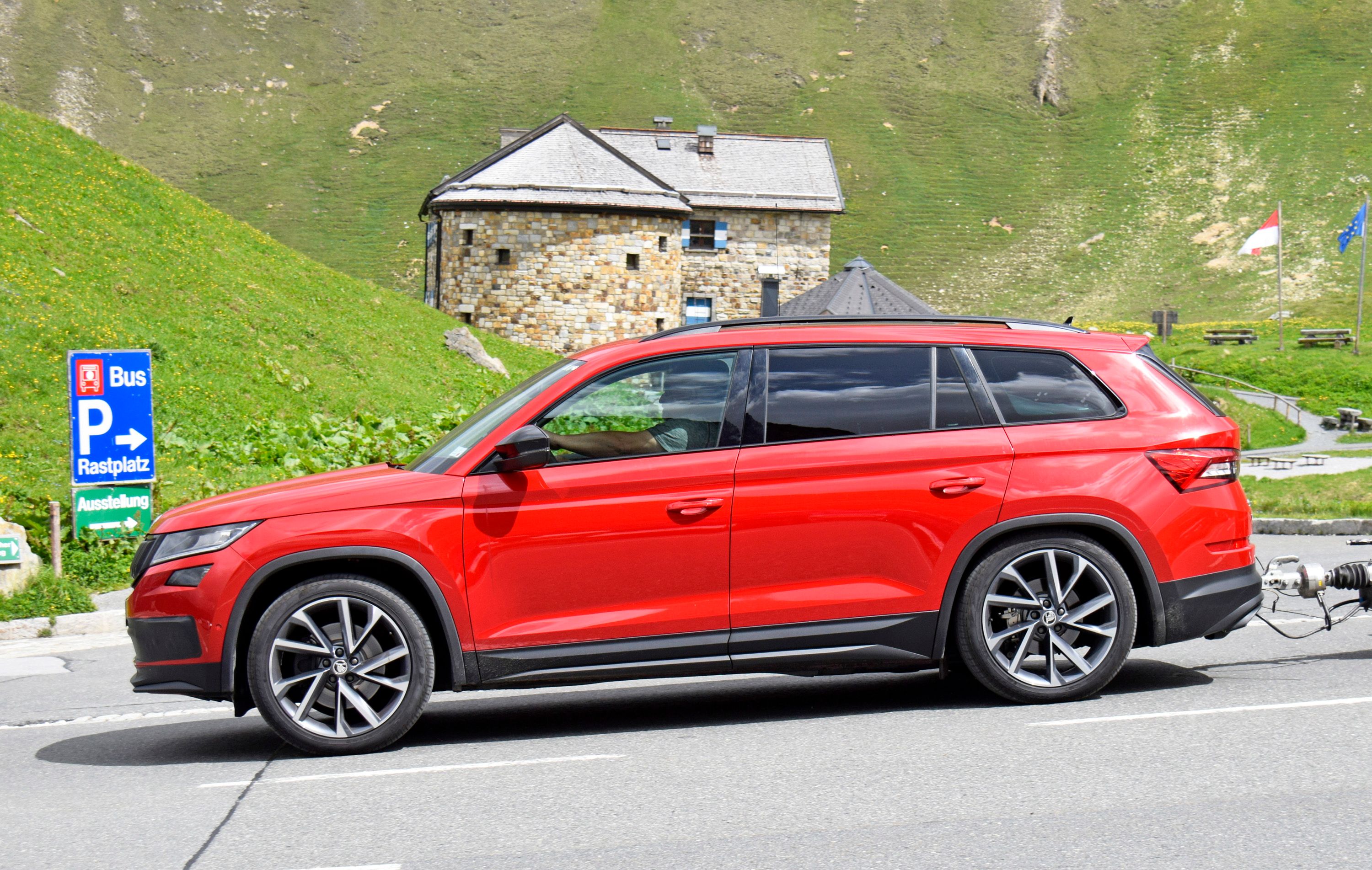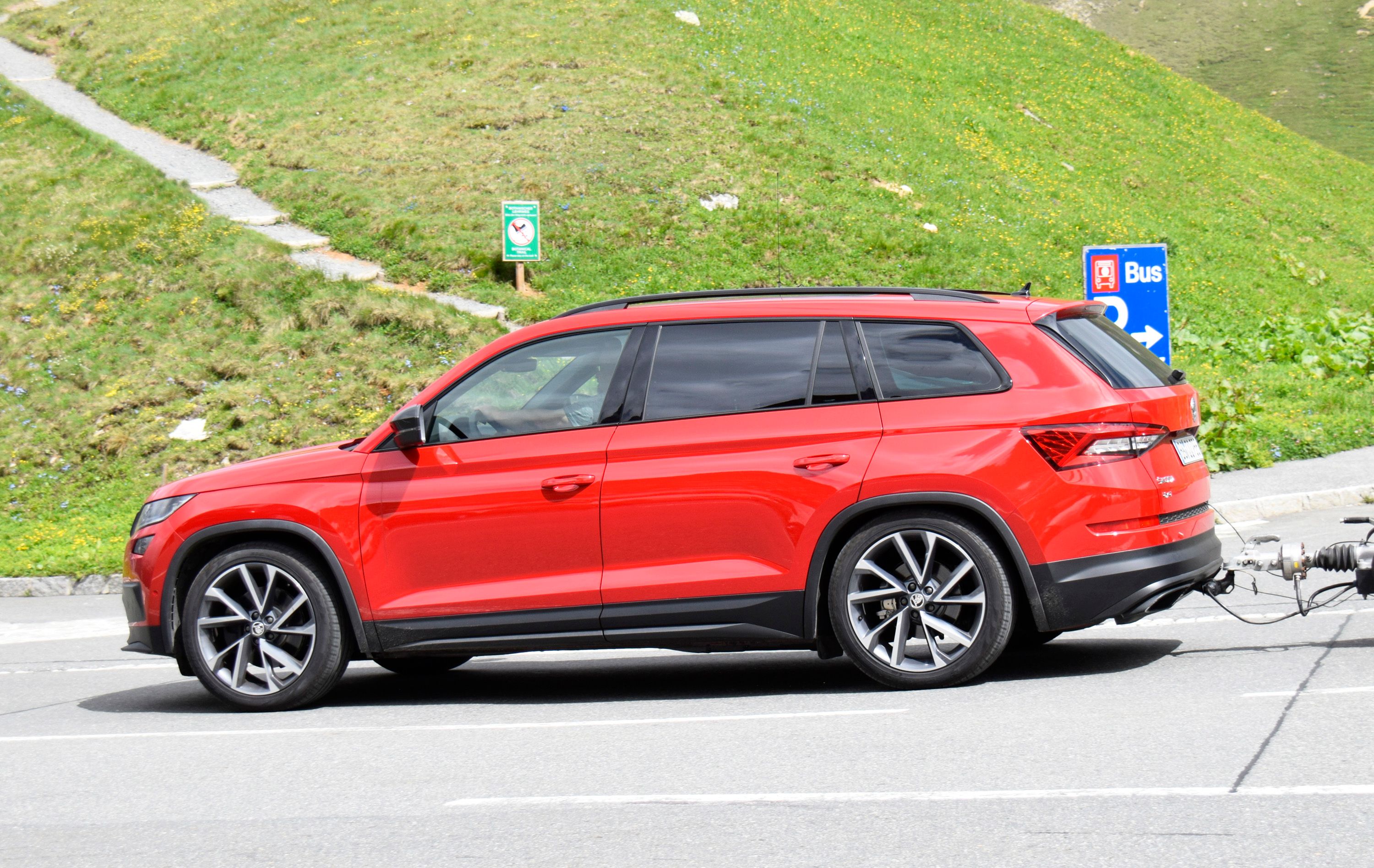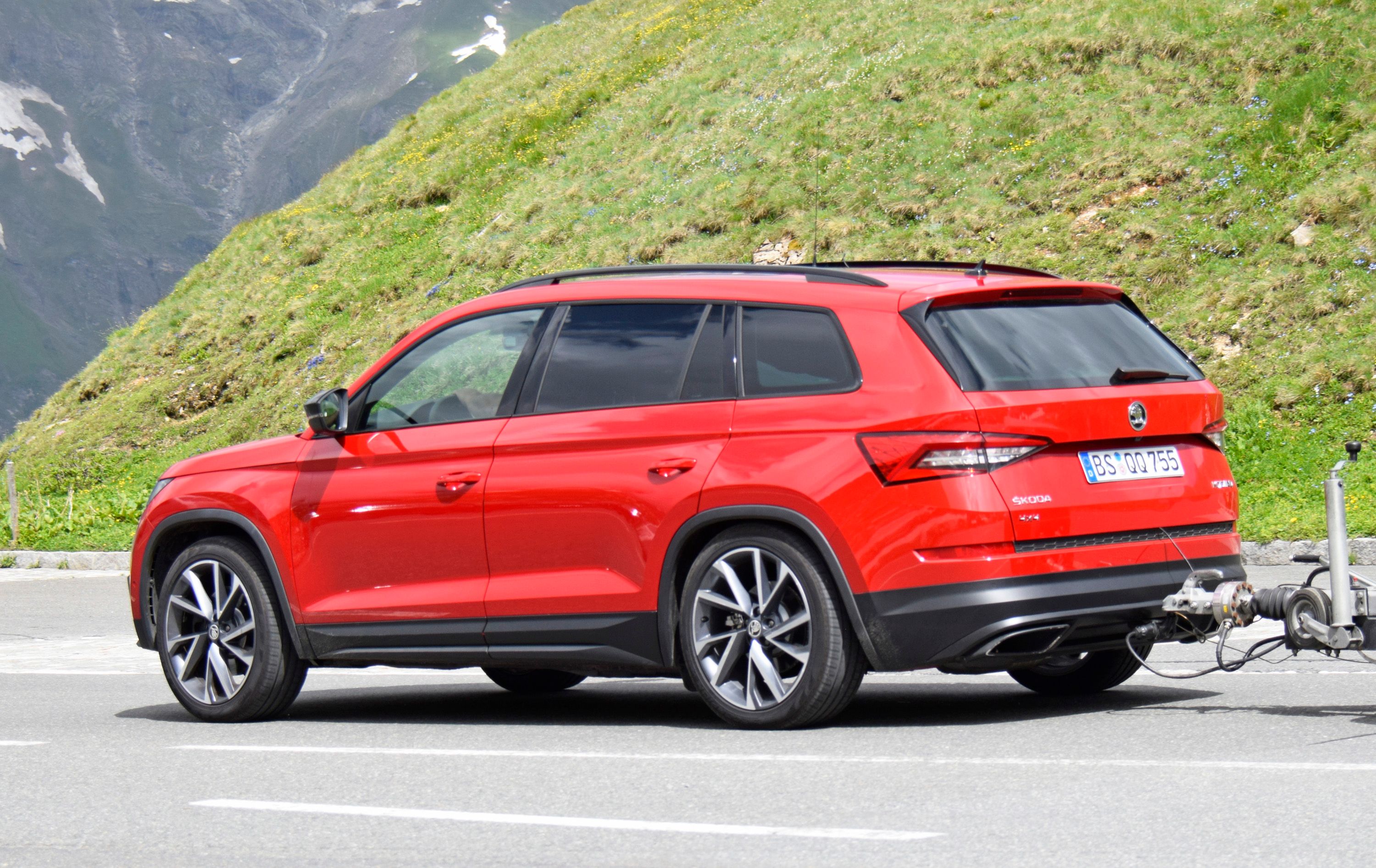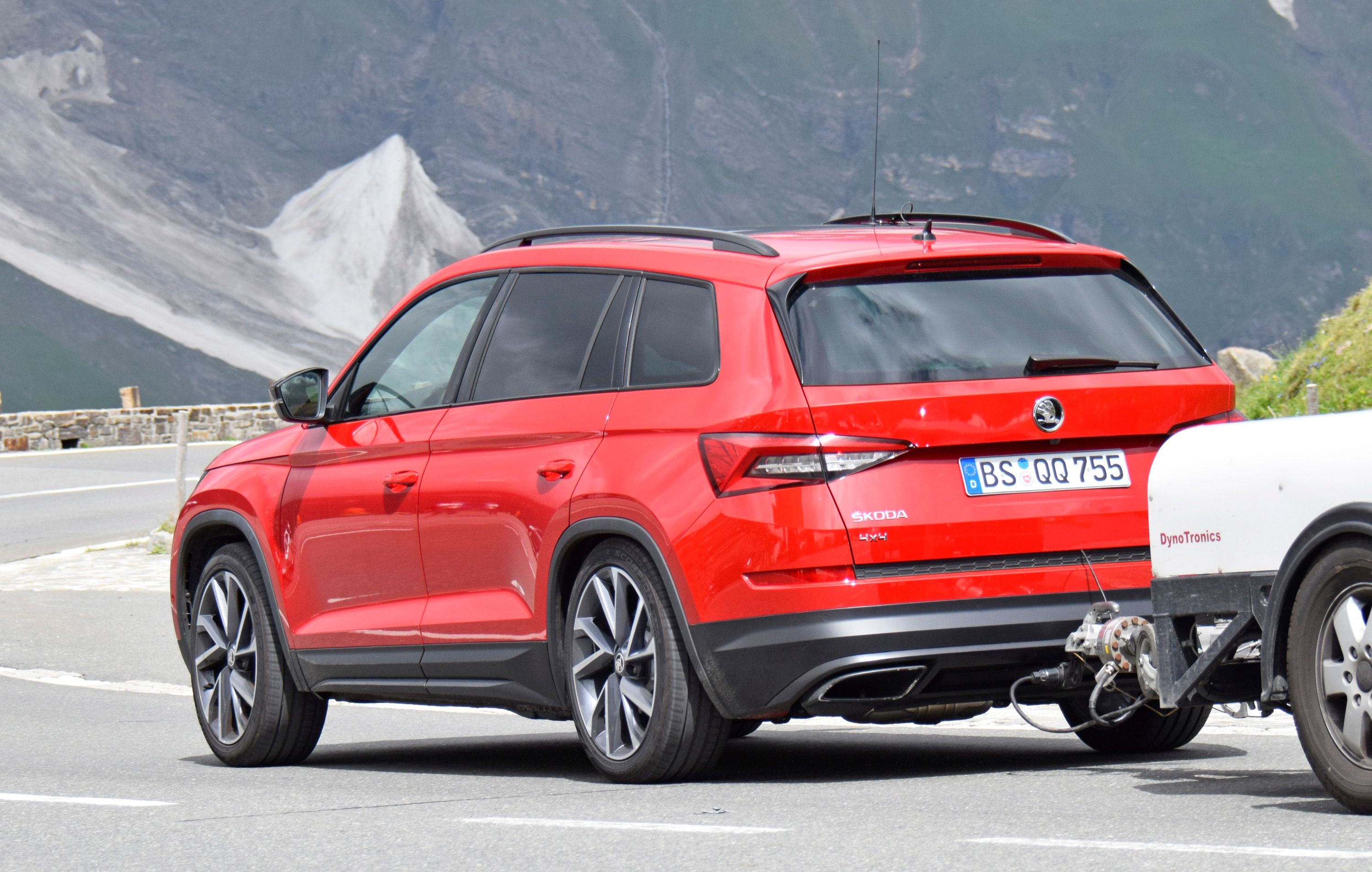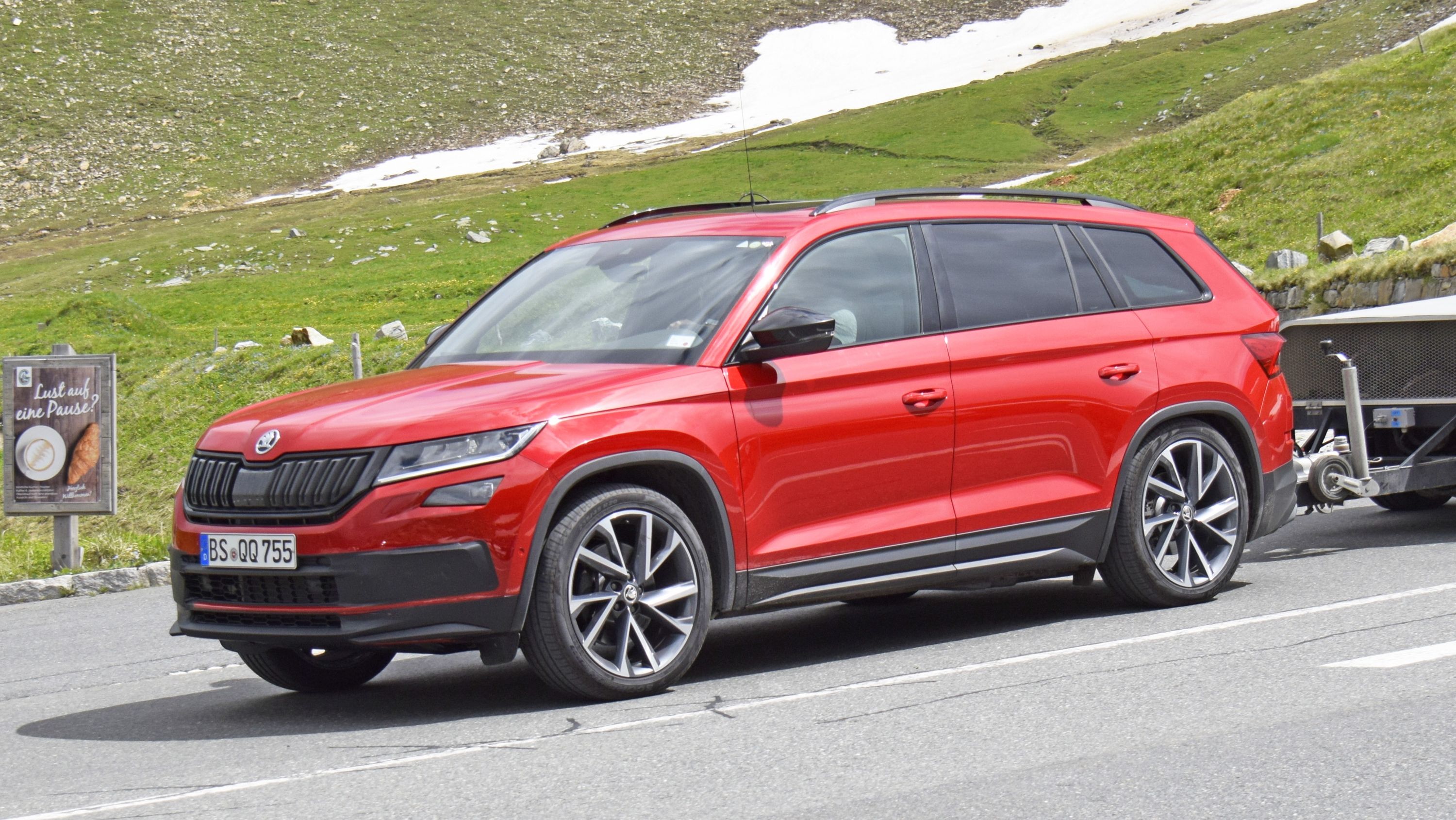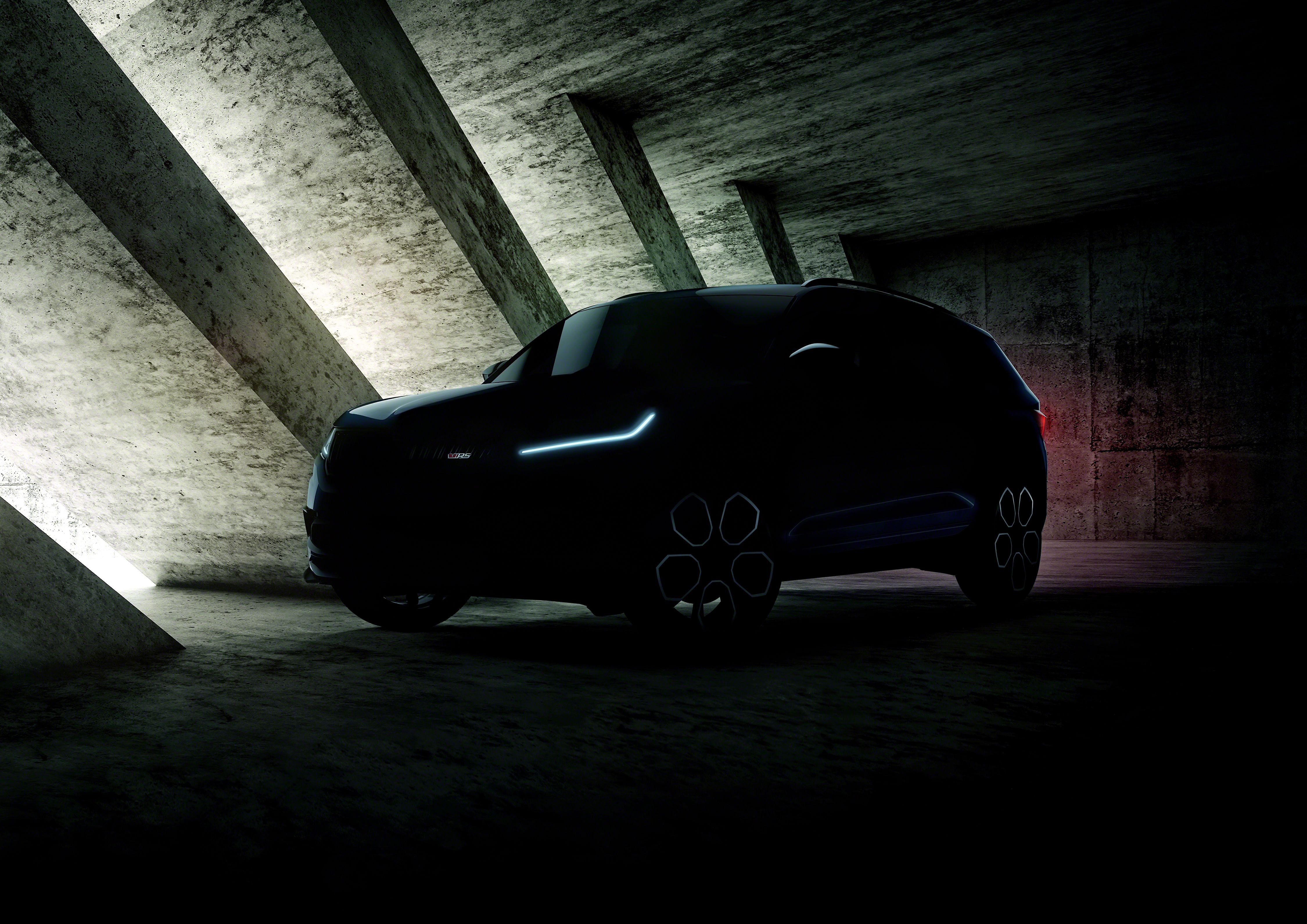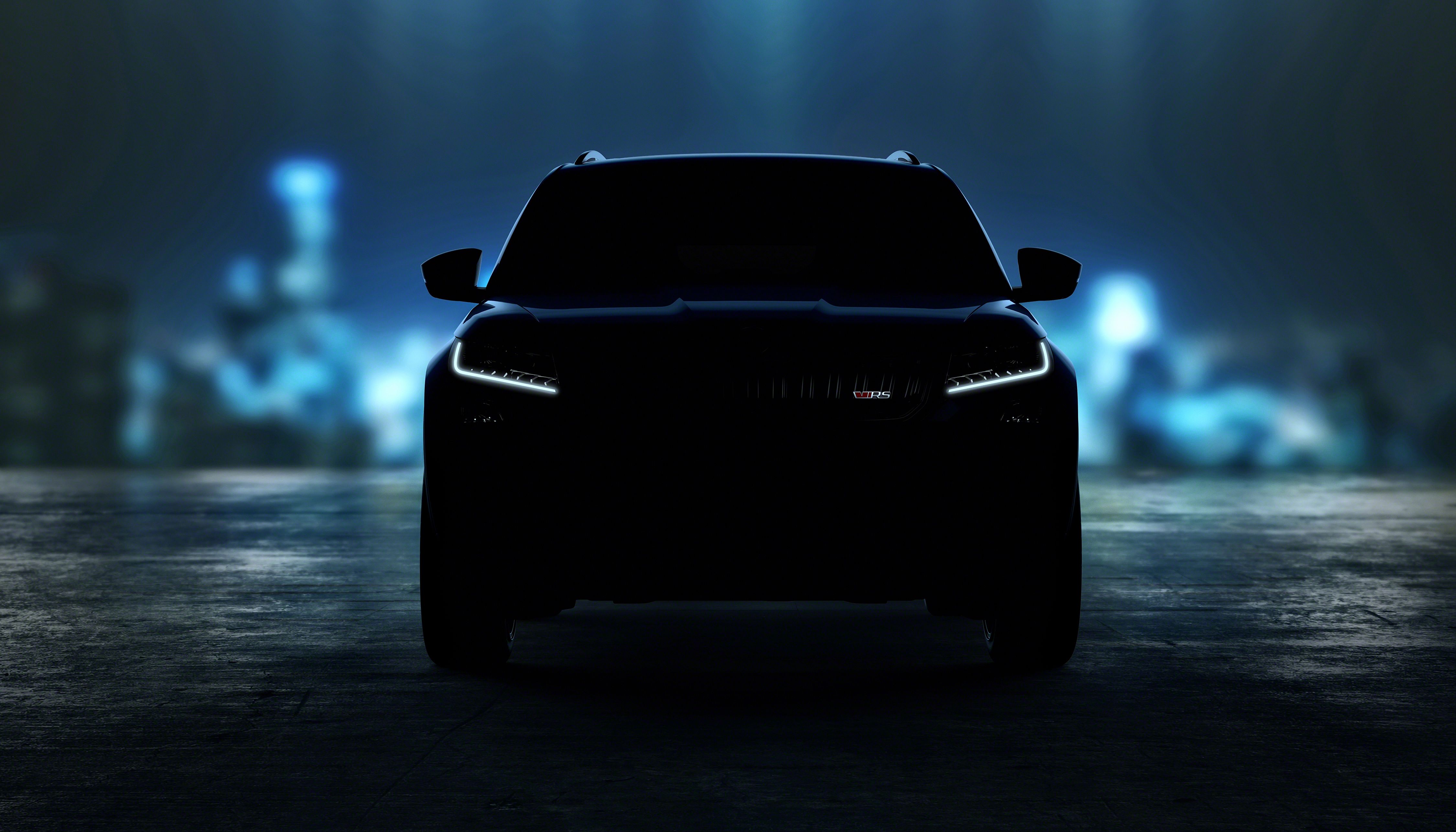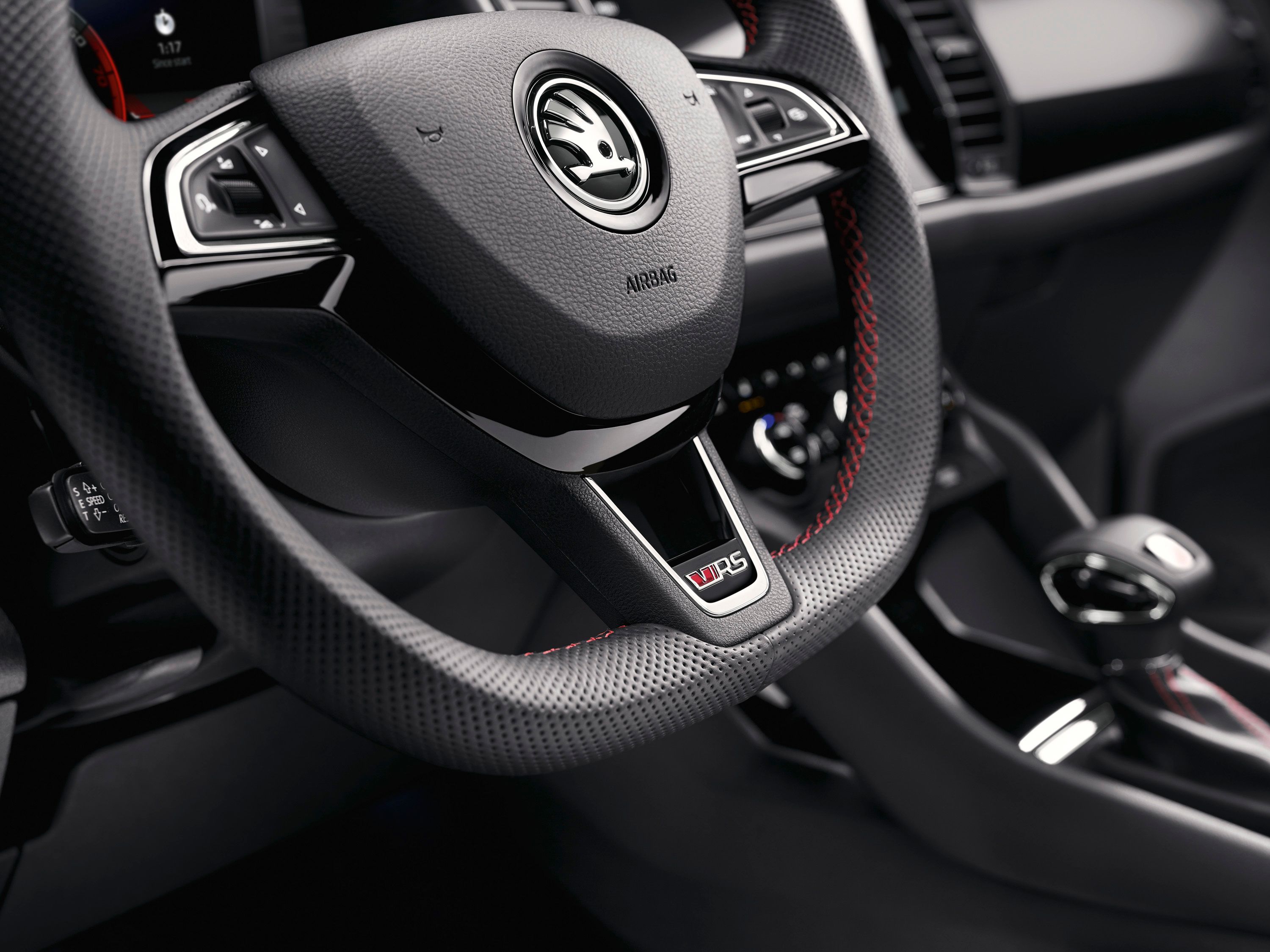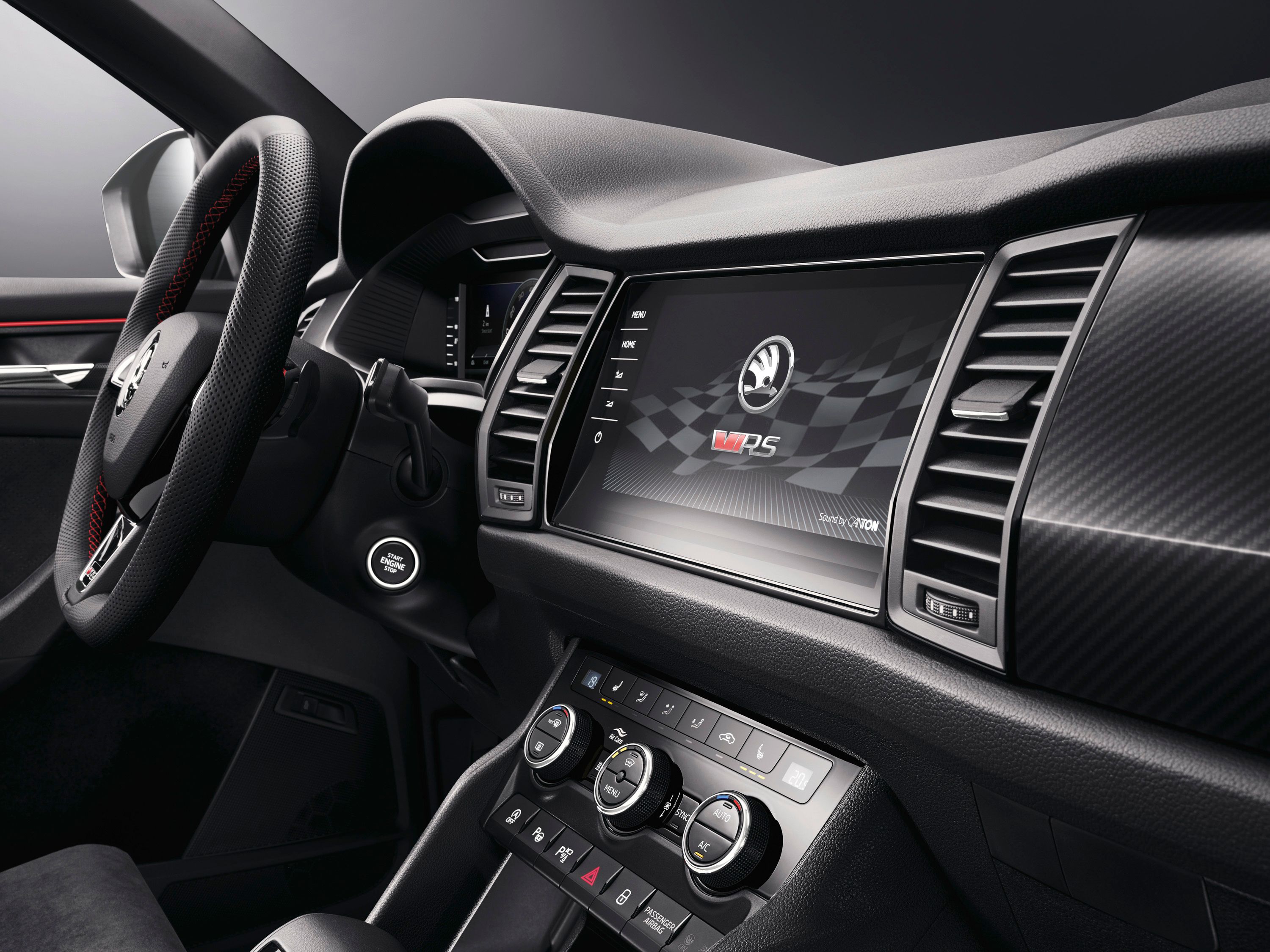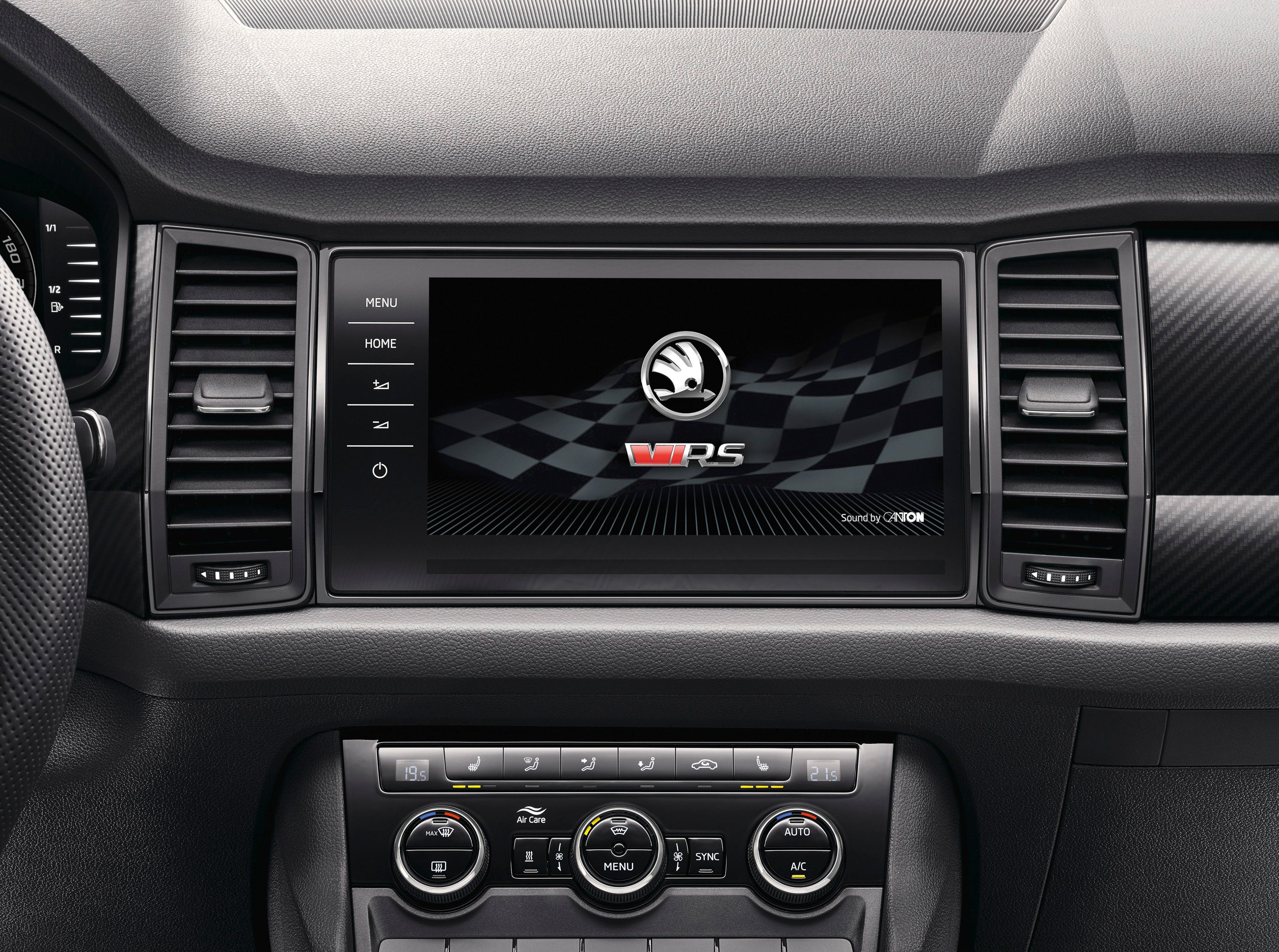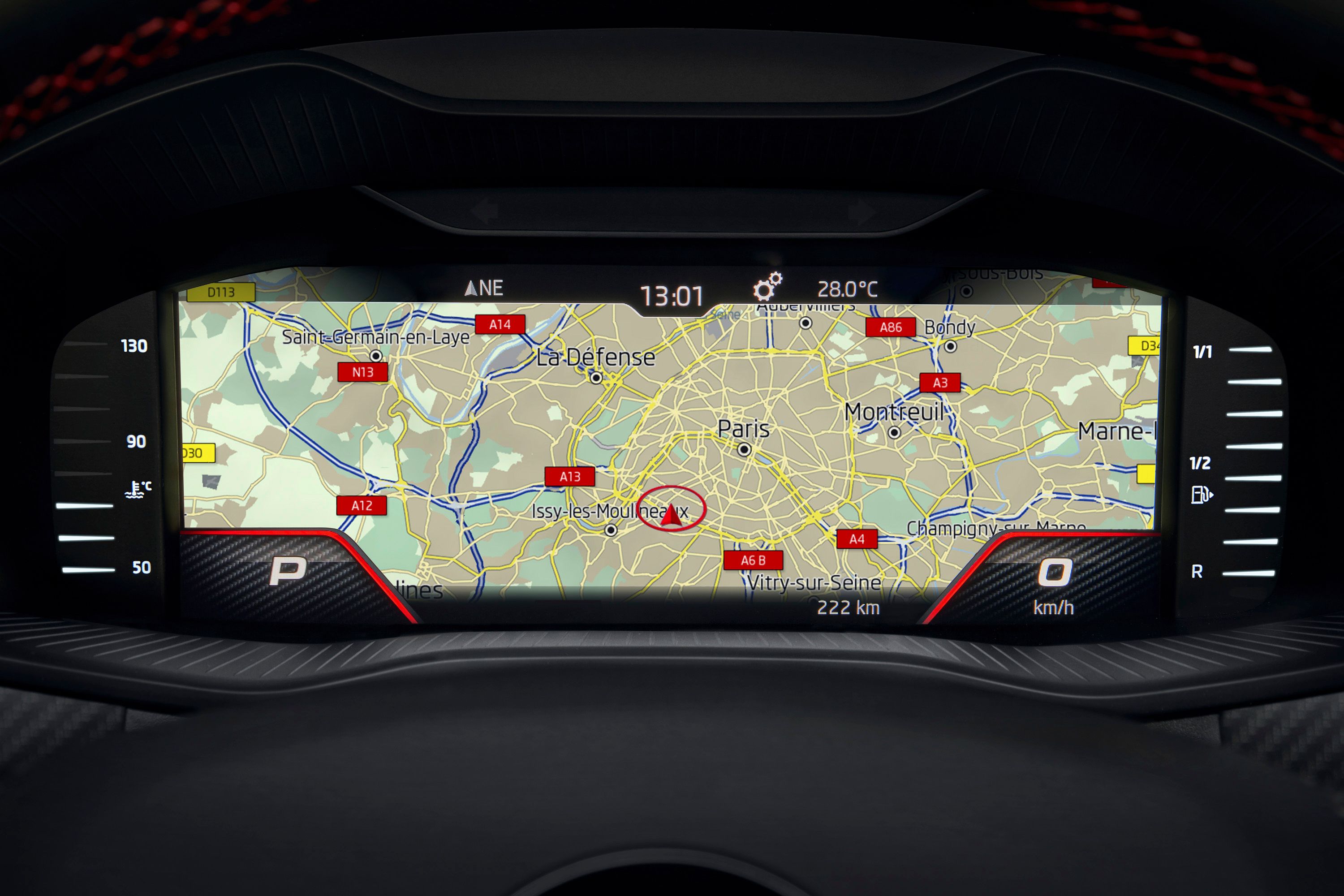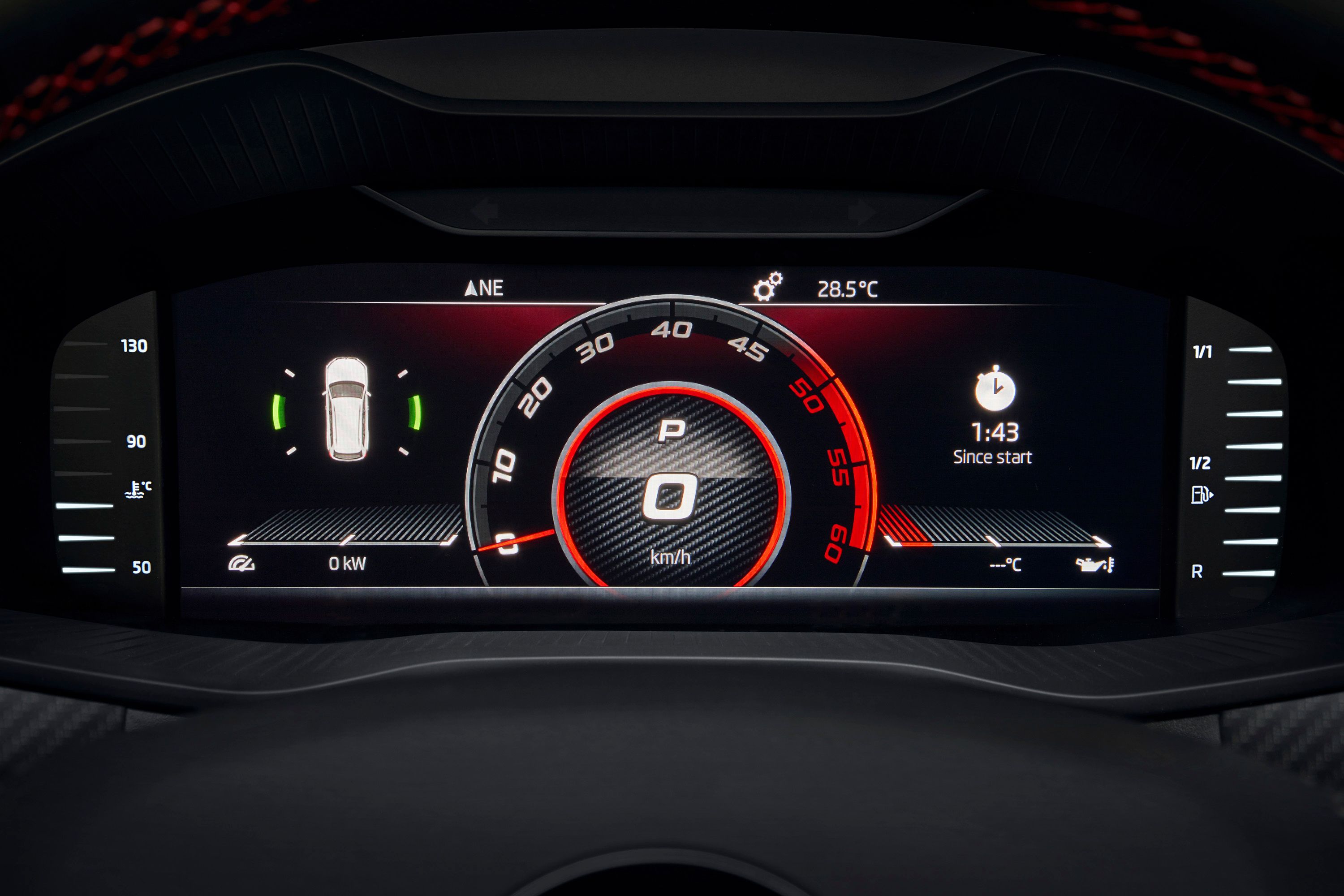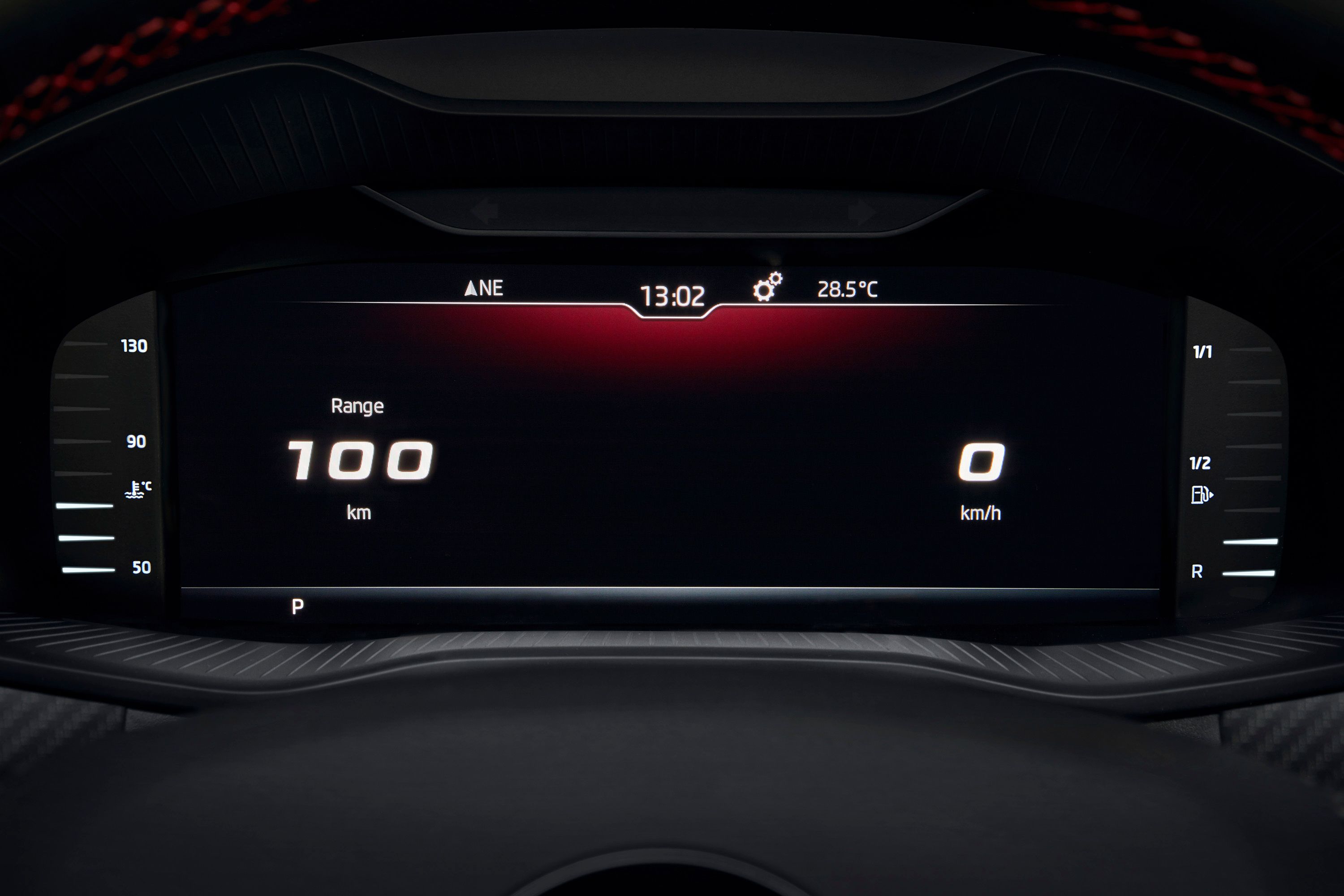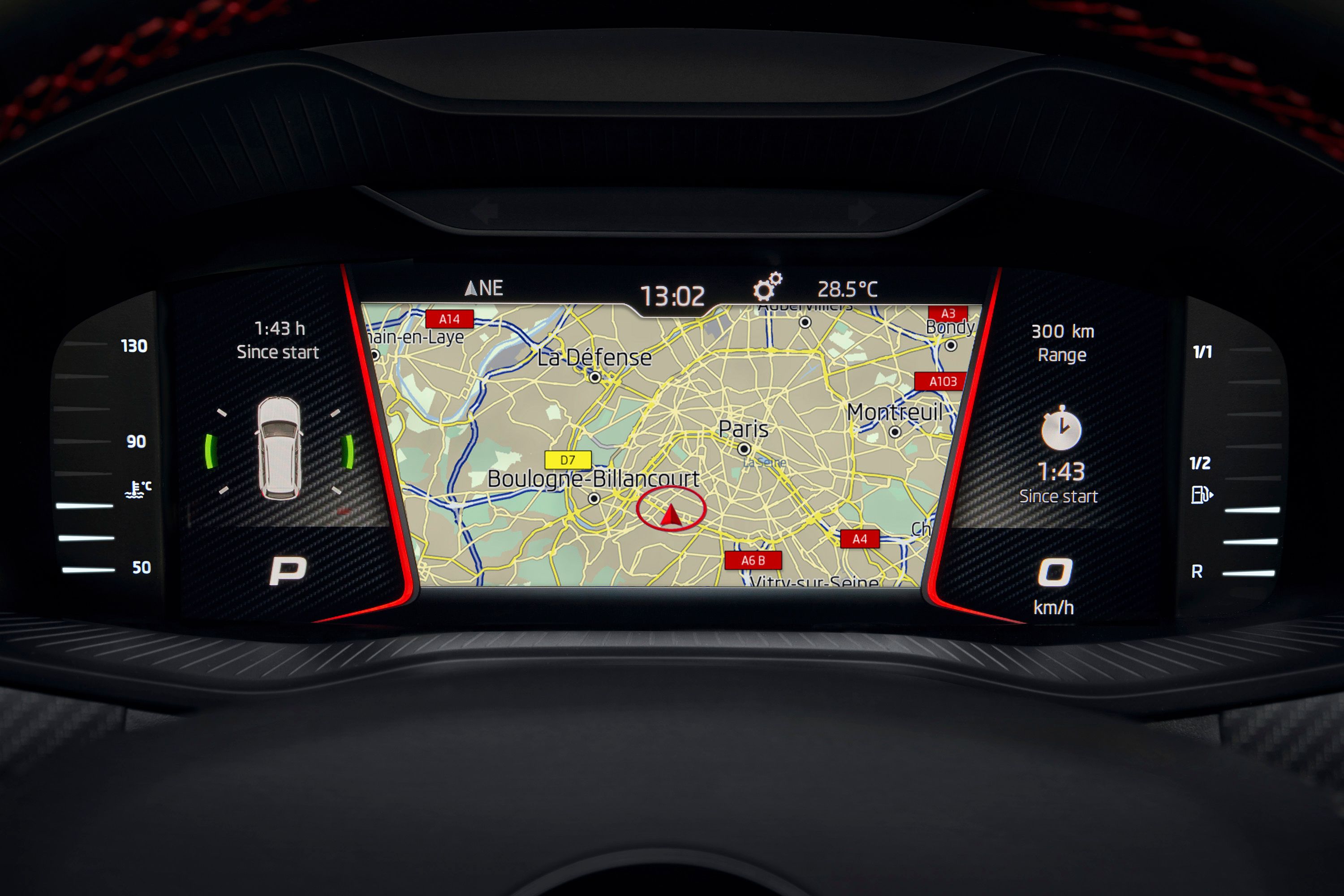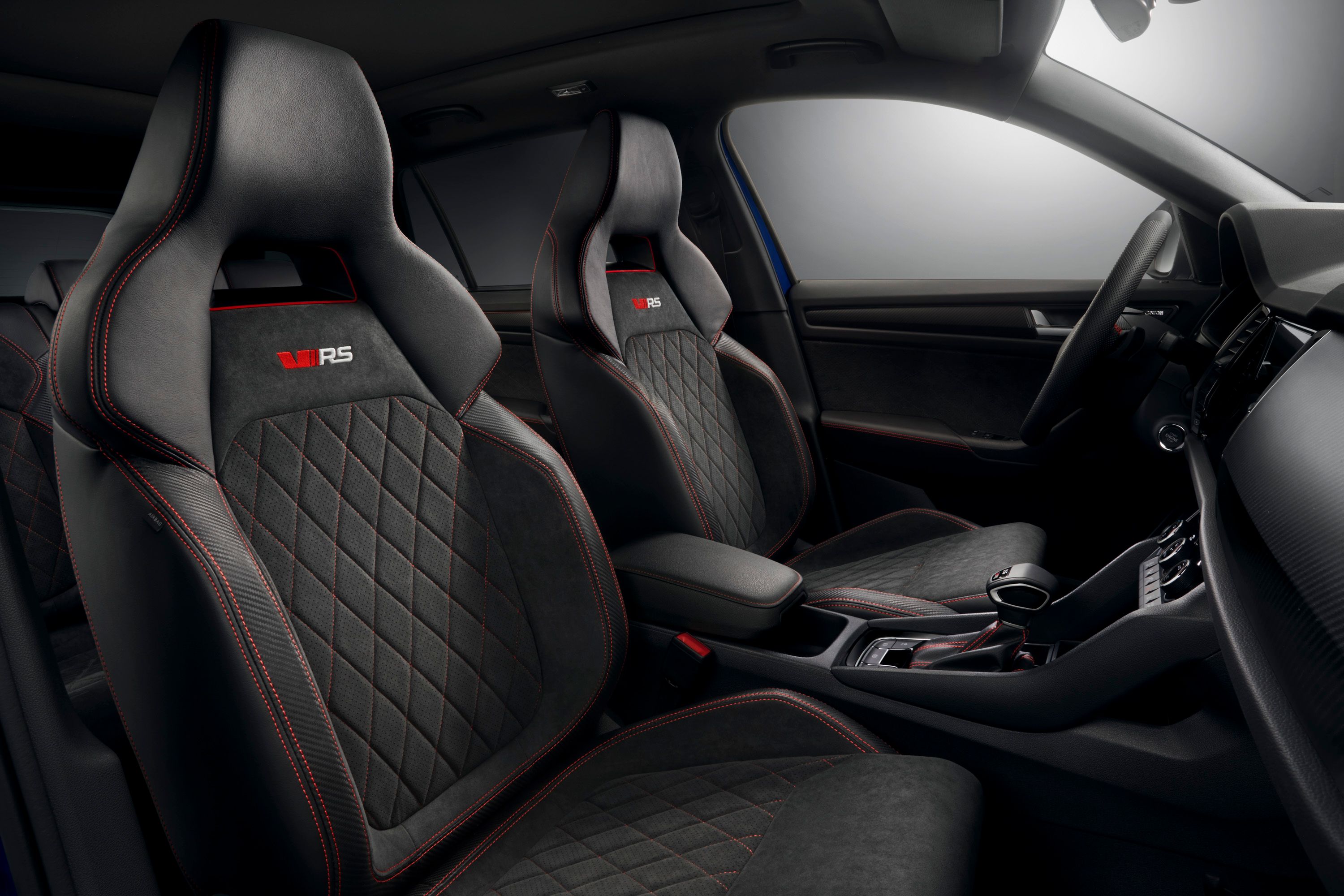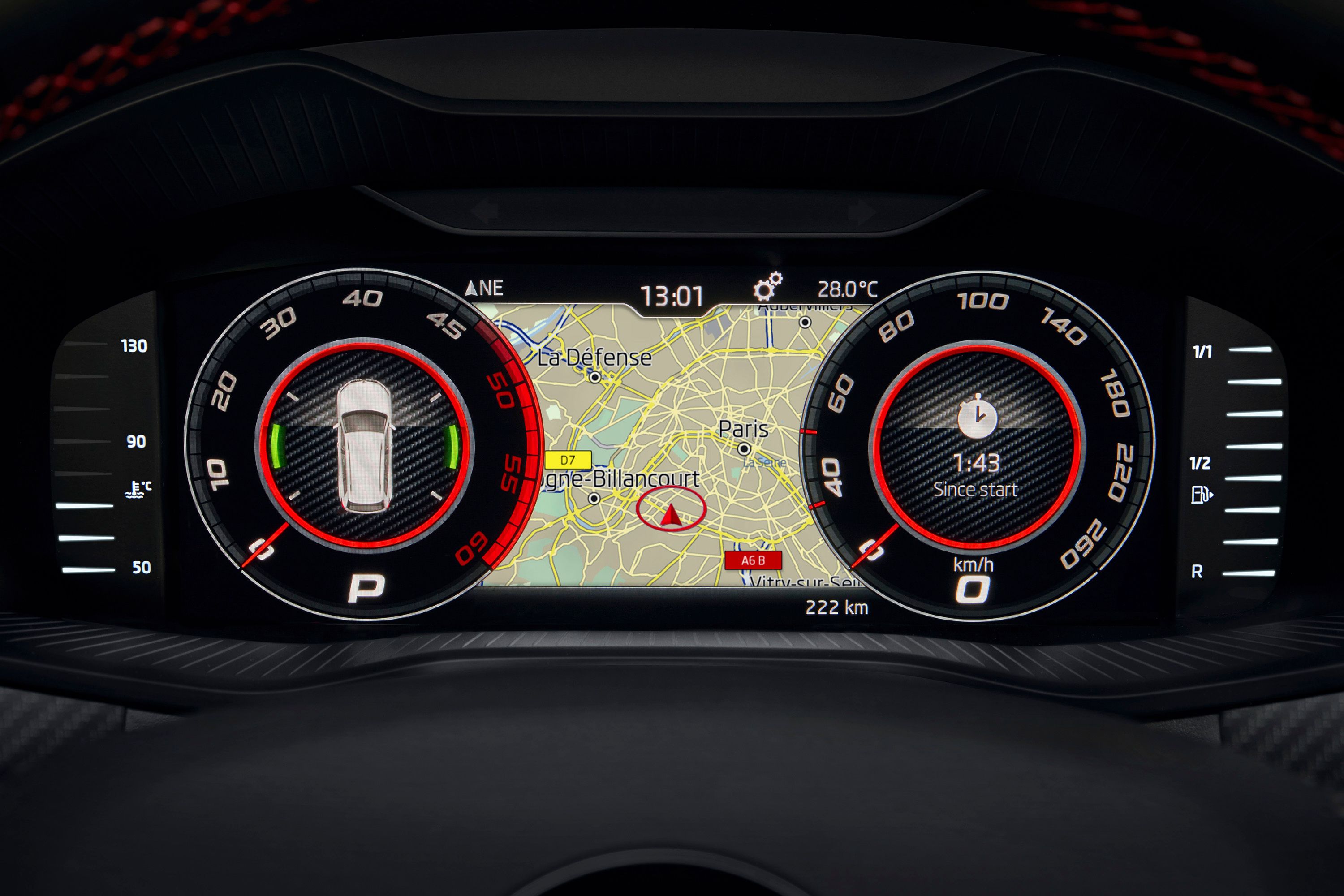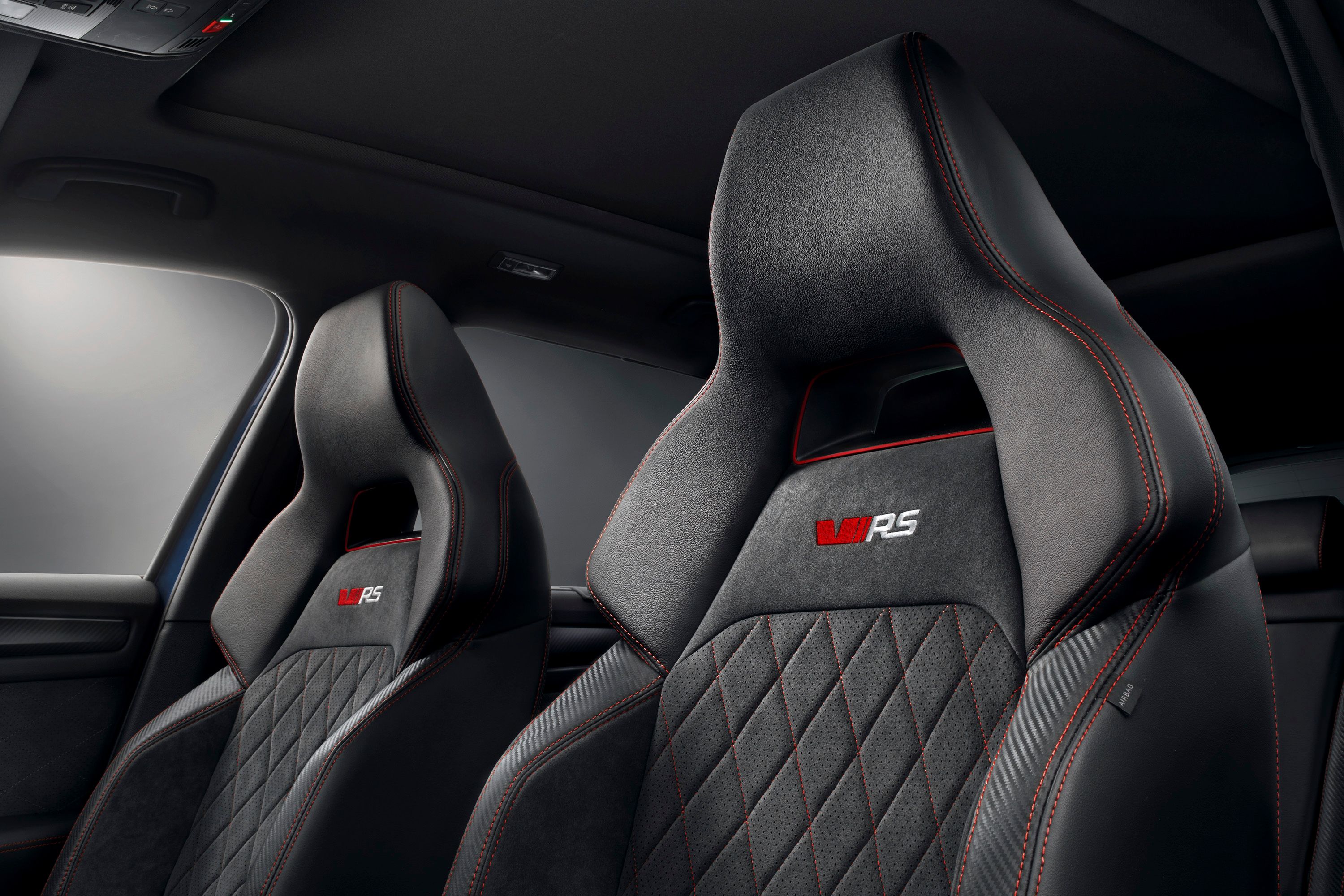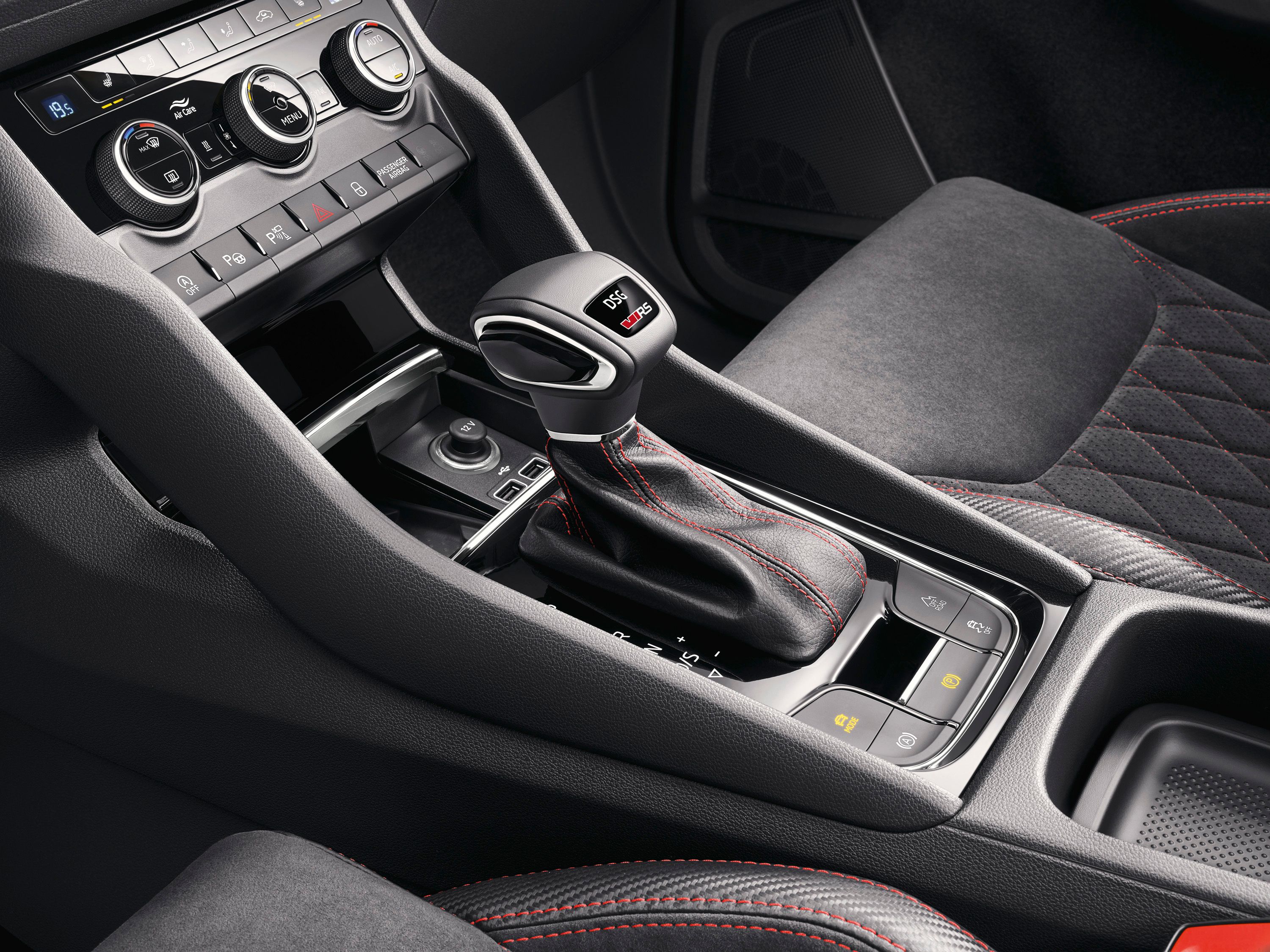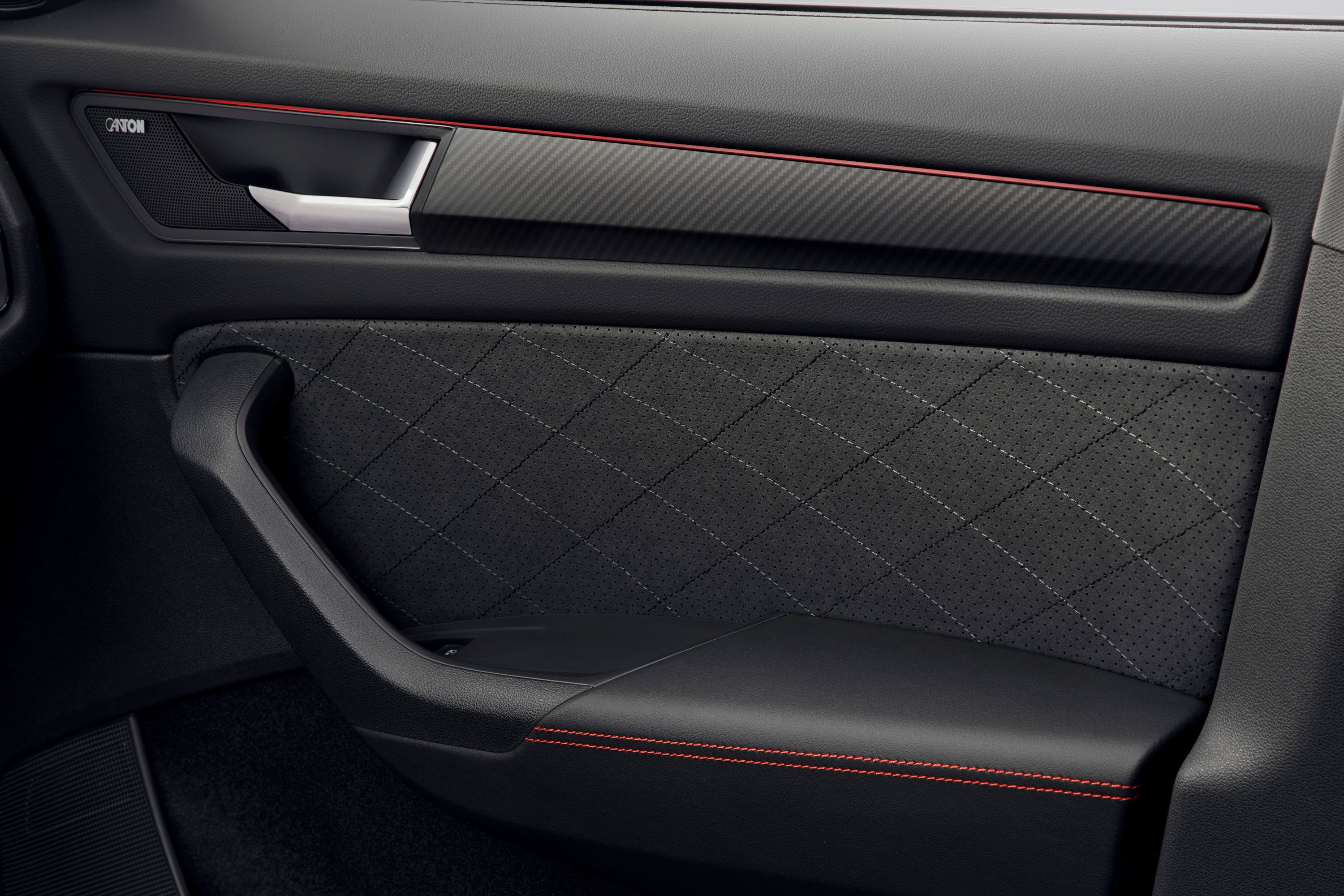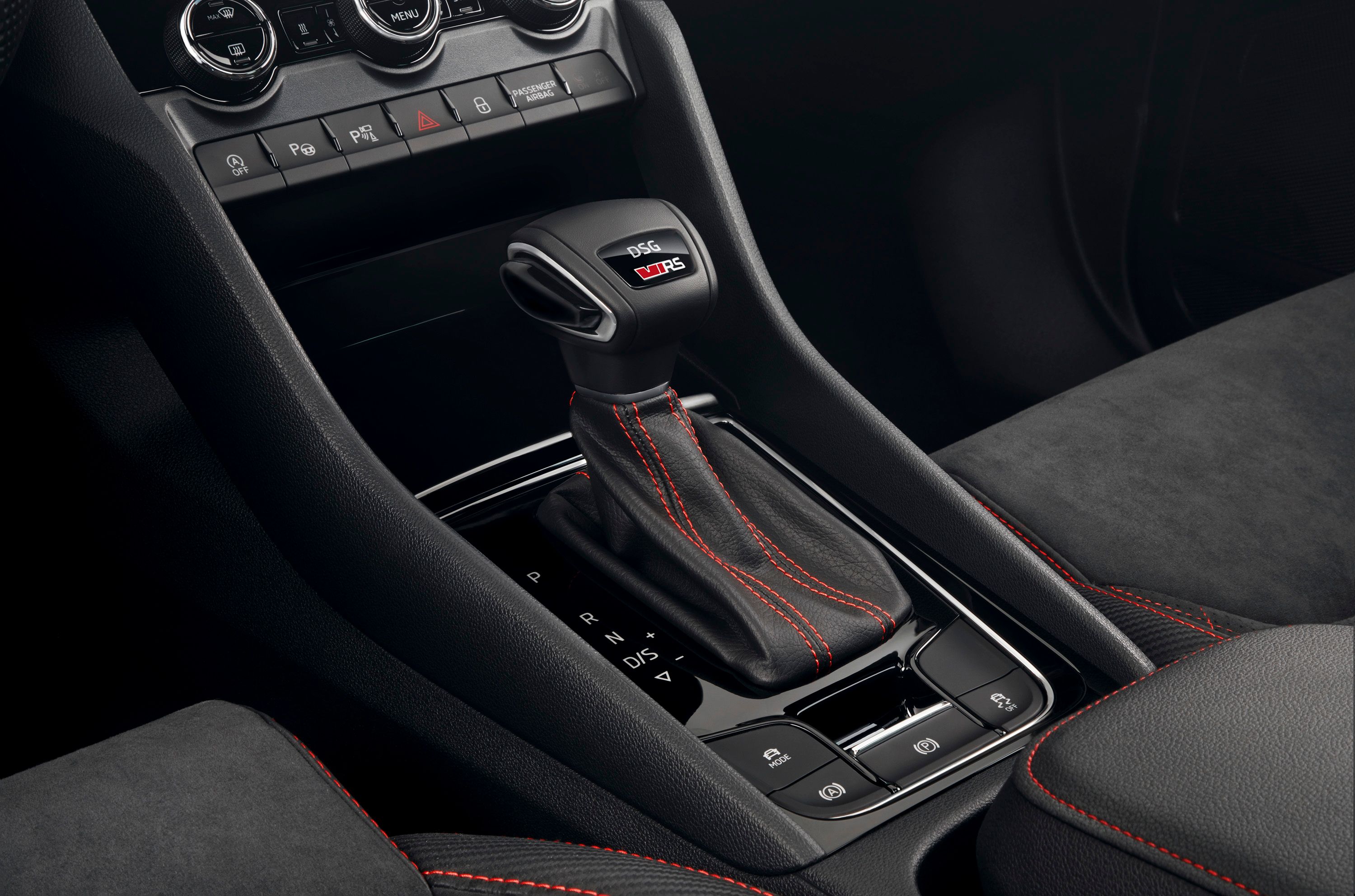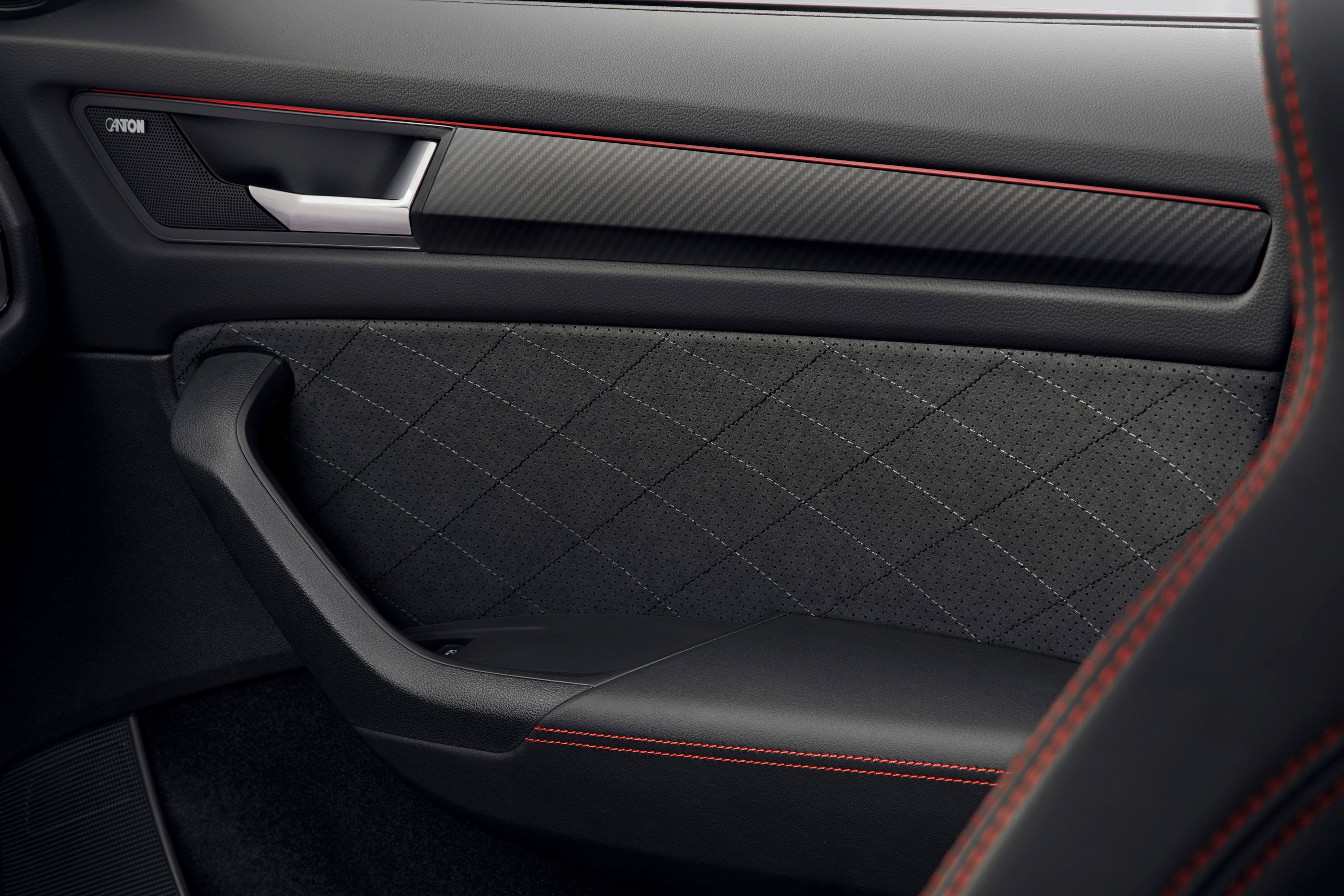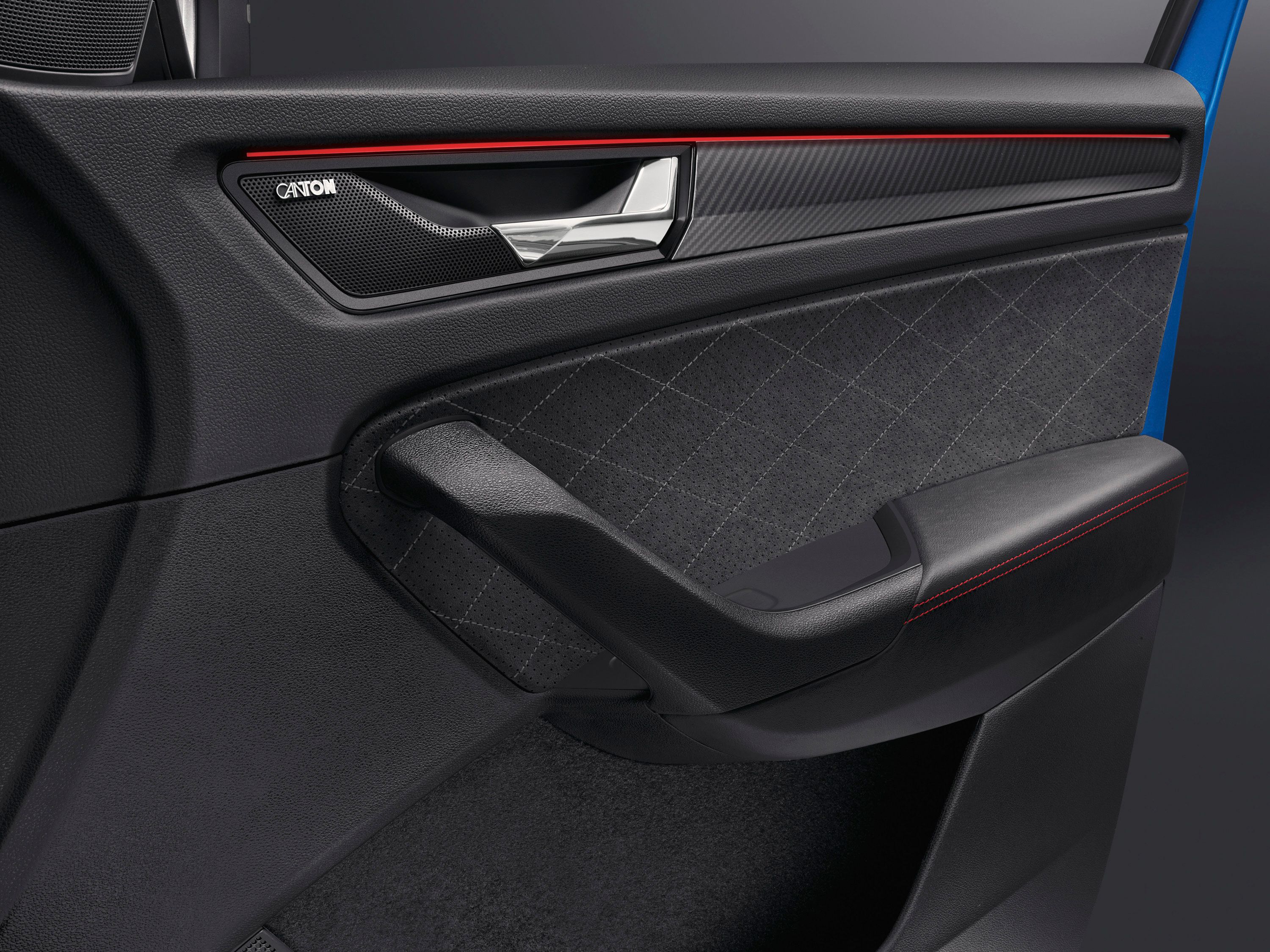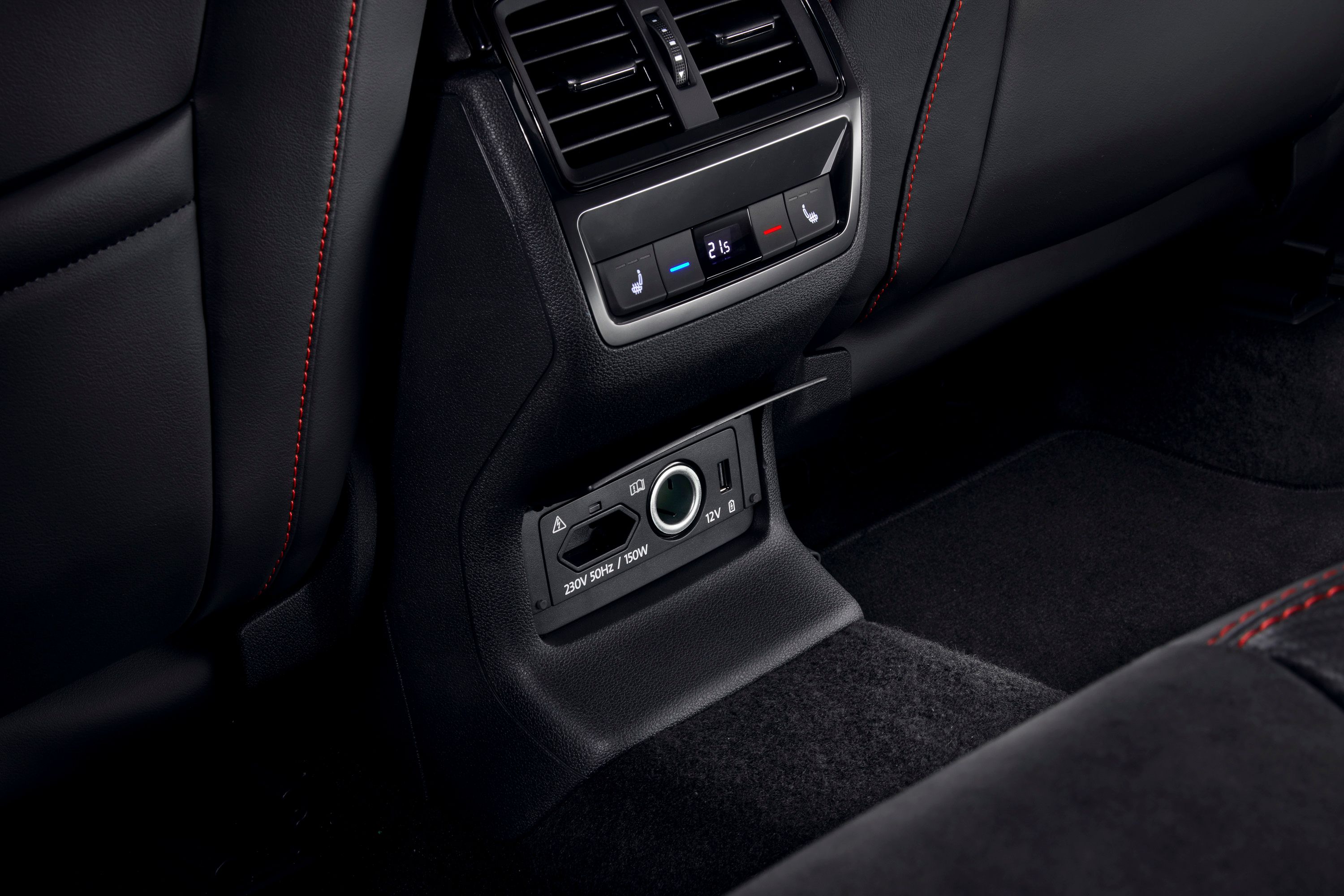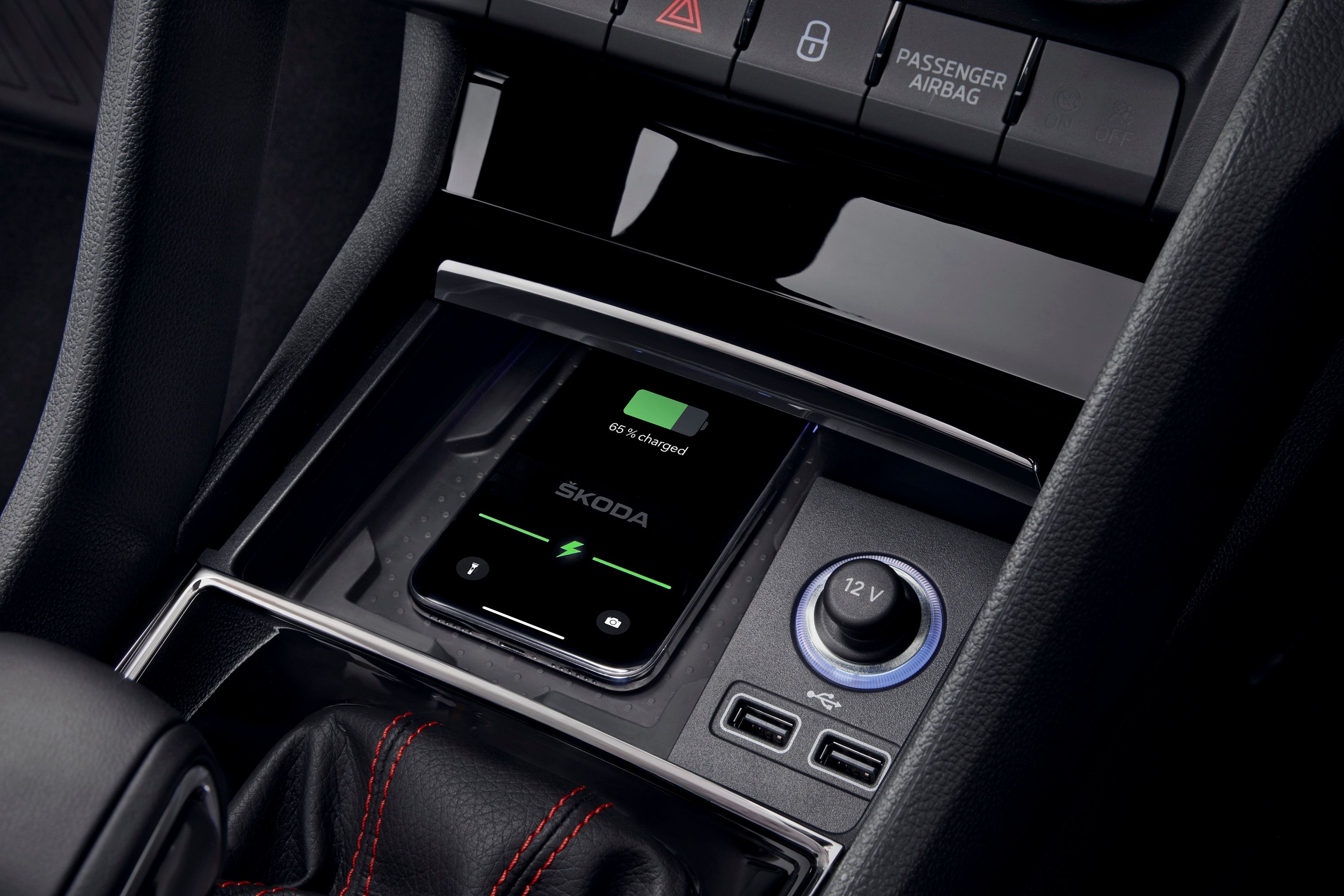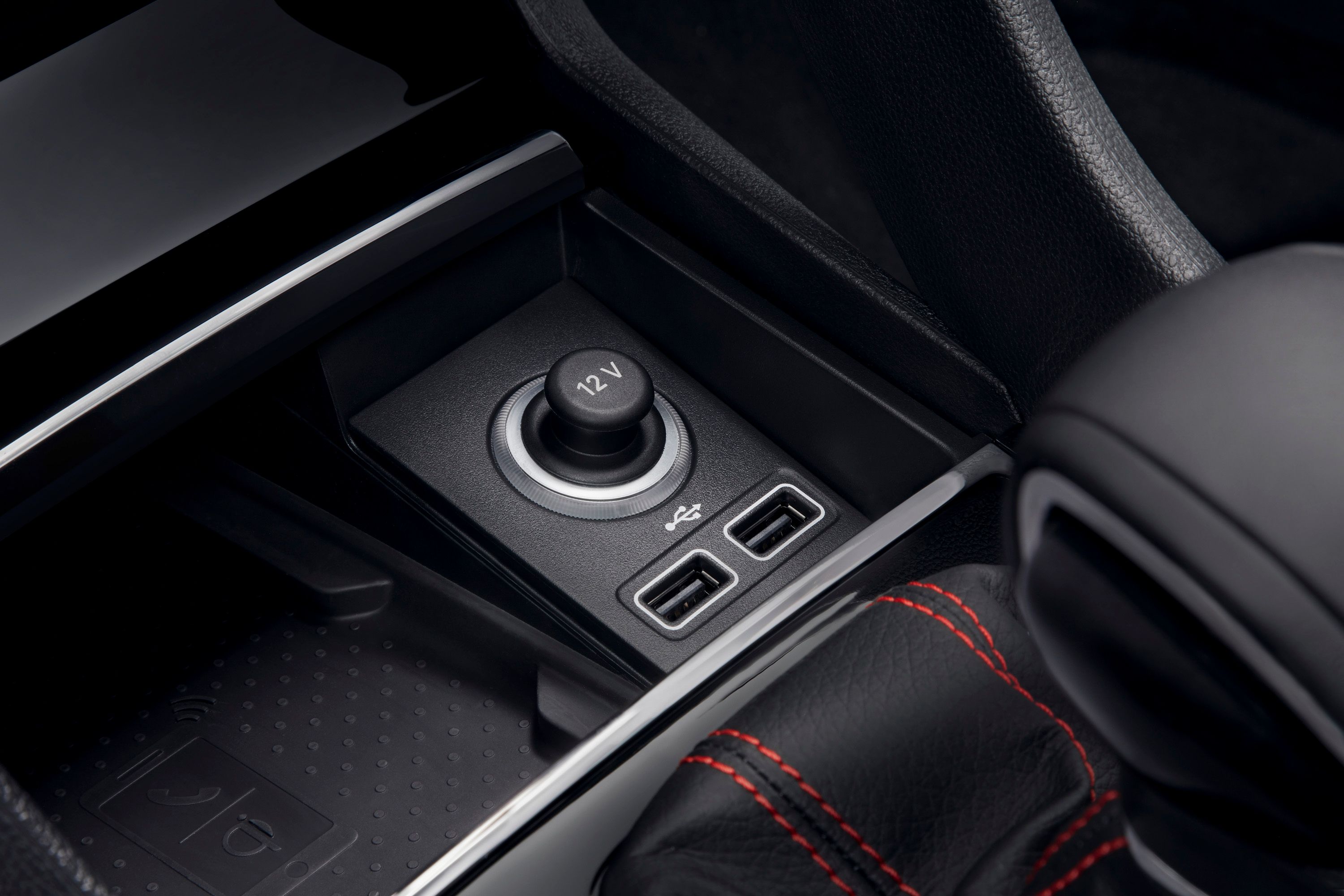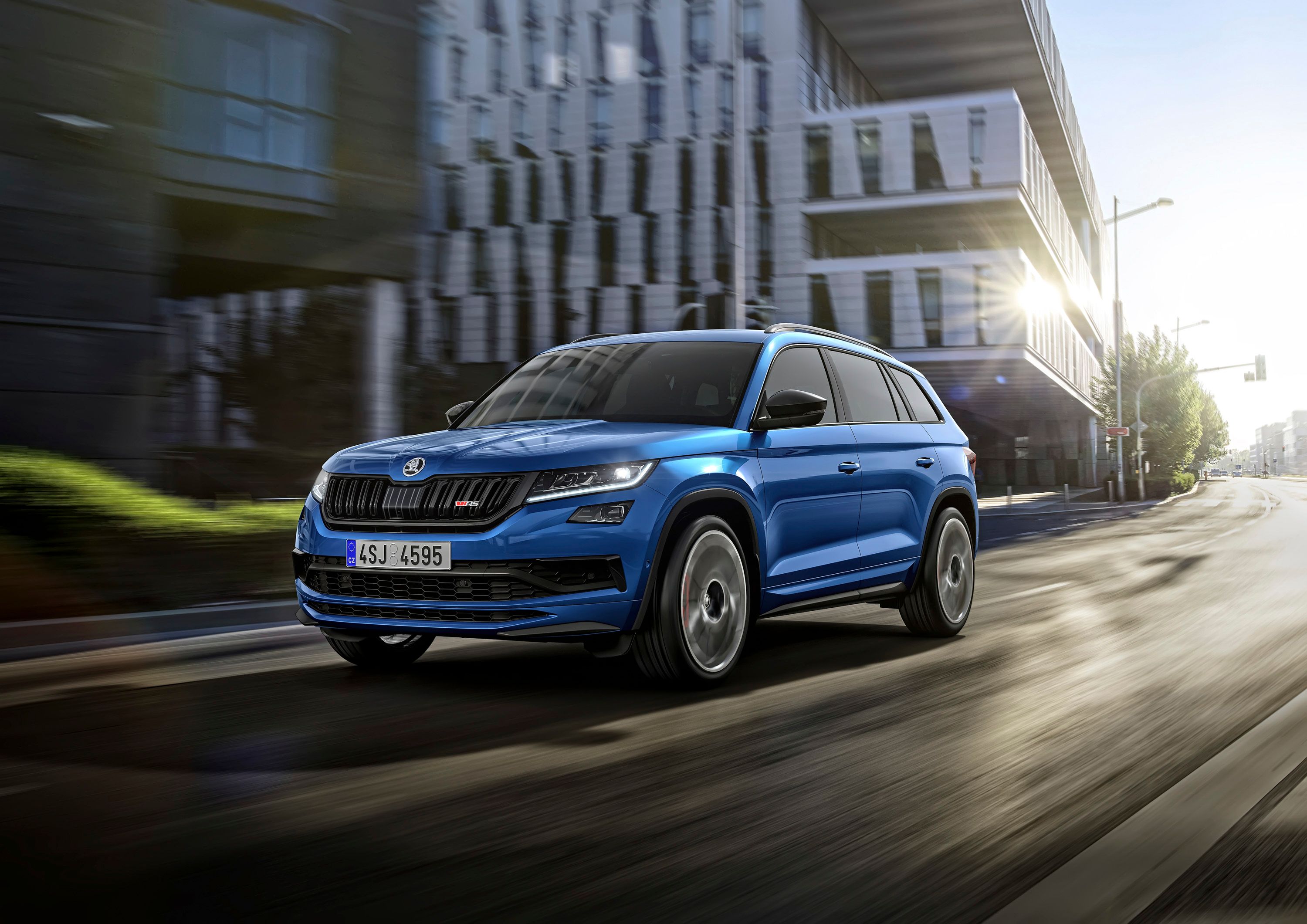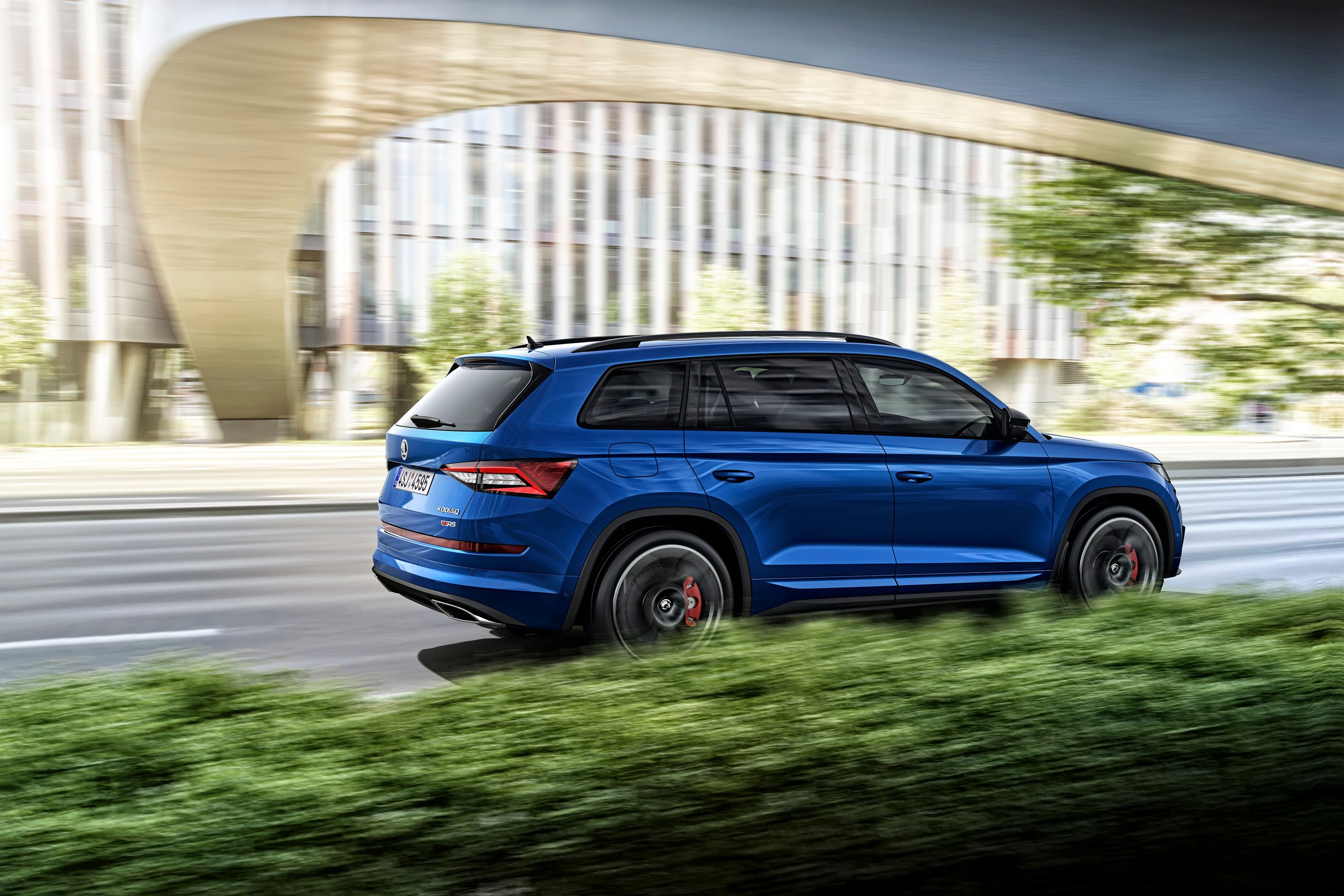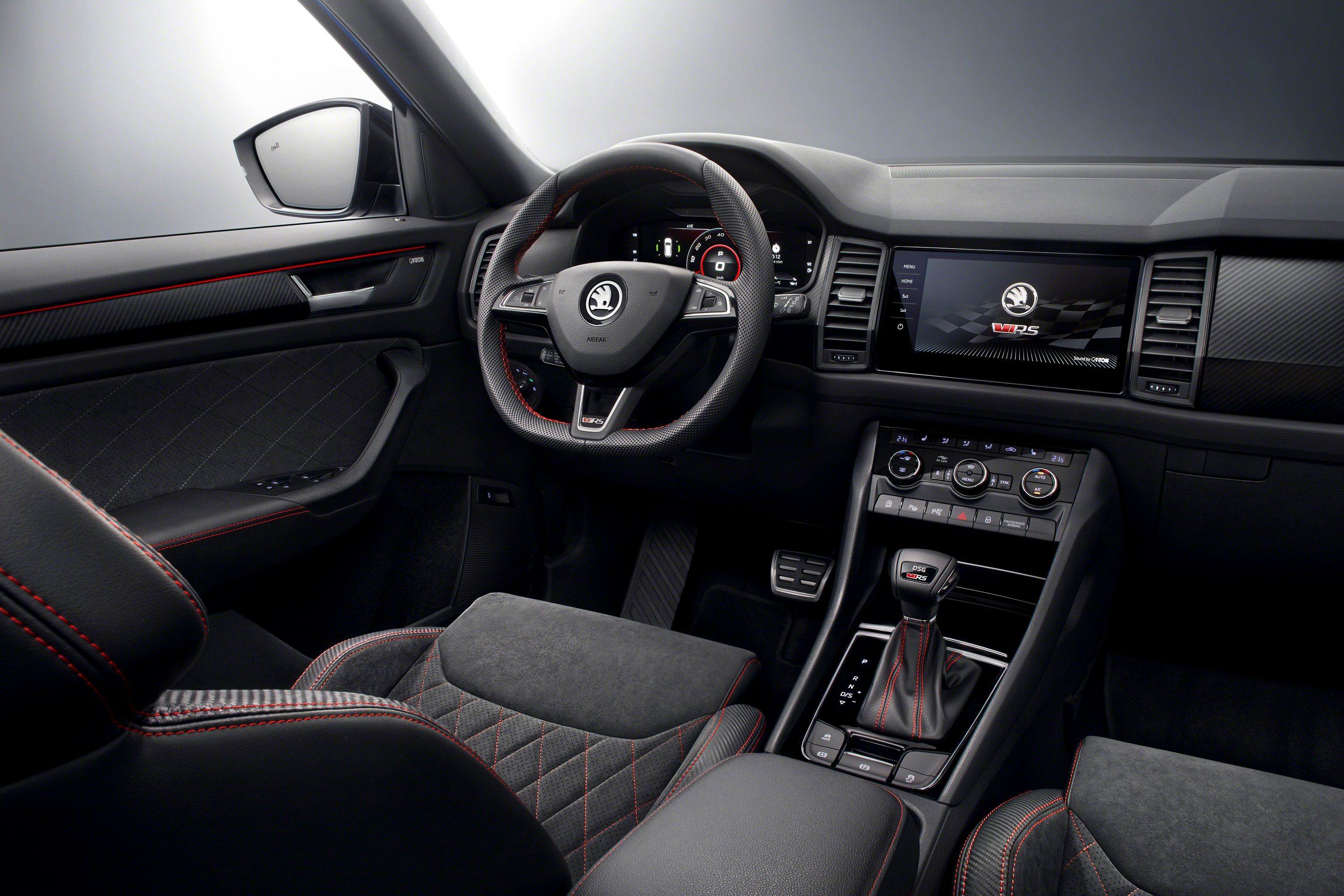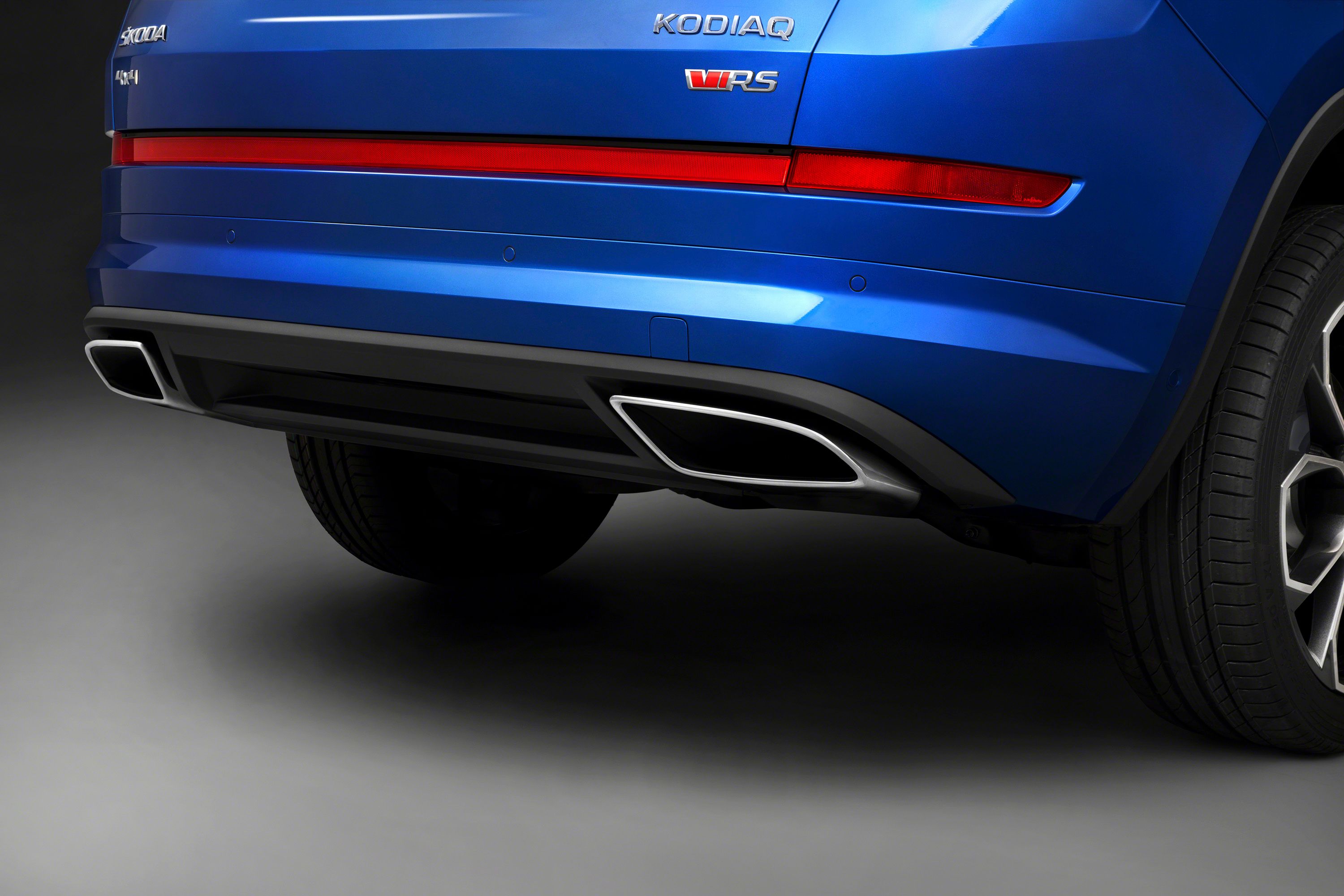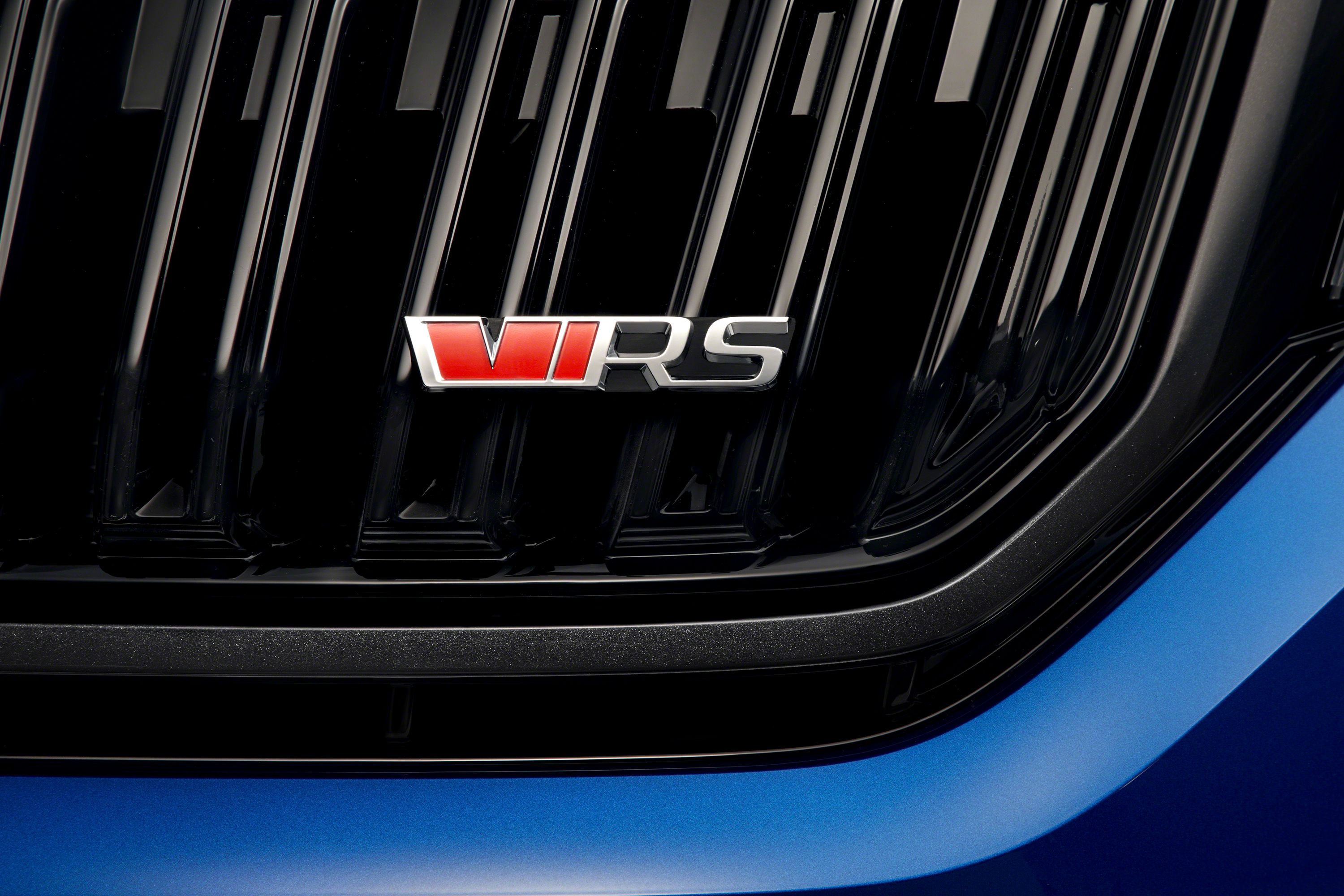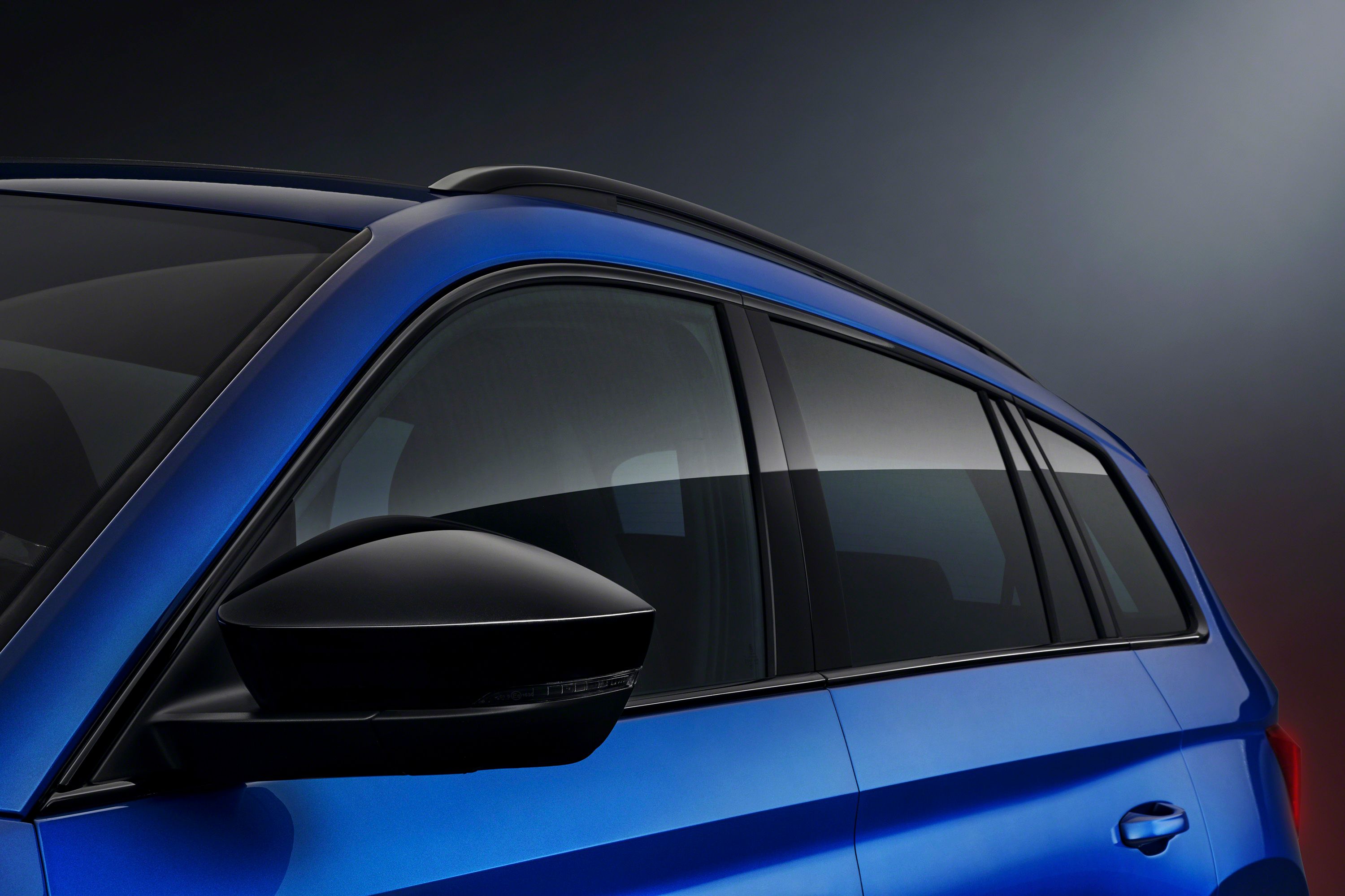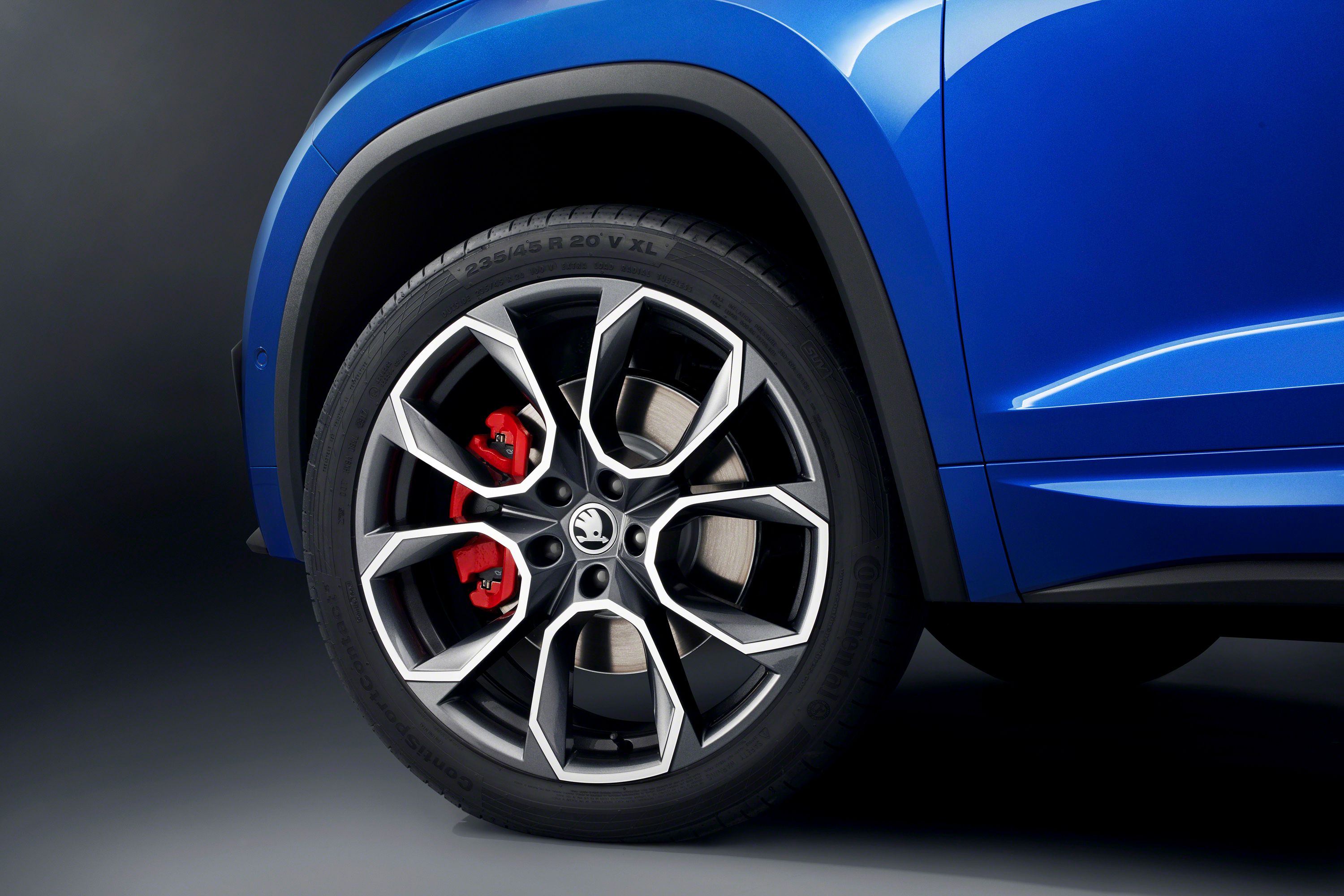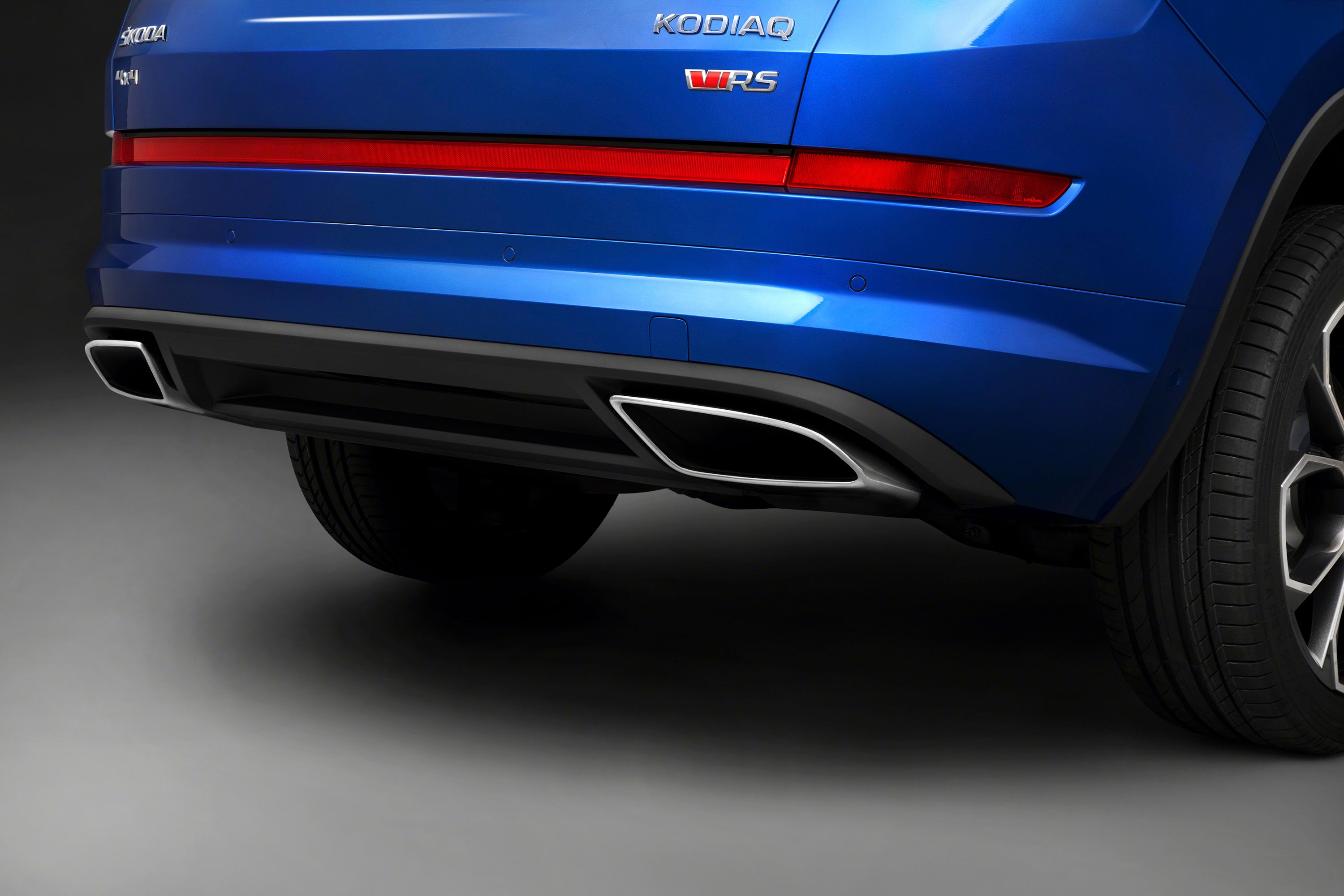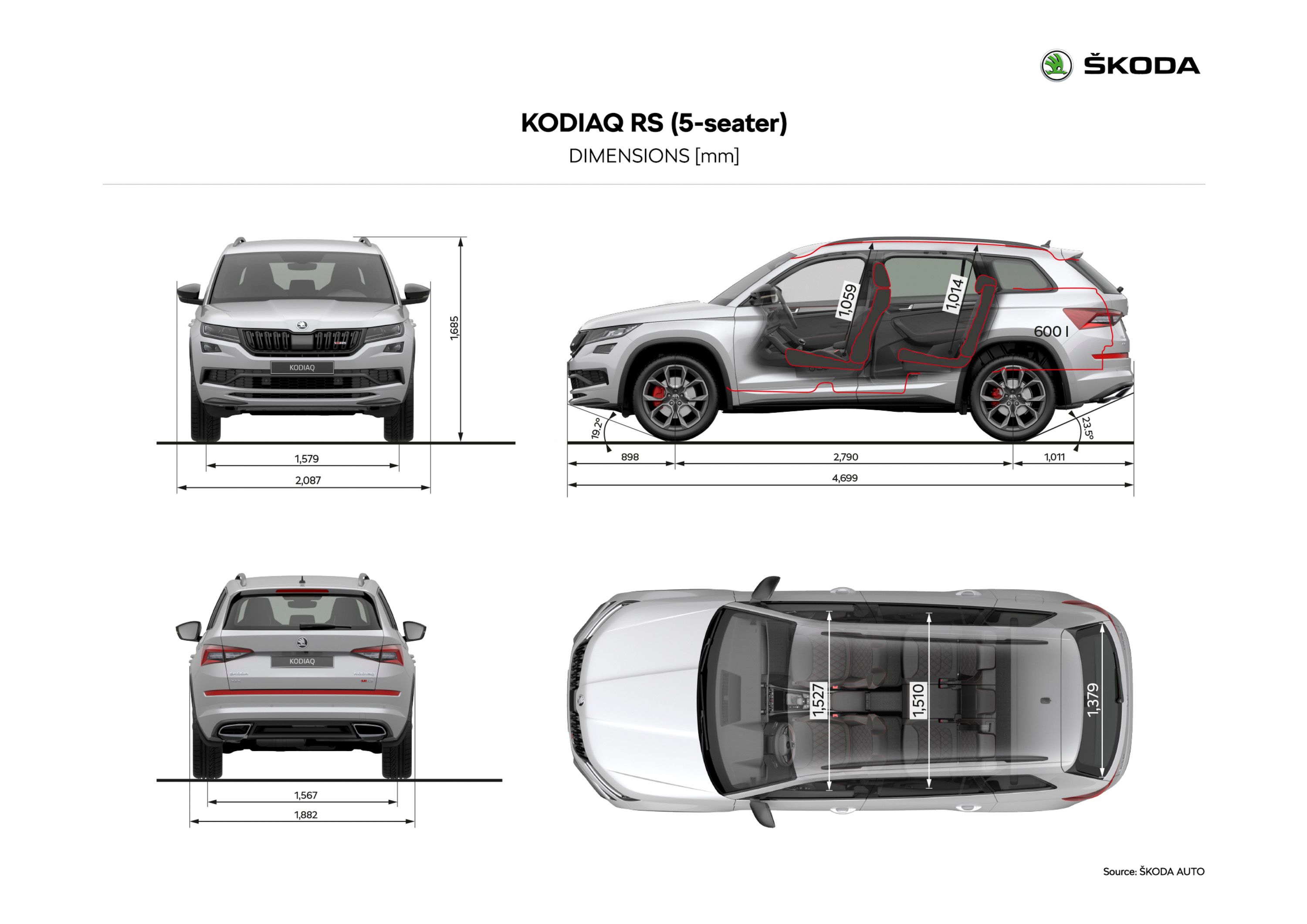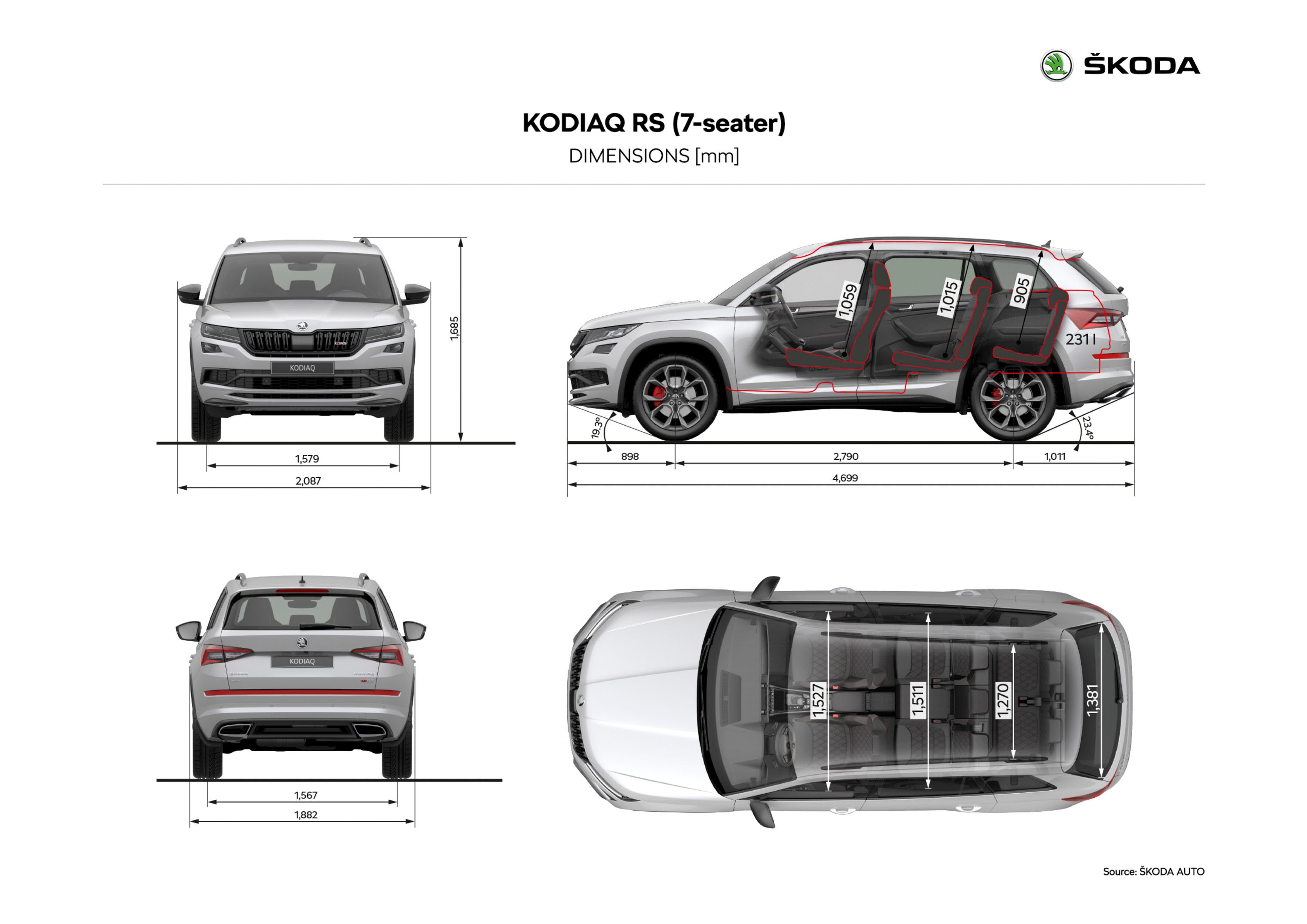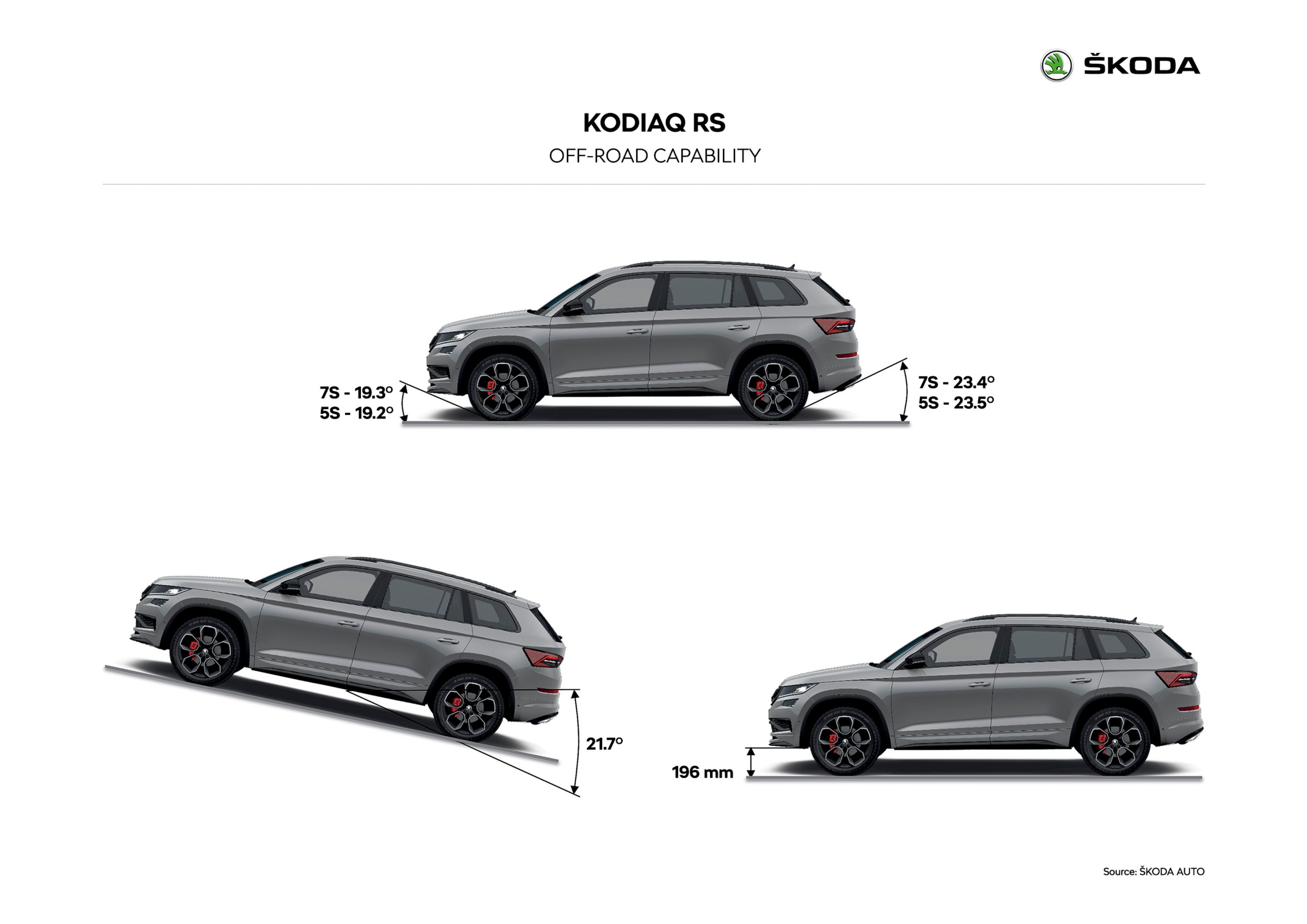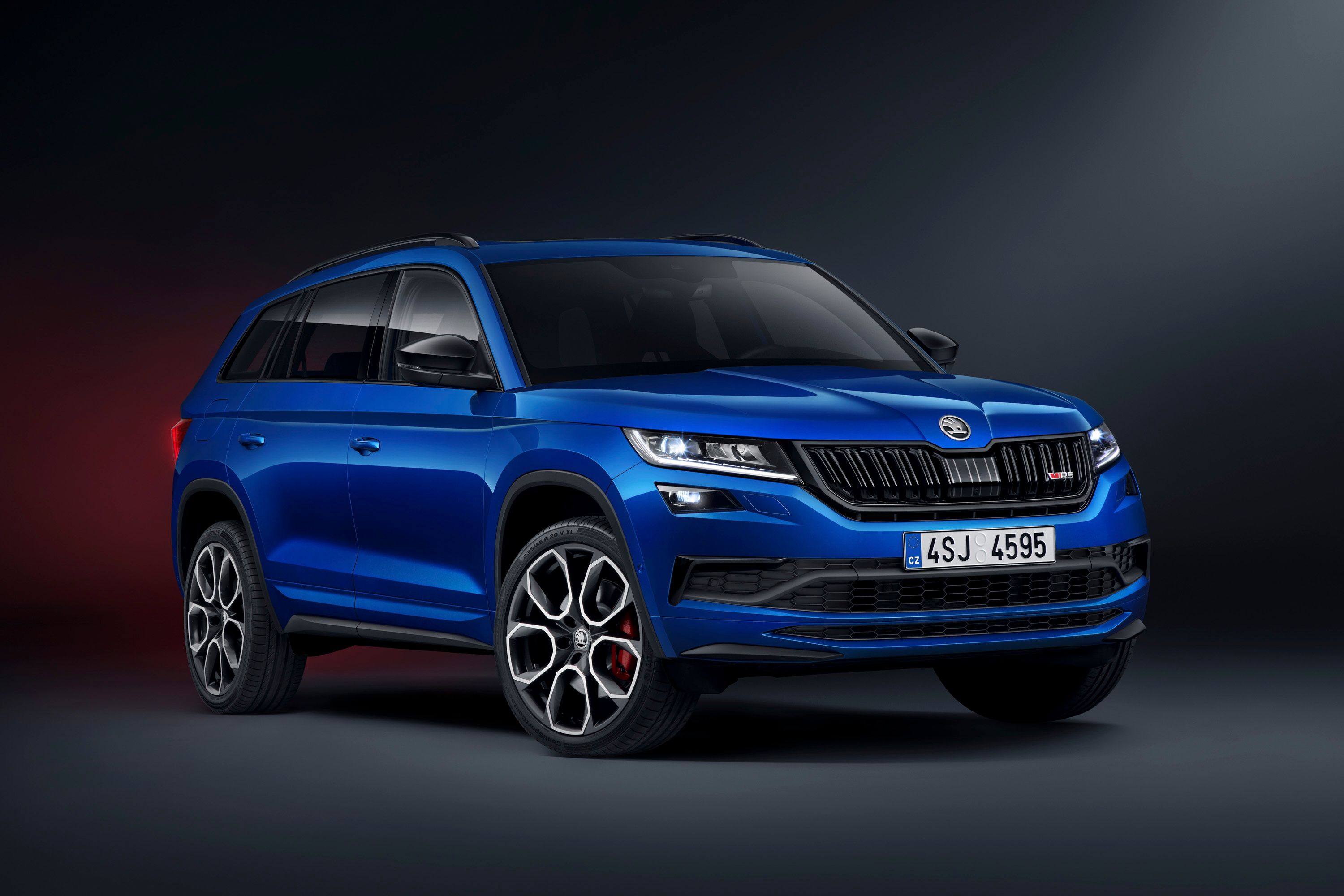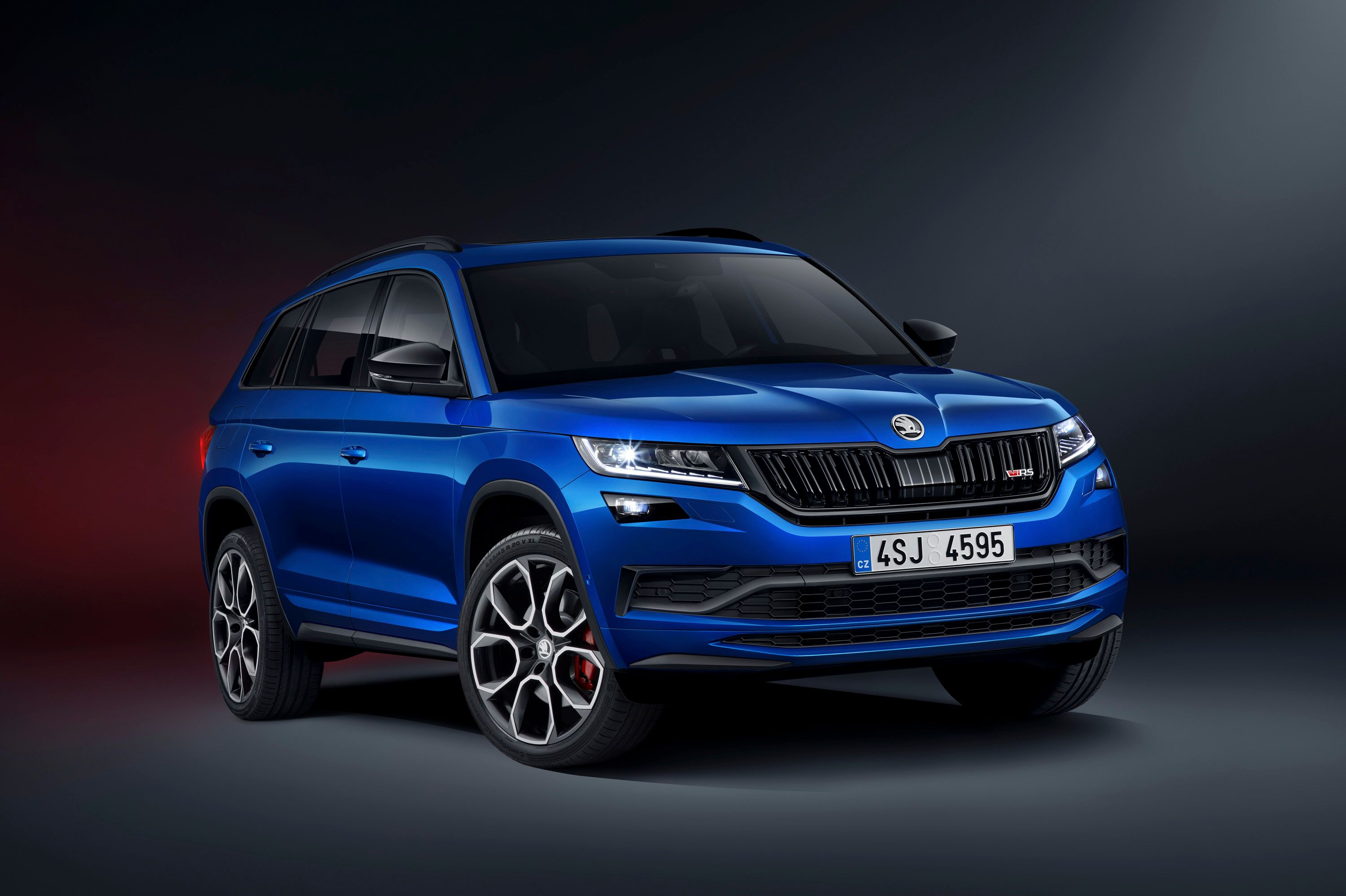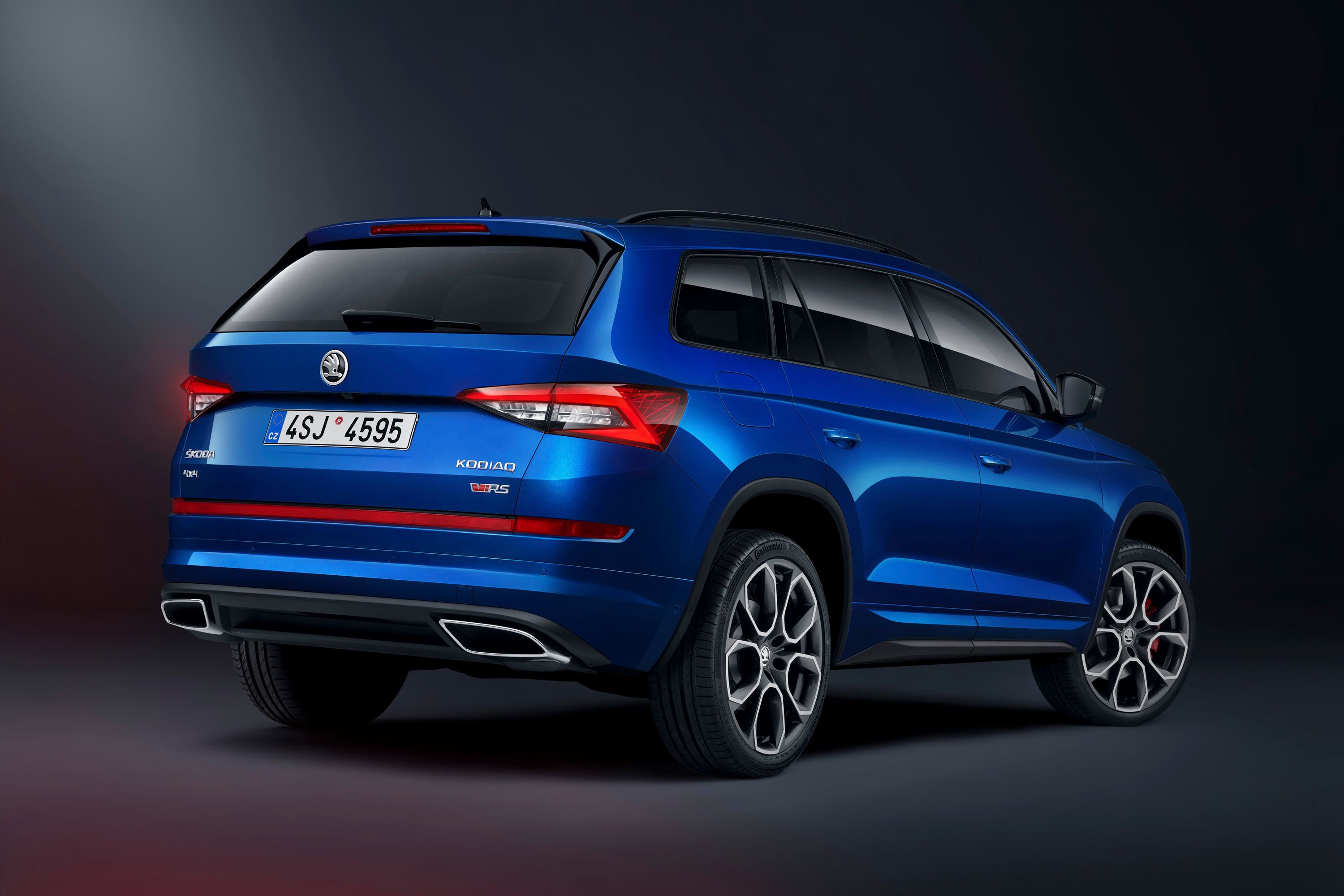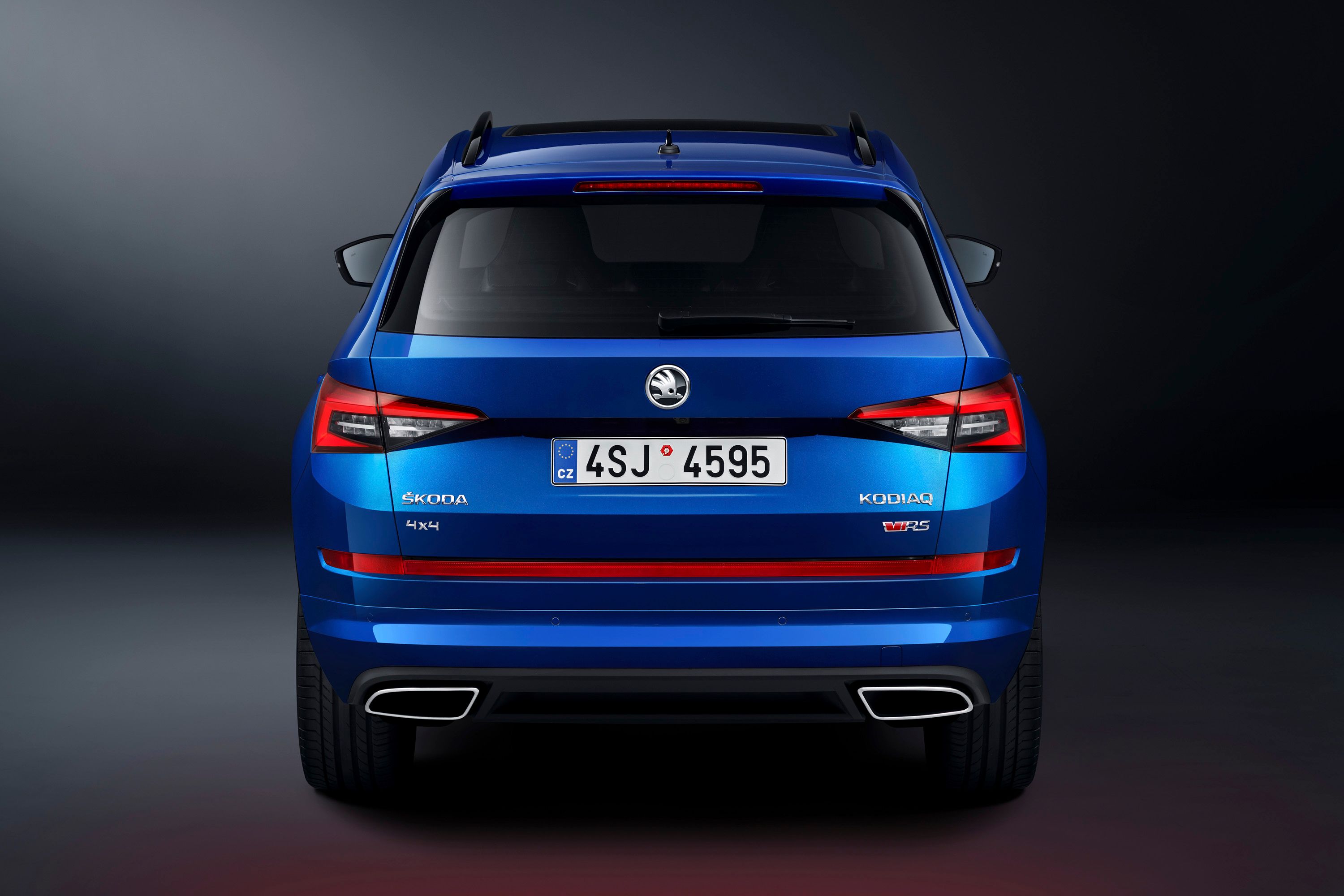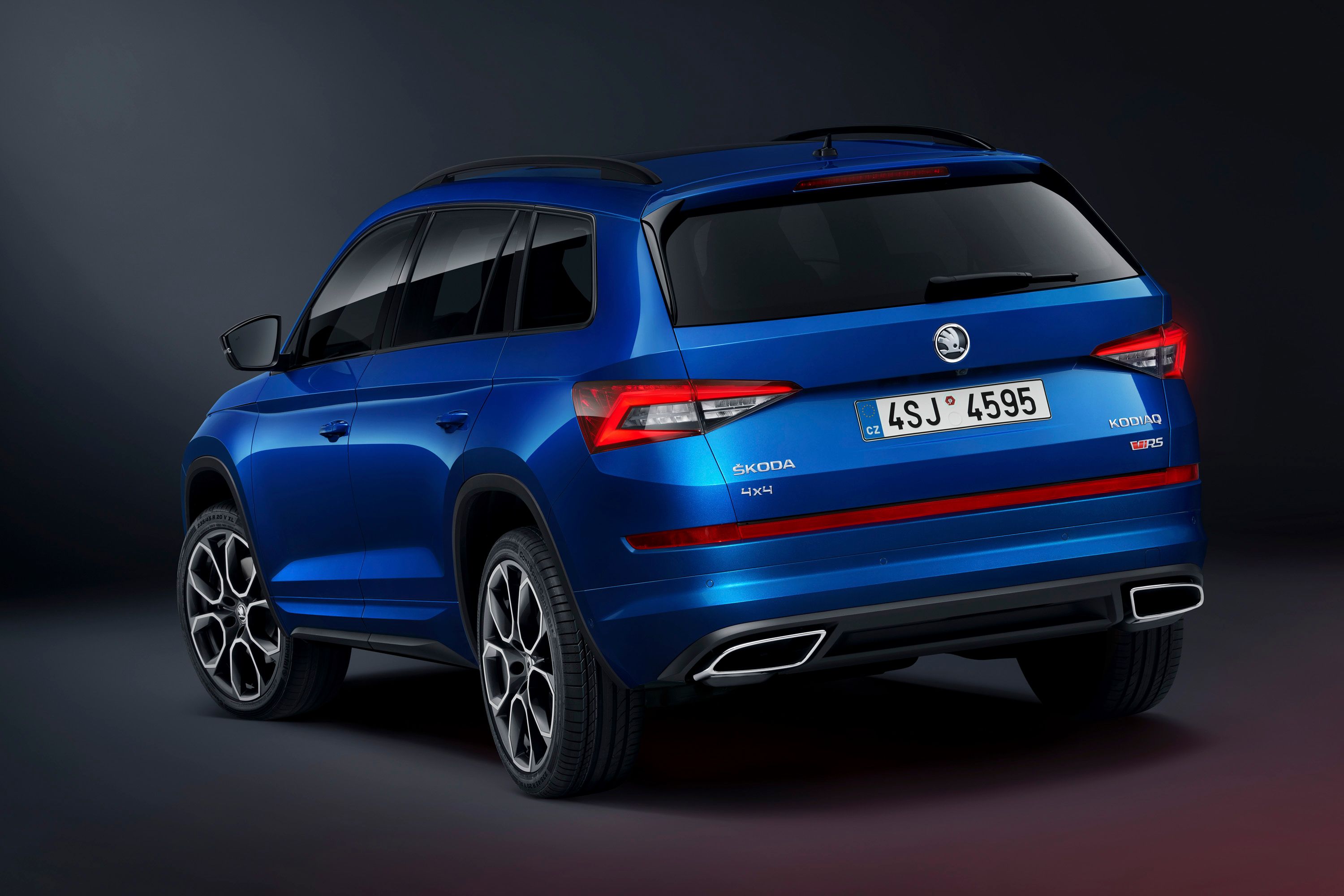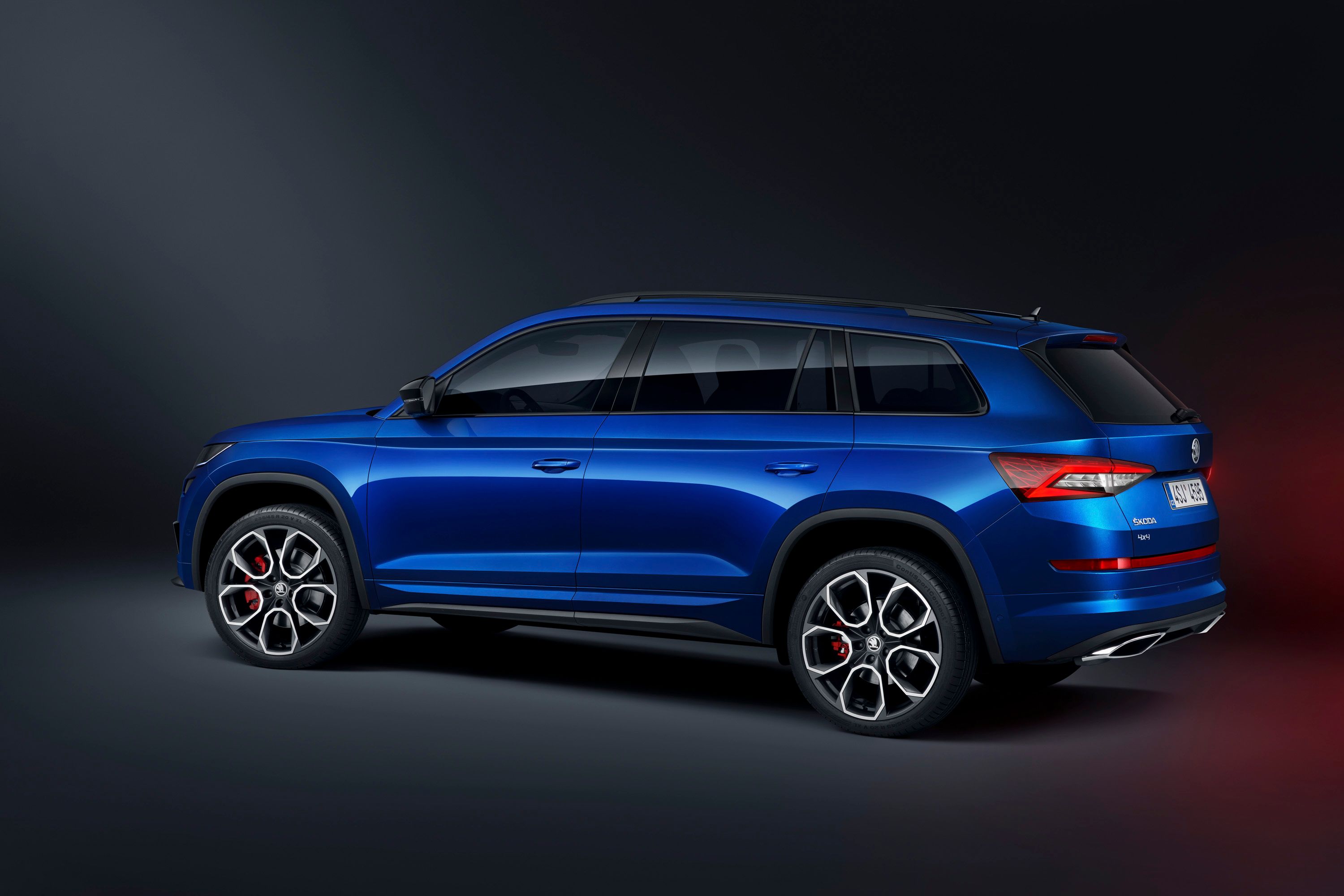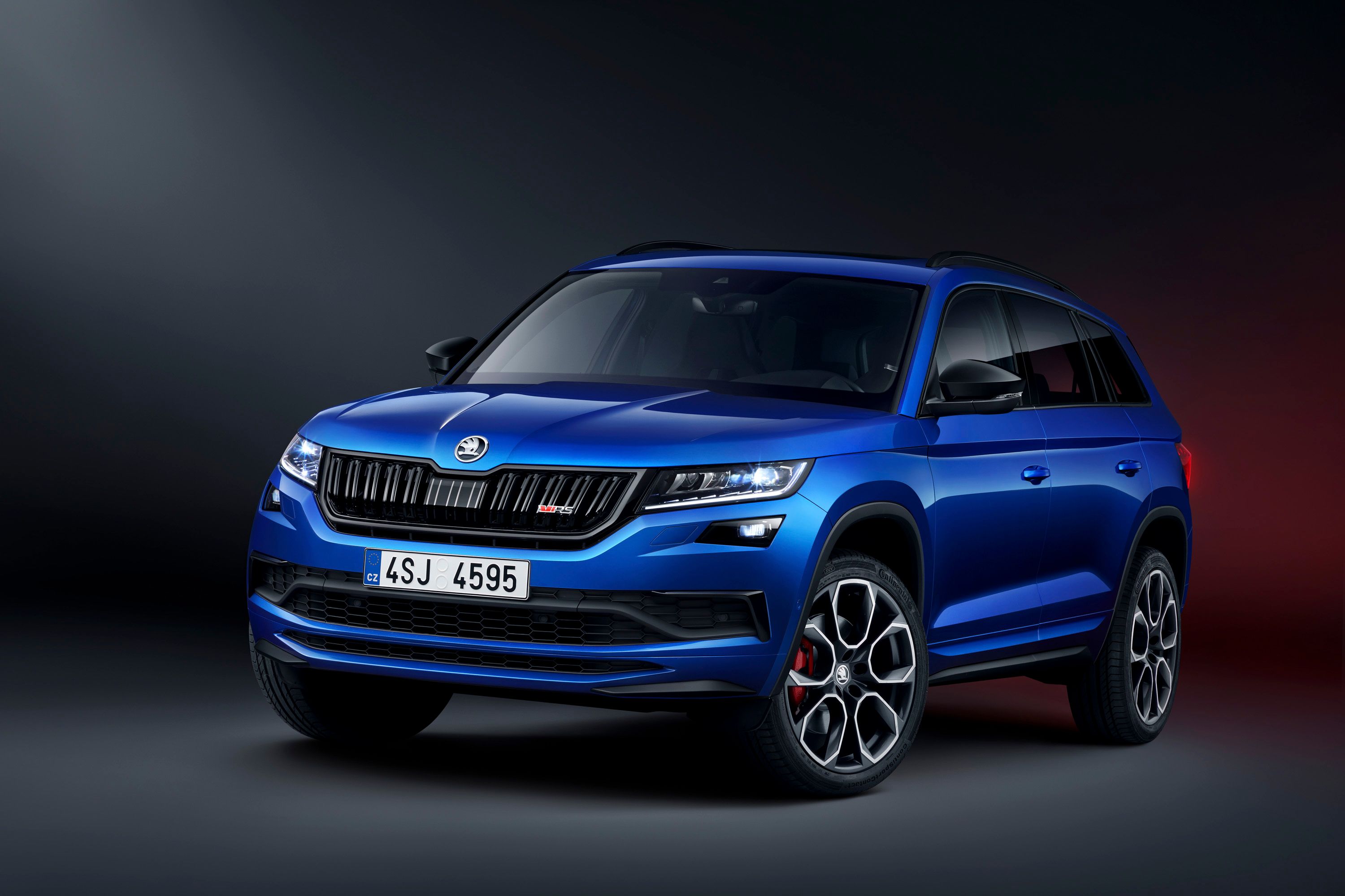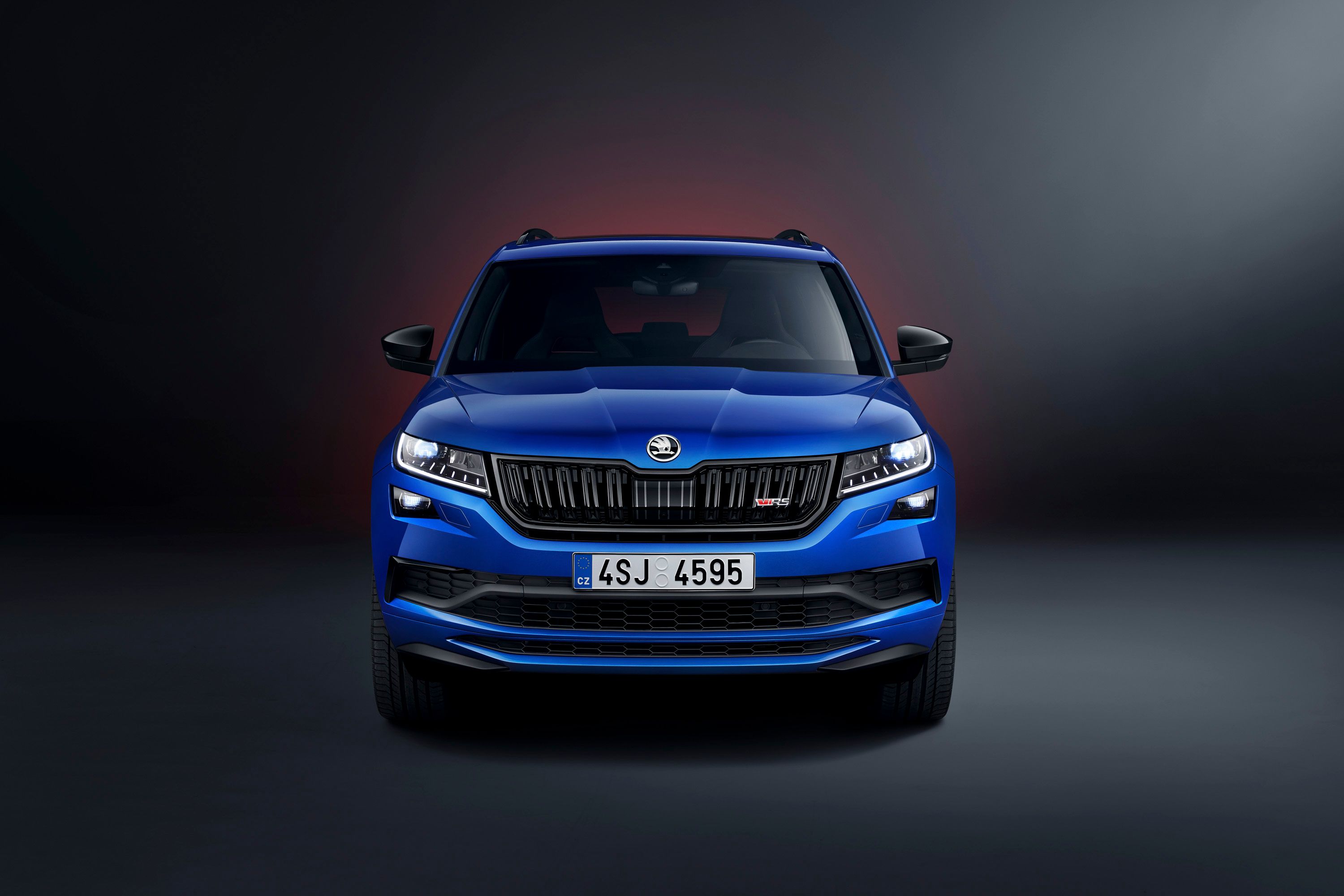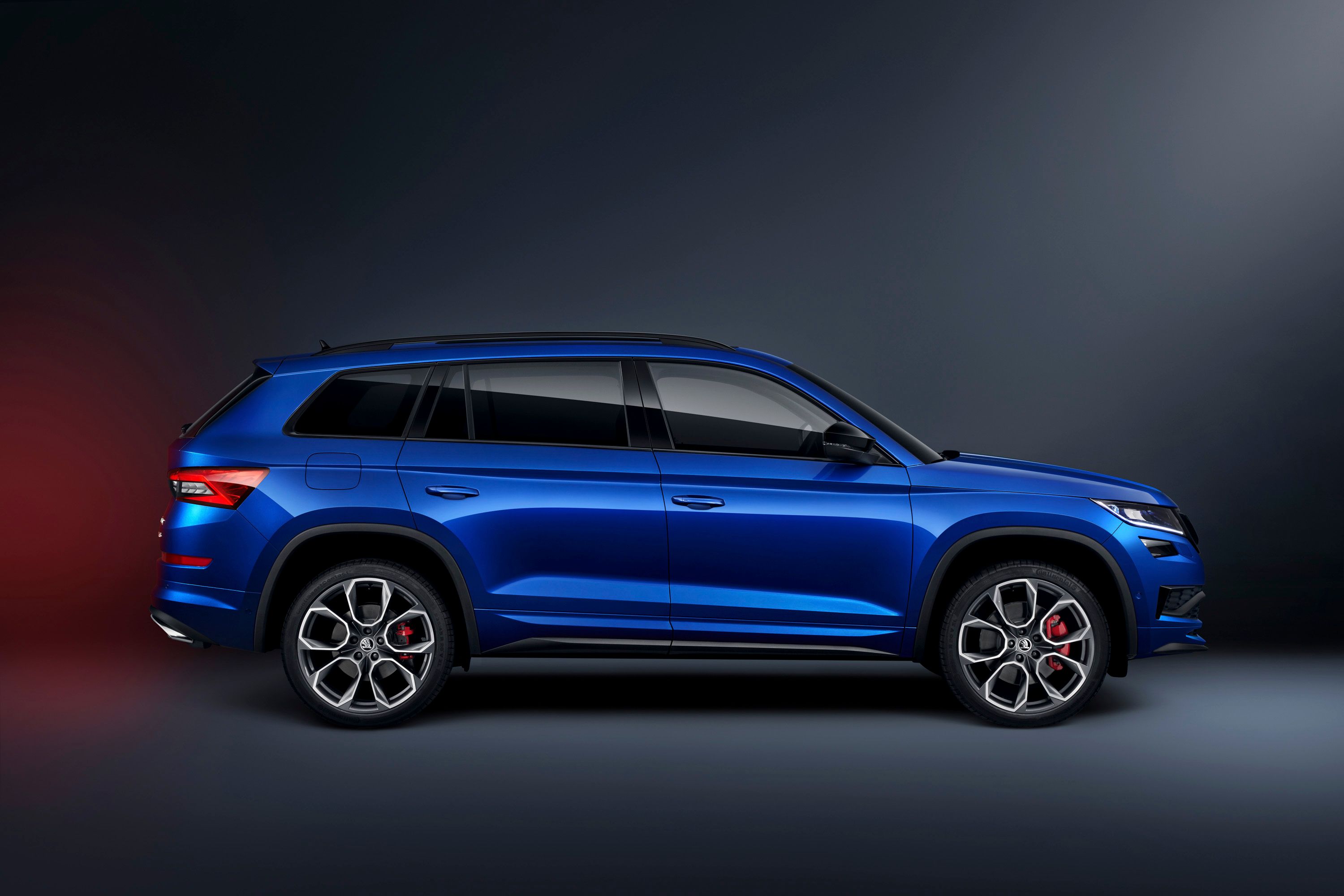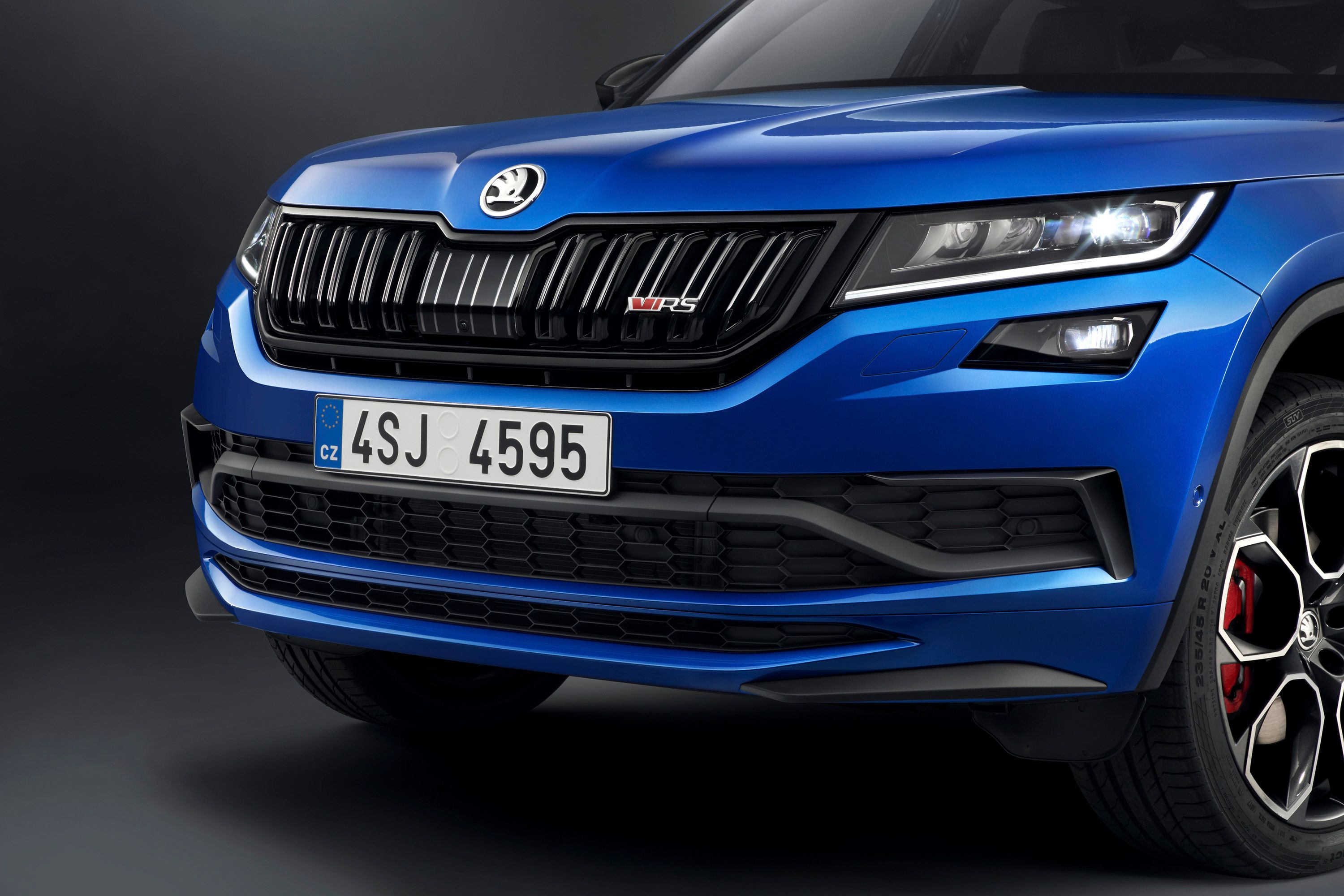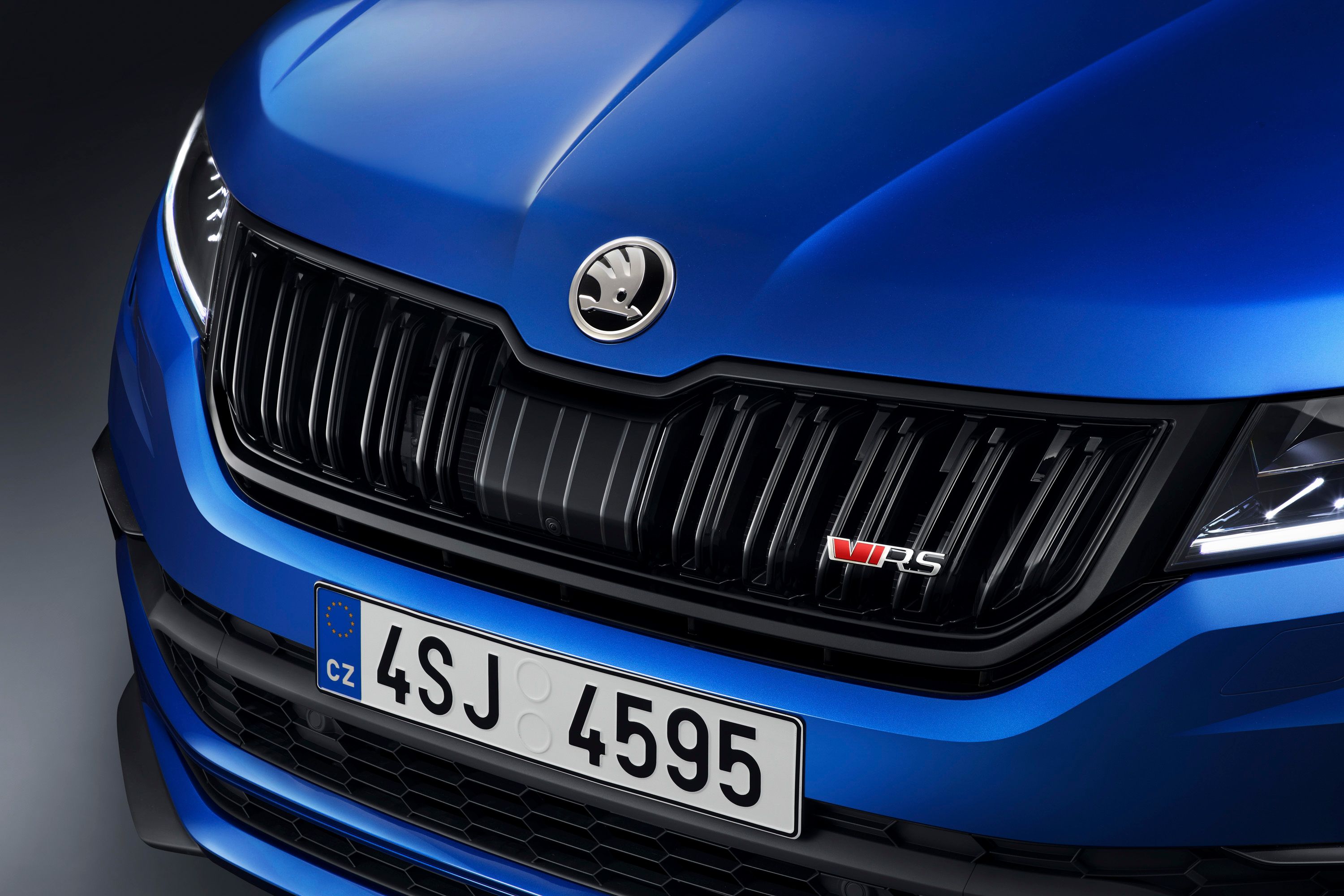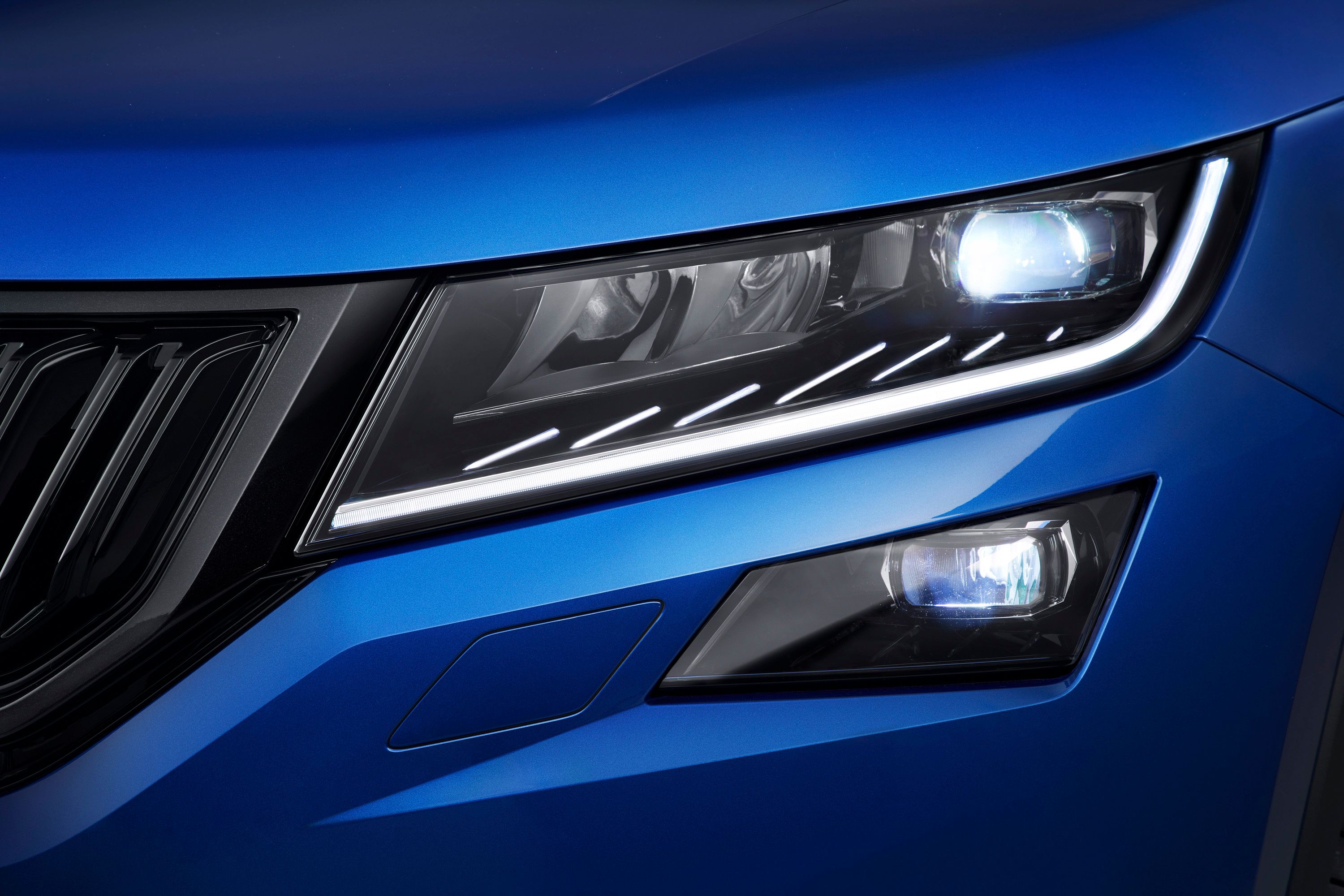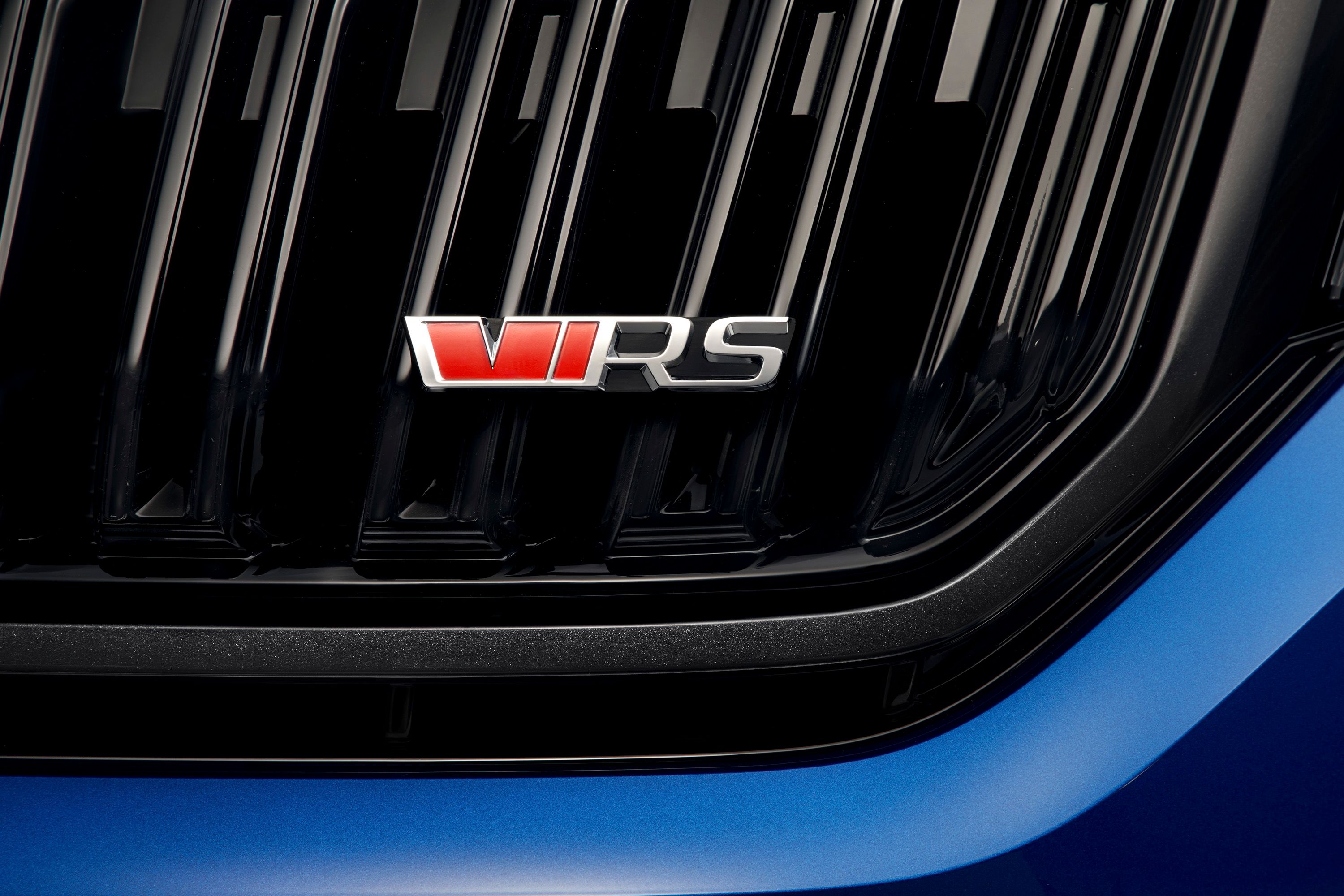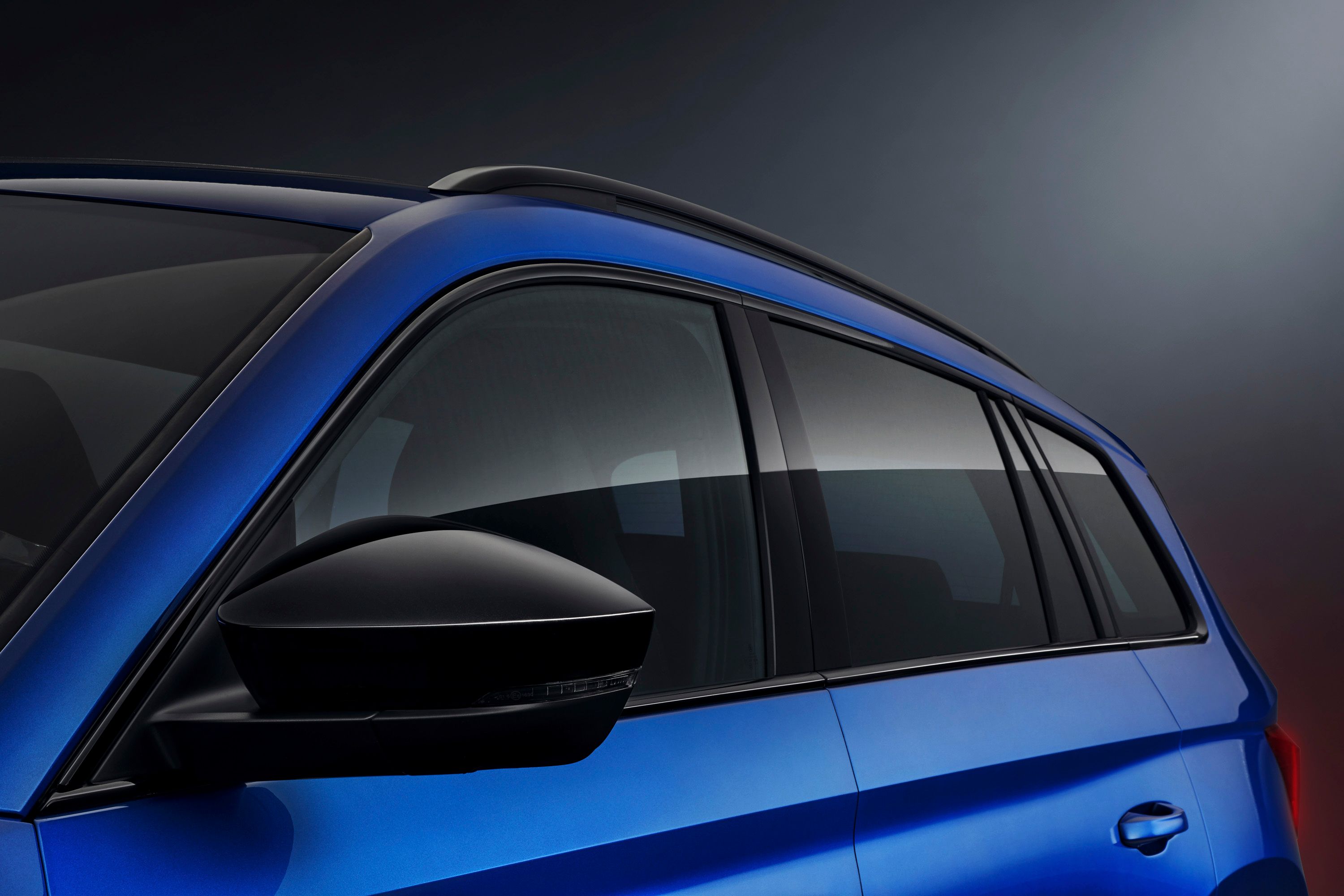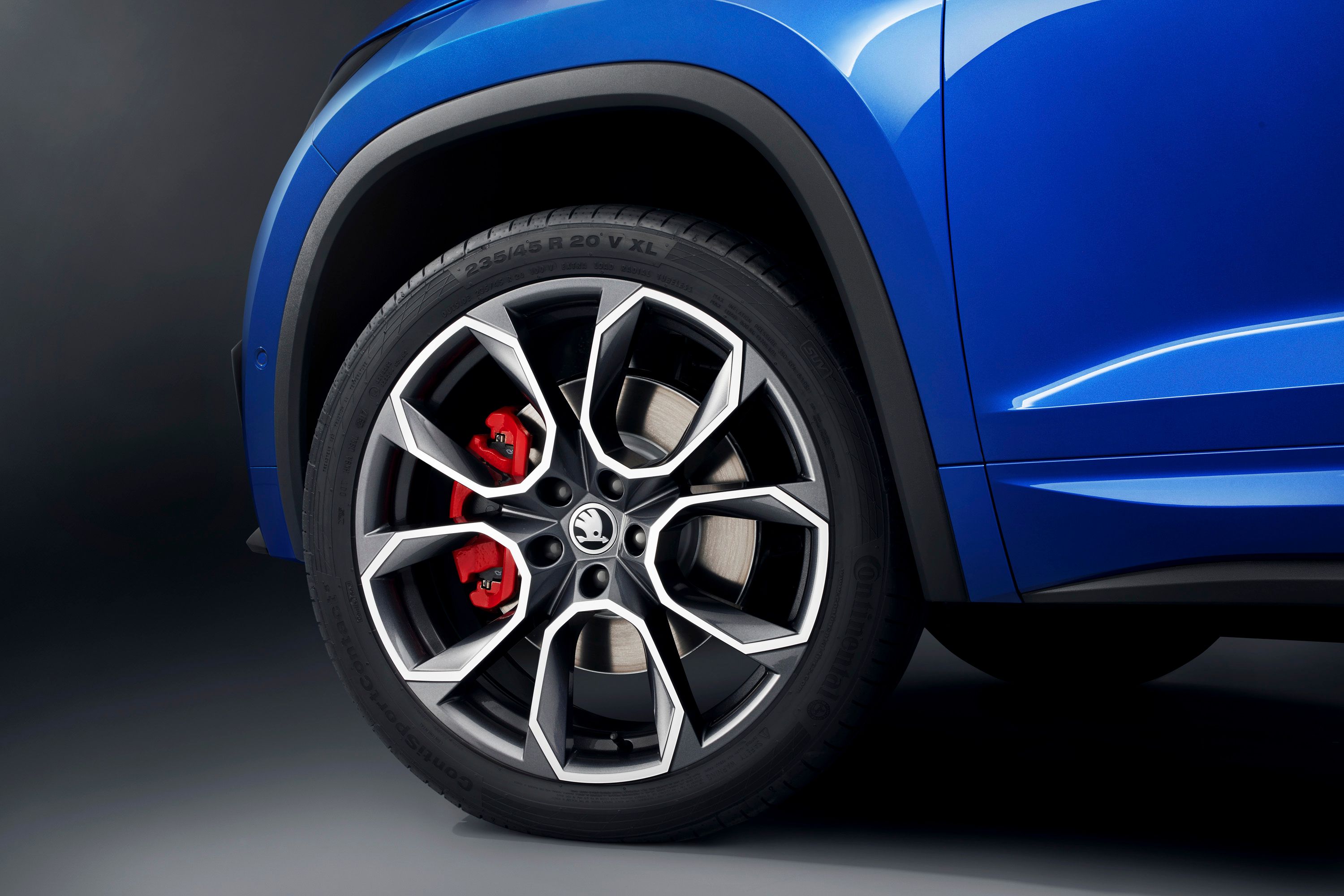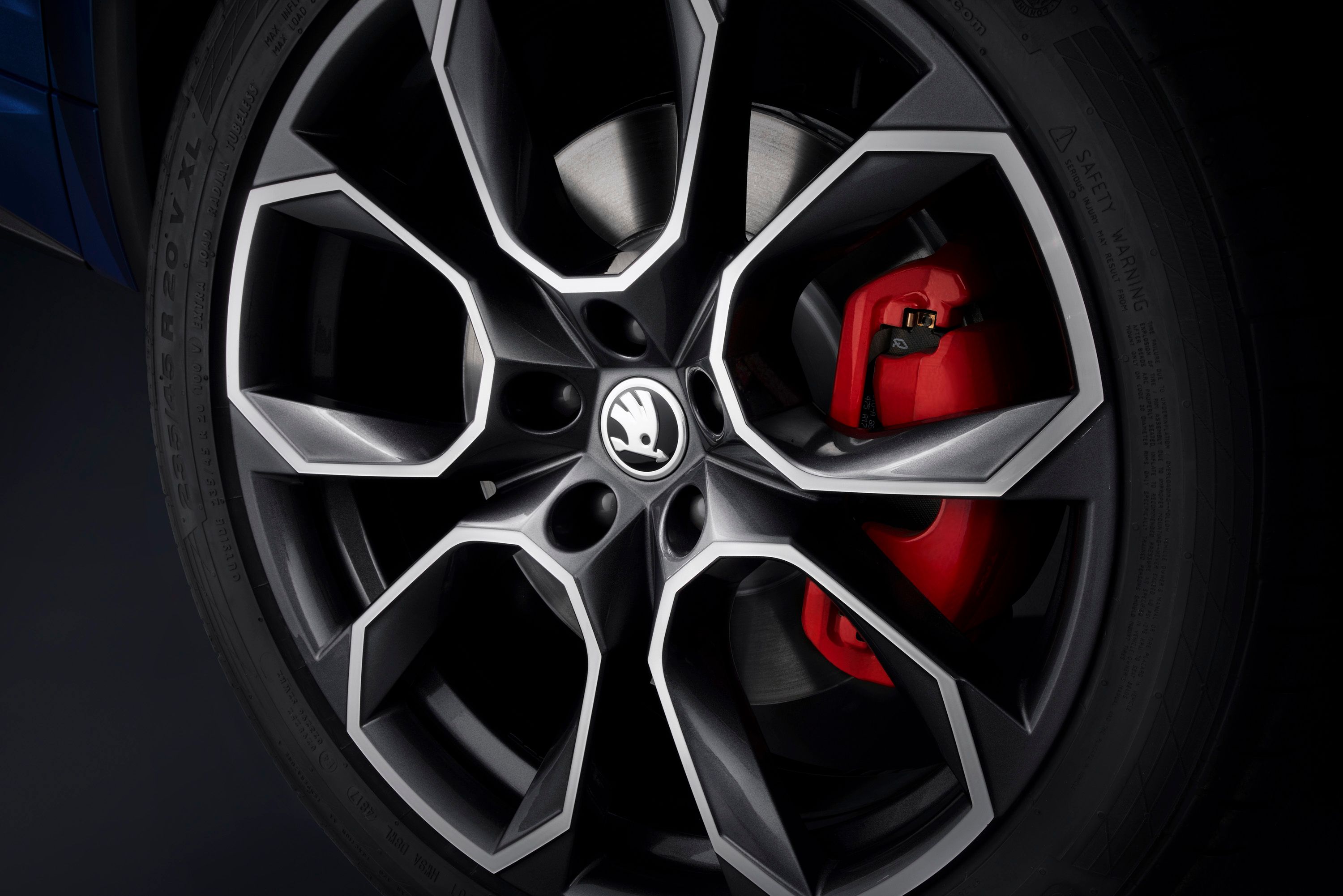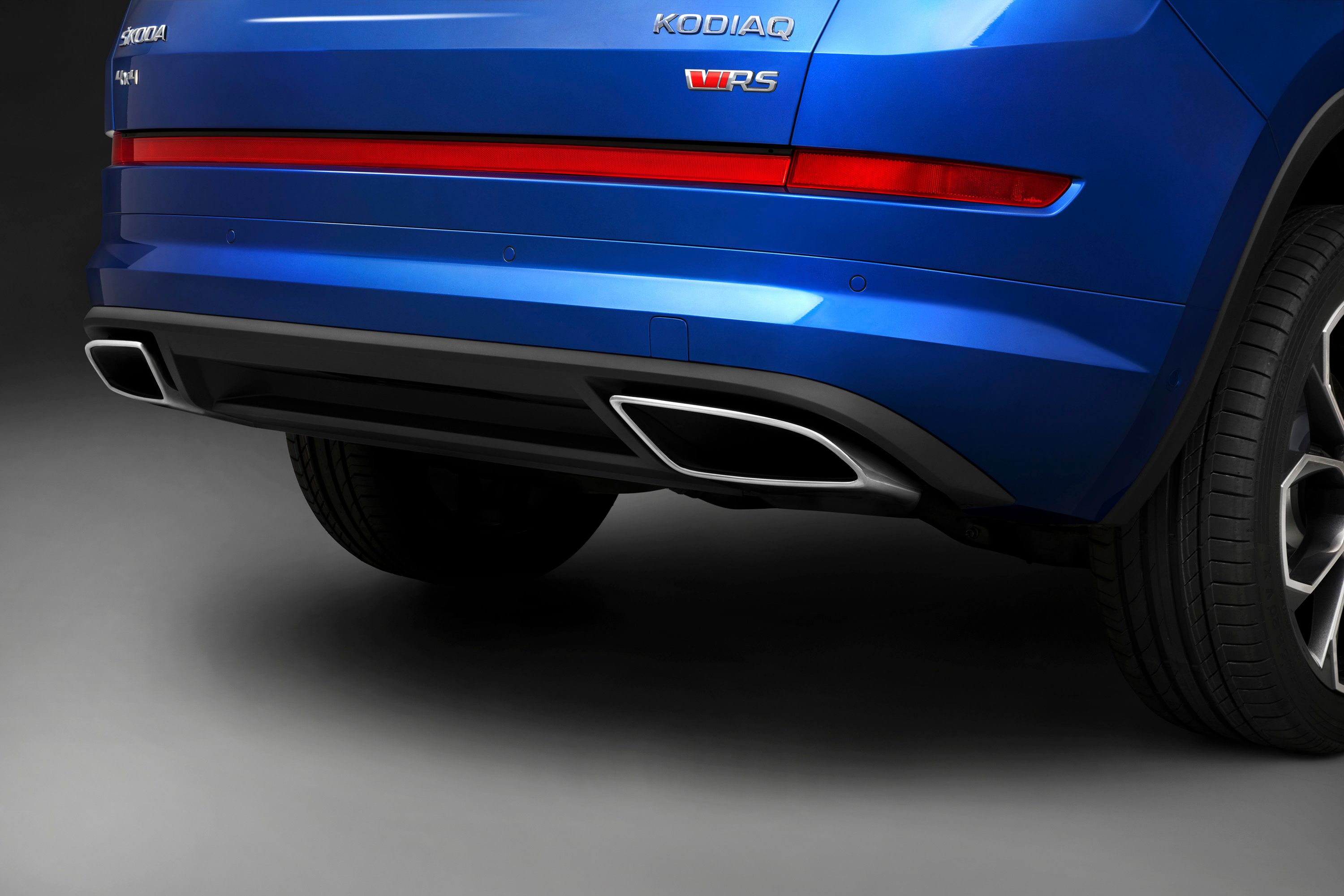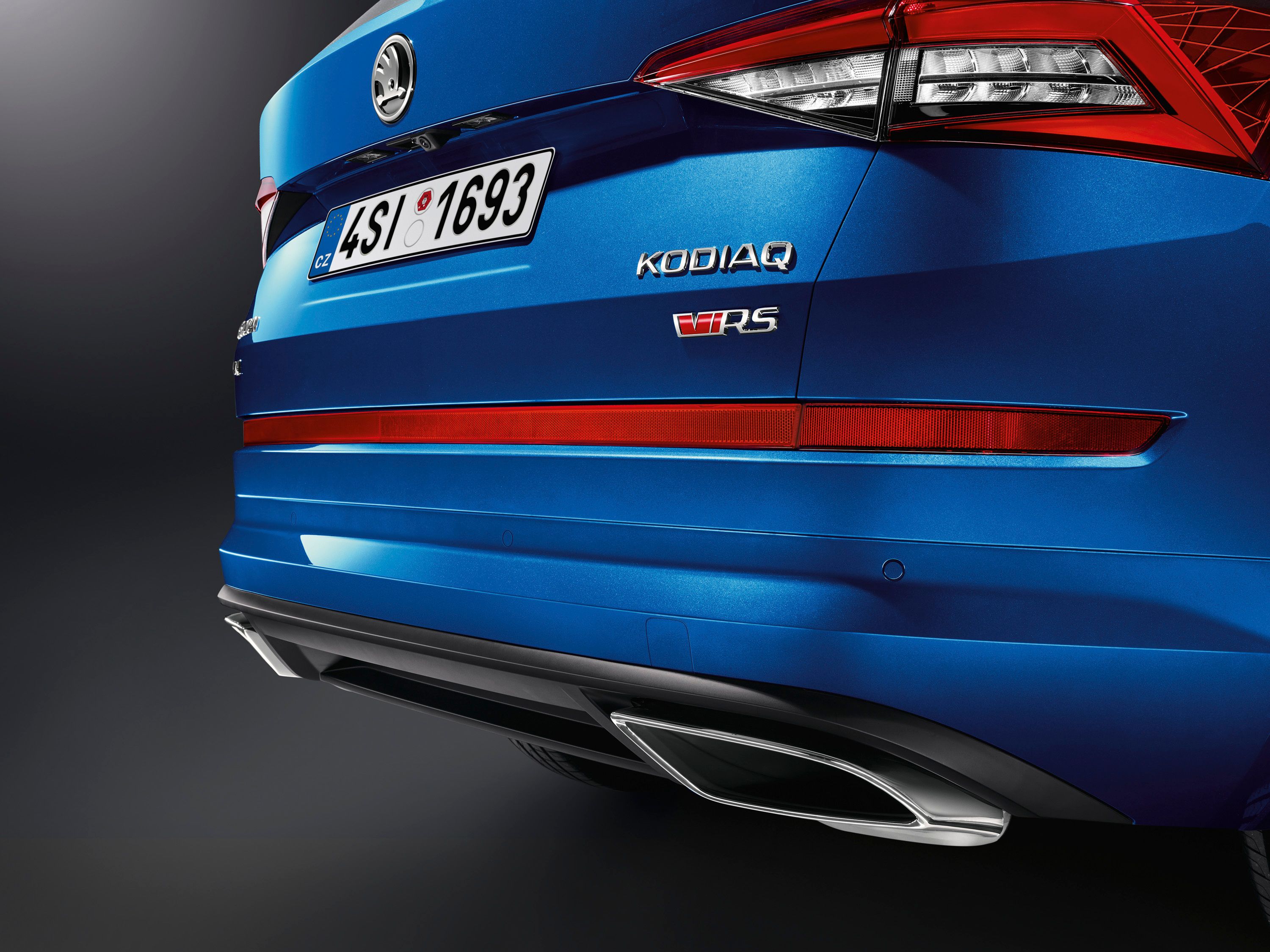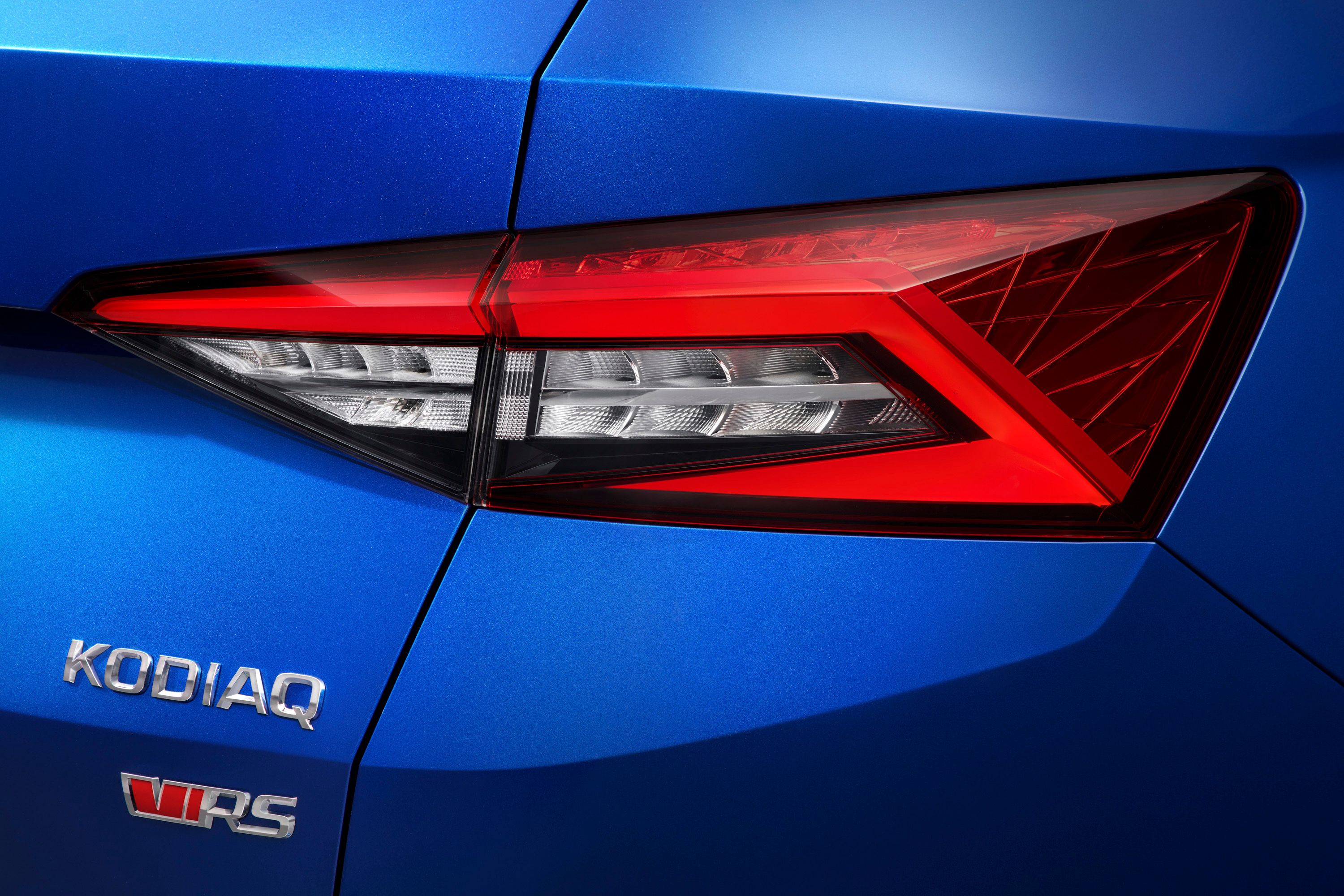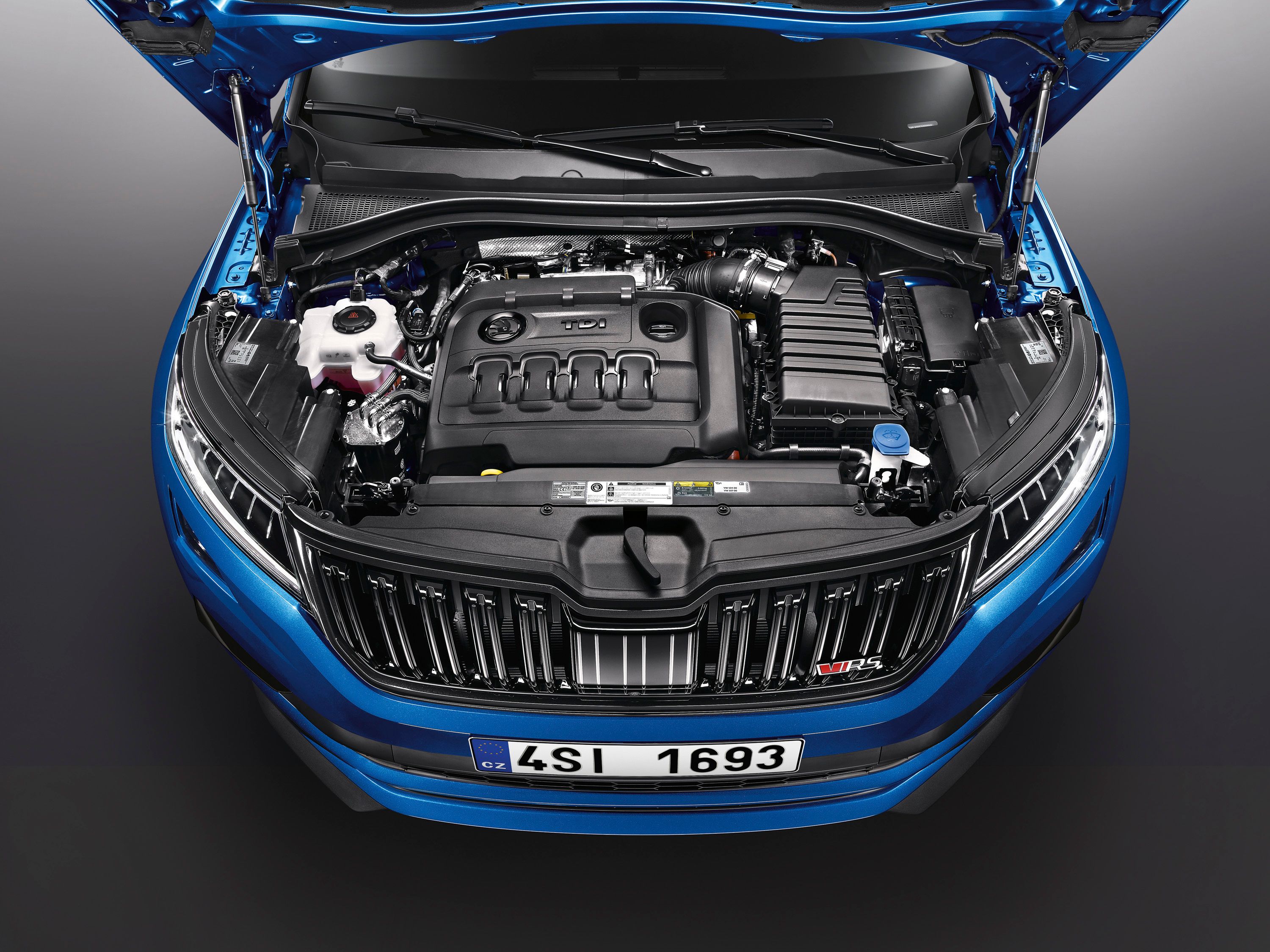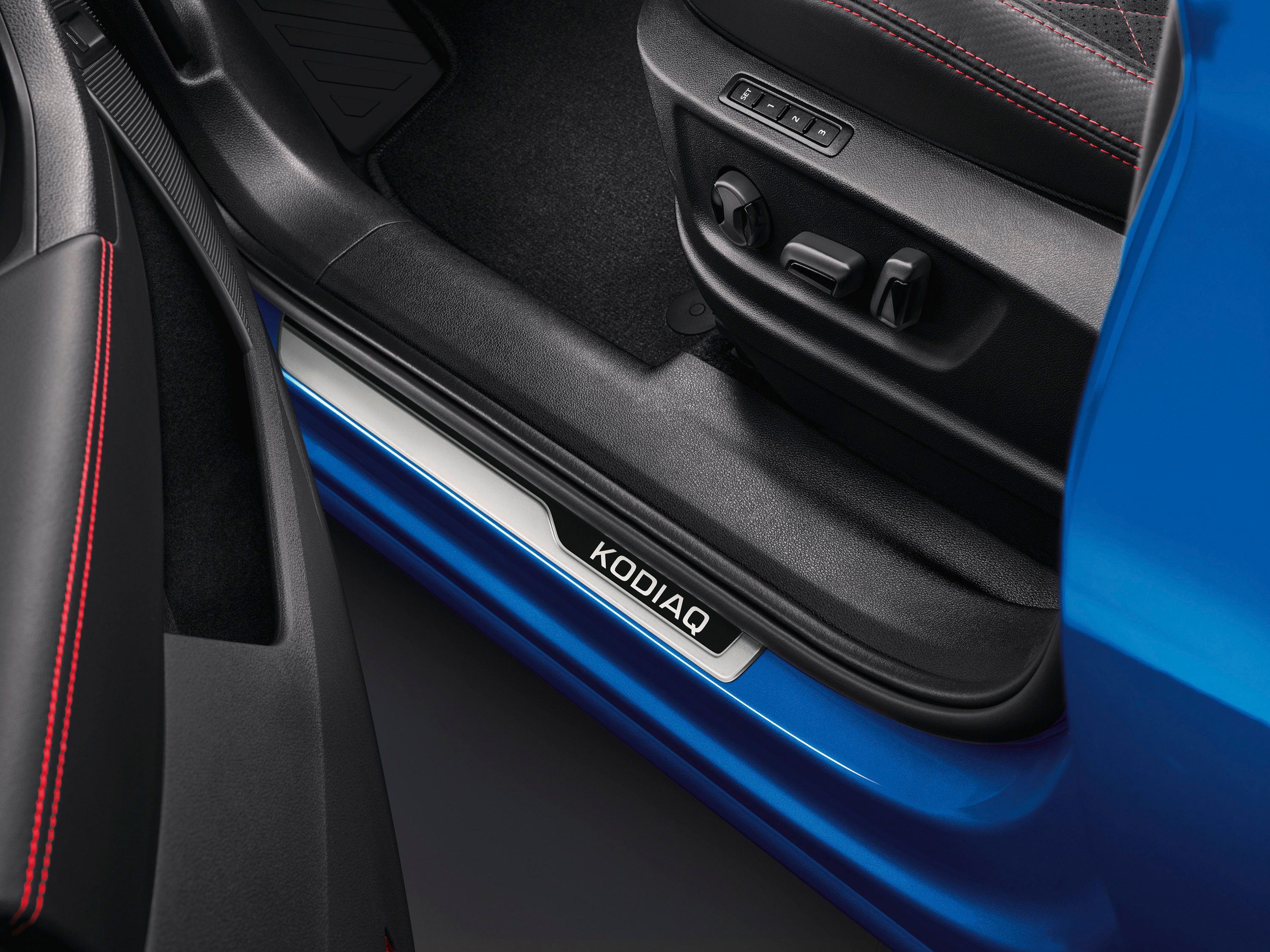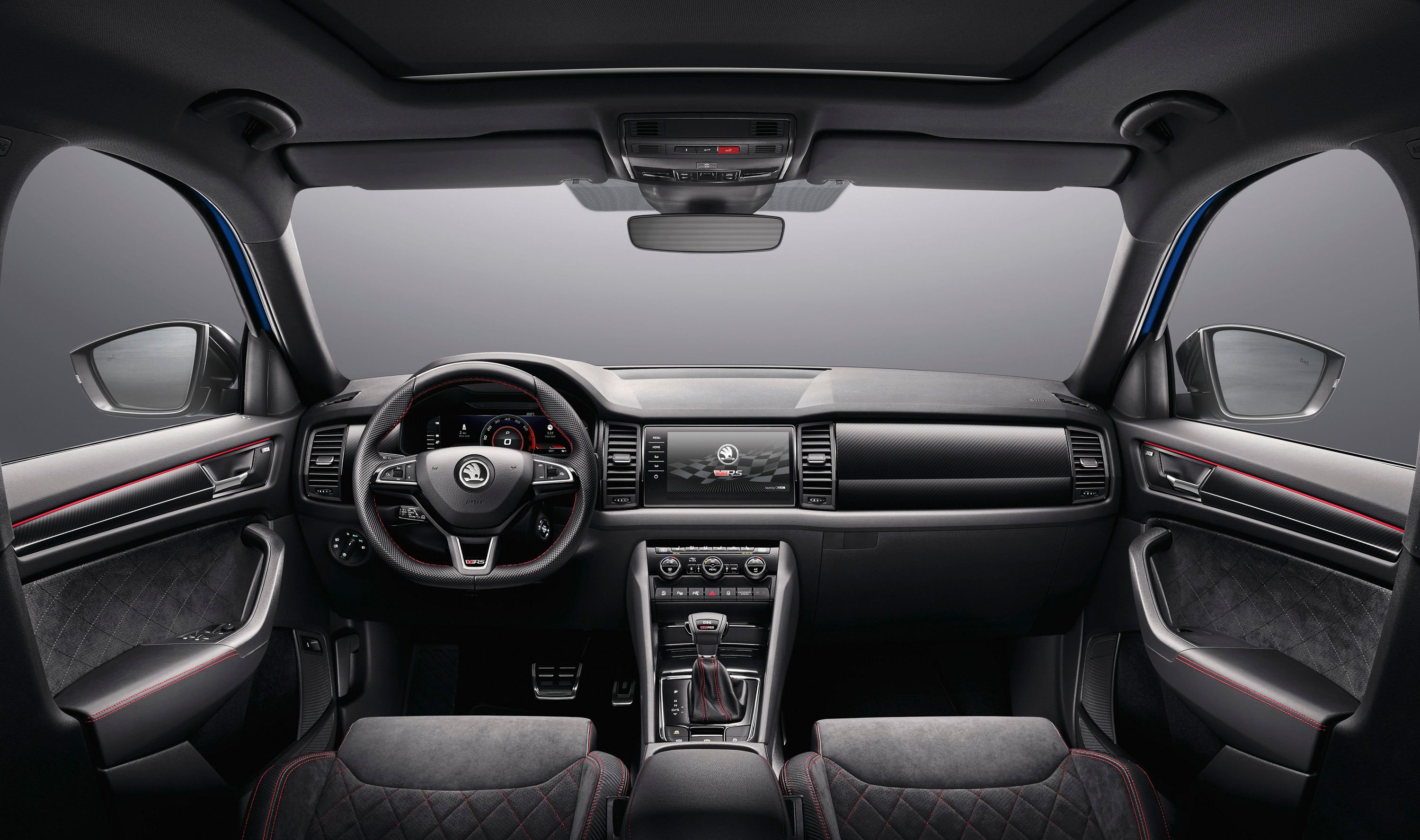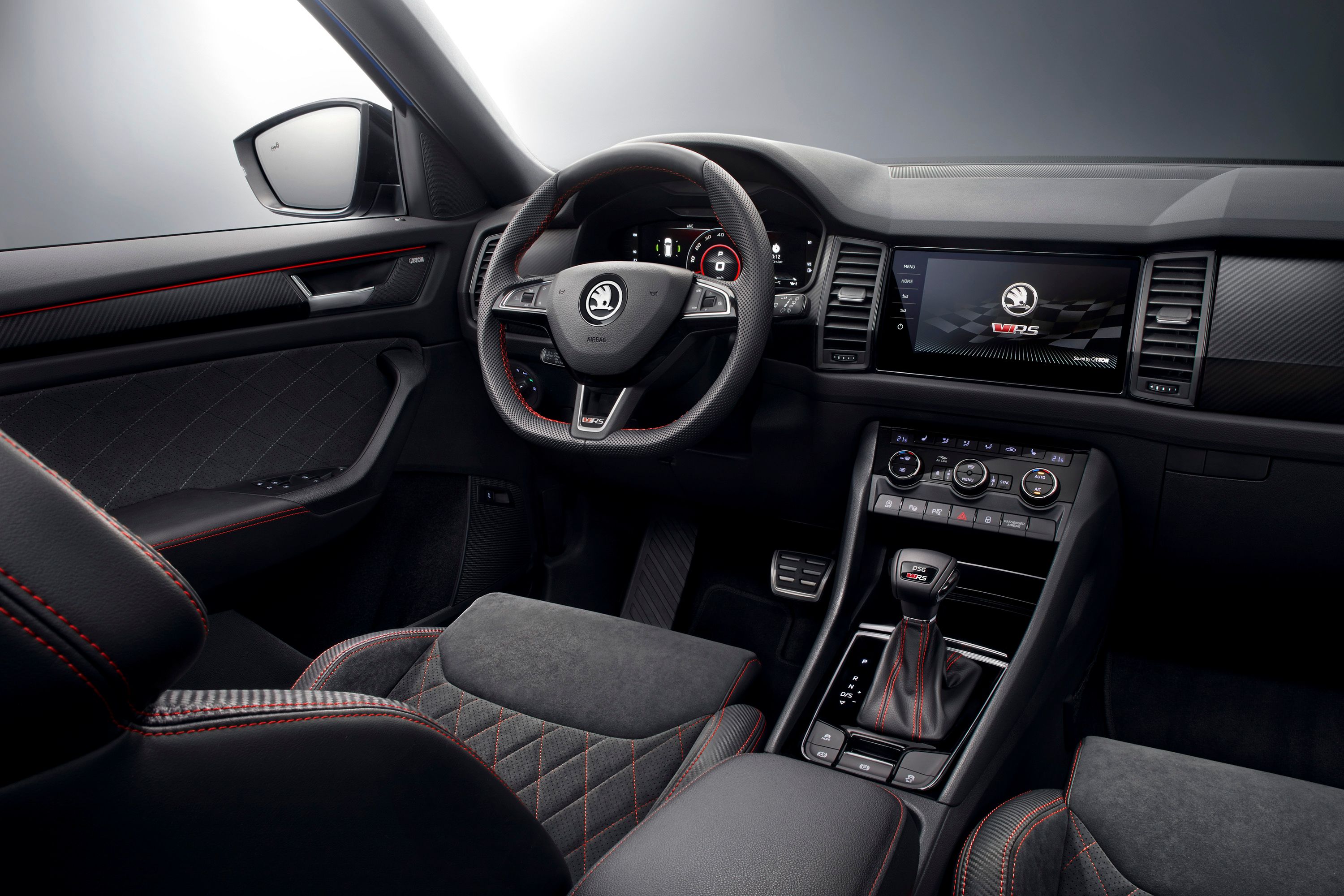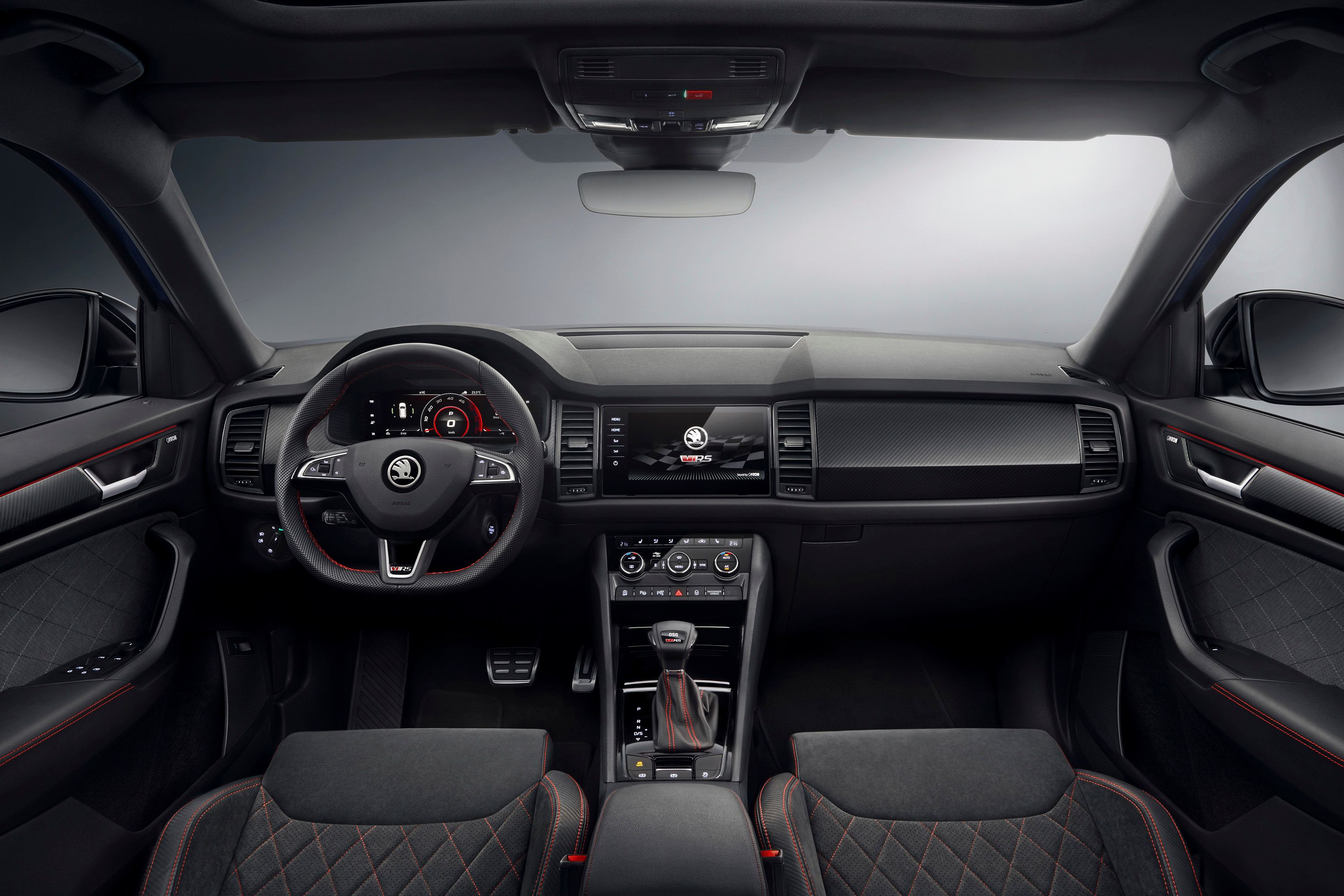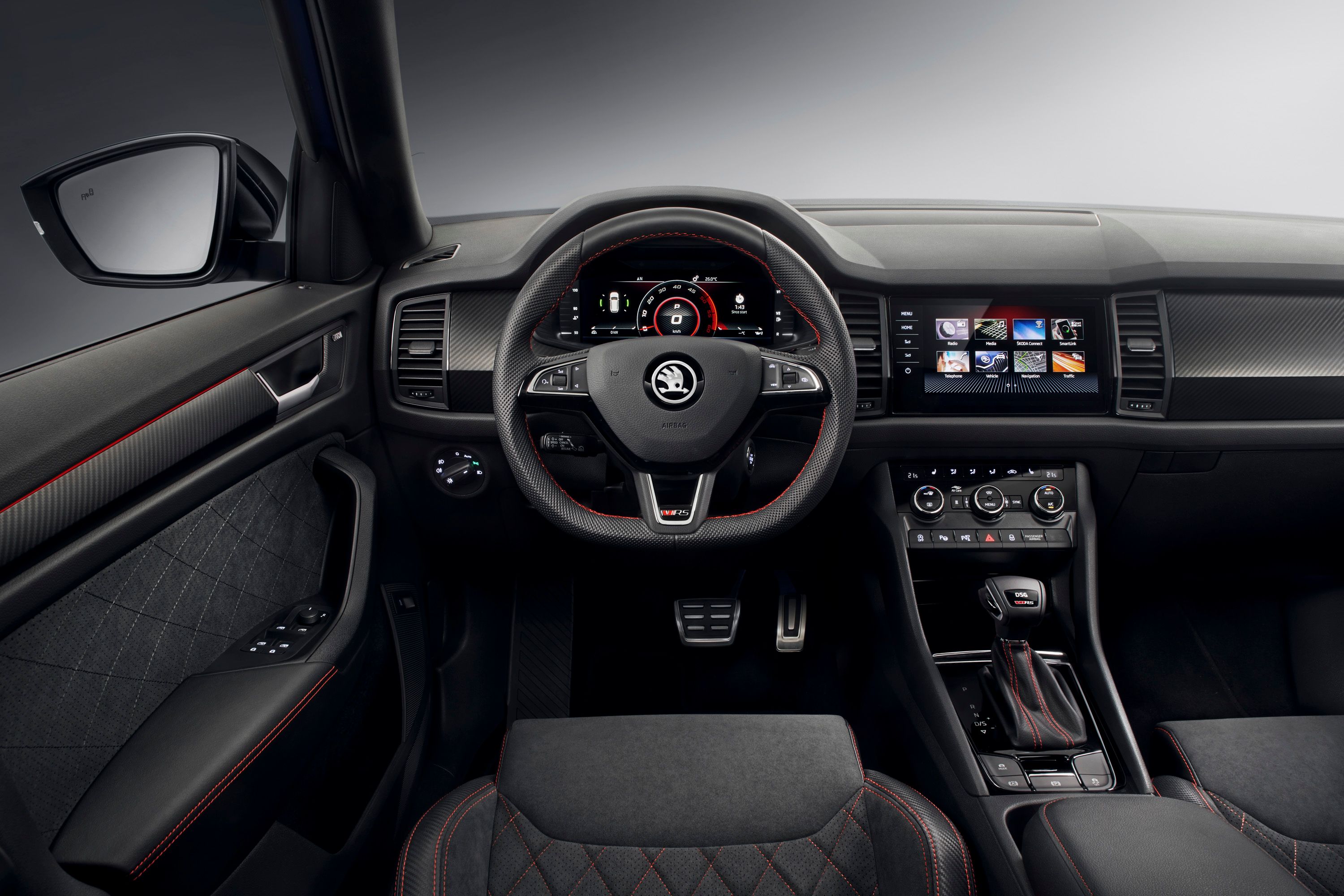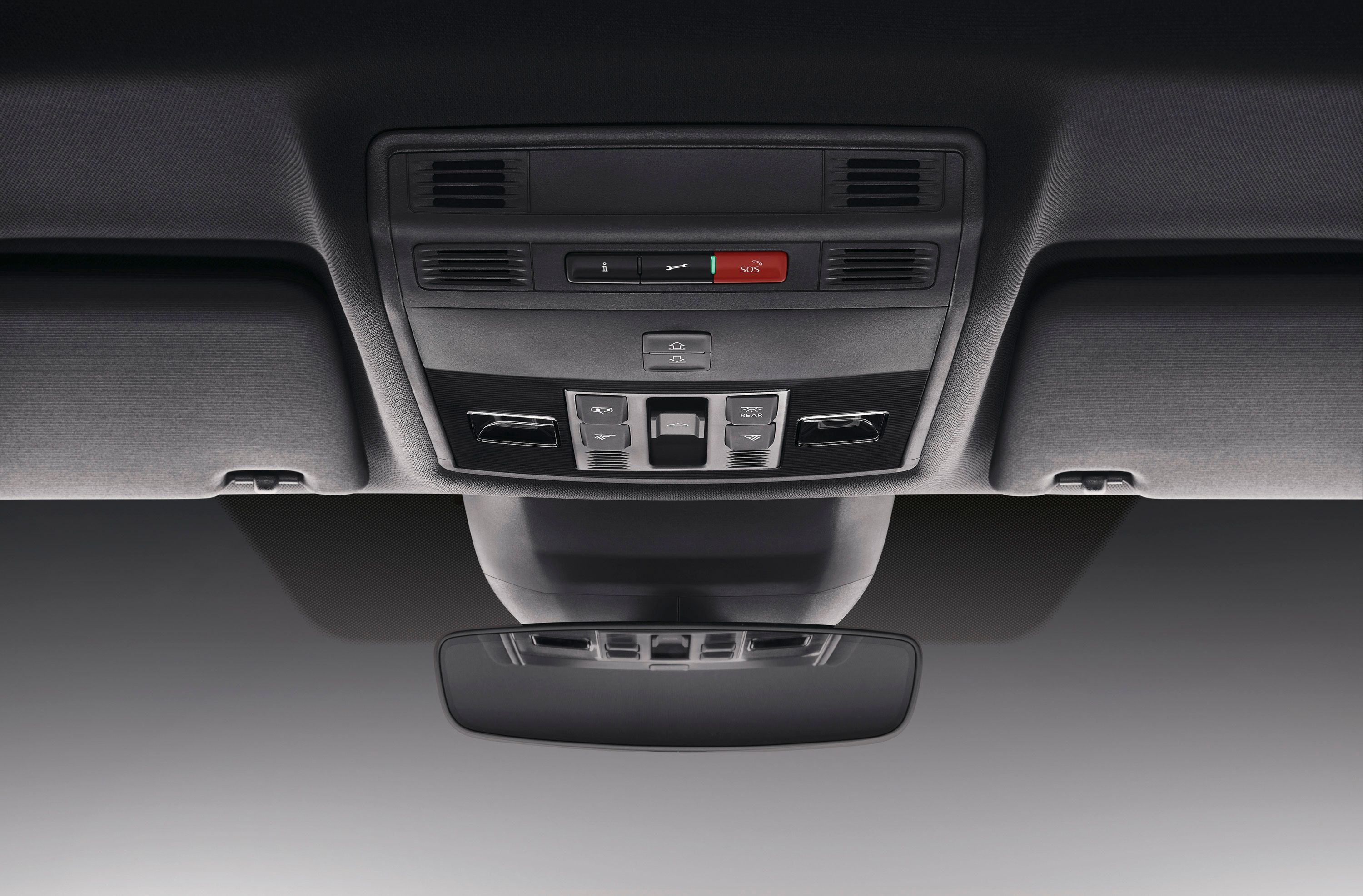The Skoda Kodiaq RS is the company's first SUV to sport the "RS" badge -- made famous by the Octavia in the early 2000s. Unveiled at the 2018 Paris Motor Show, the Kodiaq RS is powered by a diesel engine and it's the quickest seven-seat SUV around the Nurburgring track as of October 2018.
Don't let that benchmark fool you though, Skoda took the record only because no other company raced a seven-seat SUV on the Nordschleife. The Kodiaq RS isn't insanely powerful and needs more than nine minutes to lap the "Green Hell." Still, it's a decent performance-oriented vehicle for the non-premium market and should find its own place in this niche. Let's find out what makes it special in the review below.
Continue reading to learn more about the Skoda Kodiaq RS.
2019 Skoda Kodiaq RS
- Make: Array
- Model: 2019 Skoda Kodiaq RS
- [do not use] Vehicle Model: Array
2019 Skoda Kodiaq RS Exterior
So what sets the RS model apart from the regular Kodiaq? First up, we can notice that Skoda, much like most automakers offering mild performance vehicles, took the black trim route on this one. Up front, the chrome in the grille was replaced by a gloss-black finish. The front bumper was also revised to include sportier features like black inserts at the corners of the upper grille and flics at the outer edges of the splitter.
Both bumper grilles look a bit different too. The big opening now has a horizontal slat that descends toward the corners, while the slim vent below is wider and has sharper edges. On the main grille we can see the new "vRS" badge with sharper letters and an overall more modern design. As before, the "V" is red while the "RS" is chrome.
Moving onto the sides, we can see the gloss-black mirror caps, window trim, and roof rails that give the SUV a sportier look. Skoda also modified the side sills, now with a smaller black insert and the rest of the lower area finished in the same color as the body. A set of RS-exclusive, 20-inch Xtreme alloy wheels round off the profile. Behind them we can notice larger, 17-inch brake rotors and red calipers.
Around back, the RS doesn't stand out as much. The diffuser-like element is only a deeper cutout into the apron, but the larger, chromed exhaust tips are indeed sportier than usual. A red stripe stretches across the lower tailgate to bring the outer lamps together in a Porsche-inspired design element. Everything else carries over unchanged save for the "vRS" badge on the tailgate.
Unlike the regular Kodiaq, the RS comes with LED lights as standard.
Overall, the Kodiaq RS is far from impressive. But while it can't go against vehicles from BMW M and Mercedes-AMG in terms of styling, it's sporty enough when compared to SUVs from the more affordable segment.
2019 Skoda Kodiaq RS Interior
Not surprisingly, the Kodiaq RS' interior isn't very different compared to the standard model, but Skoda added just the right features for a sportier vibe.
Arguably the most important addition are the sportier sits with beefier side bolstering and an exclusive design. Wrapped in Alcantara, they feature a diamond-cross stitching in red and matching thread on the sides. Similar stitching can be seen on the door arm rests with matching stripes on the upper door panel. More red stitching adorns the steering wheel, which also has a flat bottom and a "vRS" badge on the lower spoke.
For a more premium look, Skoda used plastic panels that look like carbon-fiber on the passenger-side dashboard, behind the steering wheel, and for the trim on the door panels. Granted, it doesn't look quite as good as the actual thing, but it's a nice touch in a non-premium vehicle. The digital instrument cluster has revised graphics too. This becomes more noticeable when you drive the SUV in Sport mode, which adds opens up a speedometer with red accents in the center of the screen.
Other upgrades over the regular Kodiaq include black roof lining, stainless steel pedal covers, and blacked-out chrome for the A/C vents. You can order the latter as on option on the non-RS SUV too, but it's included in the standard package here.
The sportier styling doesn't alter the SUV's practicality. Just like the regular Kodiaq, you can buy the RS with either five or seven seats. Likewise, the trunk is just as generous at 600 liters, which converts to 21.2 cubic feet. Fold the seats and capacity grows to an impressive 2,005 liters, or 70.8 cubic feet. That's notably more than the Kodiaq's direct competitors, which offer well below 2,000 liters.
2019 Skoda Kodiaq RS Drivetrain
Initial rumors claimed that Skoda will drop a diesel engine in the RS. Granted, it’s a bit ludicrous to mix a performance badge with an oil burner, but as it turns out, it’s exactly what Skoda was planning all along. The RS arrived with a diesel mill and not a beefed-up version of the 2.0-liter four-cylinder gas engine of the range-topping Kodiaq model.
Already available in two flavors, the 2.0-liter turbodiesel was further upgraded for a bit more oomph. The oil burner now cranks out 240 PS and 500 Nm of torque in the RS, which converts to 237 horsepower and 369 pound-feet of twist. That’s an extra 49 horsepower and 74 pound-feet over the most powerful diesel Kodiaq available right now.
However, this engine isn't exclusive to the Kodiaq RS. Skoda simply borrowed it from the Volkswagen Tiguan, which has the exact same power ratings. A bit disappointing, I know.
Unfortunately, while the upgrade is indeed substantial as far as figures go, it’s the same story as with the previous-gen Octavia RS. While Skoda added a significant amount of oomph compared to the range-topping, non-RS model, the performance-oriented version still lacks the horsepower figures you’d expect from such a car.
Not only a sub-300-horsepower rating is insulting for the "RS" badge, but it’s also inferior to all the other performance-rated crossovers out there. Sadly, Skoda seems happy enough to brag about the Kodiaq RS being the most powerful diesel it has built so far. It’s a decision I can’t understand given that the Volkswagen Group already has more powerful versions of the familiar 2.0-liter gasoline engine.
So what about performance? Well, the Kodiaq RS isn't very quick from 0 to 62, needing seven seconds to get there. It's not painfully slow either though. The SUV reaches its top speed at 220 km/h, or 136 mph.
At least it gets decent torque and an all-wheel-drive system. Plus a revised DSG transmission and a few other goodies, including progressive steering. This device adapts the steering ratio to suit the speed and gives you more control for sportier driving. It also provides additional comfort thanks to reduced steering forces at low speeds and when parking.
Skoda also added adaptive Dynamic Chassis Control with Driving Mode Select. This enables you to optimally adjusts the springs and shock absorbers to suit the terrain and driving style. Six modes are available: Eco, Comfort, Normal, Sport, Individual and Snow.
Because diesels don't sound very aggressive by default, Skoda added a device called Dynamic Sound Boost to enhance the oil burner's note. The system works using data from the in-car electronics to make the vehicle's engine noise a bit throatier. It also works in conjunction with Driving Mode Select, so the powertrain won't sound as aggressive when you're using modes like Eco, Comfort, or Normal.
Somewhat ironically, the Kodiaq RS holds the record for the fastest seven-seat SUV on the Nurburgring. Skoda's benchmark is far from mind-blowing at 9:29.84 seconds, but the Czech automaker can brag about it since no other automaker with a seven-seat SUV attempted such a record. Needless to say, it will fall as soon as premium manufacturers like BMW, Audi, or Mercedes-Benz hit the ring with their seven-seaters.
2019 Skoda Kodiaq RS Prices
Skoda hasn’t released pricing details for the Kodiaq RS, but with the current base unit starting at around £22,000, or just under $30,000, it wouldn’t be a shock to see Skoda tack on a few pounds to send the price up to around £24,000, or around $32,000. For its part, the Kodiaq RS could also see its price elevate to around £40,000, or about $55,000.
2019 Skoda Kodiaq RS Competition
Kia Sorento / Hyundai Santa Fe
Kia doesn't offer a performance version of the Sorento, but the 2.2-liter four-cylinder diesel that's available in Europe isn't significantly less powerful than the vRS. The turbodiesel is rated at 200 PS and 441 Nm, which converts to 197 horsepower and 325 pound-feet. Granted, the Kodiaq vRS offers an extra 39 horses and 44 pound-feet, but is it enough to call the Skoda a performance SUV? Not really. If you're not a big fan of the Sorento, then you can go for the brand-new Hyundai Santa Fe, which features the same engine with the exact same output ratings. Pricing is a key player here. If Skoda manages to keep pricing low, as in similar to these Korean crossovers, the Kodiaq vRS will make sense. If not, it's a matter of whether you actually need the extra oomph.
Read our full review of the 2016 - 2019 Kia Sorento and 2019 Hyundai Santa Fe}
BMW X3
For a long time, Skoda had the misfortune of belonging in a segment populated by hot-selling SUVs. It’s done well for itself in its own way, but the Czech automaker hopes that with the new Kodiaq vRS, it could give its rivals a serious run for their money.
That said, is it fair to put the Kodiaq vRS in the same league as, say, the BMW X3? The latter has the unquestioned edge in prestige and brand status, but the base level X3 really isn’t that far off from the Kodiaq vRS. It has a similarly sized 2.0-liter four-cylinder diesel that produces 258 horsepower, which isn’t far off from the expected power output of the Kodiaq vRS. Where the Czech SUV lags considerably is in the torque department. The X3 30d has 457 pound-feet of torque at its disposal.
On the side of looks, both SUVs have something to be proud about, though at the end of the day, the Skoda will have its work cut out for it if it hopes to get mentioned in the same sentence as the BMW X3. The good news for the Skoda is that even if it may not have the same level of allure as the BMW X3, it can take comfort knowing that it’s priced a lot cheaper than its rival whose prices typically starts at $40,000.
Read our full review on the 2018 BMW X3.
Conclusion
Skoda went to great lengths to expand its portofolio in recent years and the fact that it already has three crossovers in showrooms is a big achievement. An RS-badged SUV was the next logical step and Skoda finally took it. Sure, the Kodiaq RS isn't as fast and powerful as the "RS" badge suggests, but the SUV has great potential among buyers who want a bit more power at an affordable price. If you're in the market for a spacious SUV with good fuel economy, a bit more power than the norm and solid torque, the Kodiaq RS is definitely worth considering.
Further Reading
Read our full review on the 2017 Skoda Kodiaq.
Read more Paris Auto Show news.
Read more Skoda news.


